Choose the right lens for your Sony Alpha with the help of our independent knowledge gained by writing many in-depth reviews.

We have an in-depth knowledge of many of the lenses listed here not only because we have used them, but also because we have reviewed many of them in detail. We are also independent from any lens manufacturer and when you check our reviews you will see that we do not hesitate to name any shortcomings of a lens.
We will also talk about lens aberrations, if you don’t know too much about these terms maybe have a look at our article Lens aberrations explained first.
Originally the idea of this guide was to include all available fullframe E-mount lenses. The number of fullframe E-mount lenses has significantly grown over the years though, so that has become an impossible task.
From now on this article will only include lenses that we find currently recommendable. That will make this article much easier to navigate and read and therefore more valuable. It should also make it easier for us to keep it up to date, as we don’t have to waste a lot of time adding uninteresting or mediocre lenses anymore. I also removed most of the super tele lenses, as we have too little experience with them. The aim is to generally keep this article below 10000 words, which is still a whole lot.
We do also have guides for:
9-18mm ultra wideangle FE lenses
20-28mm wide angle lenses
35mm FE lenses
50mm FE lenses
85-200mm FE portrait lenses
Macro lenses for the FE system
These guides often contain some older lenses not listed here (anymore).
If we have left any question unanswered please leave a comment or contact us on social media and we will do our best to answer it.
Last update: March 2025
A lot of new lenses added, many older/discontinued/outdated lenses removed.
If you purchase the lens or anything else through one of the affiliate-links in this article we get a small compensation with no additional cost to you.
Table of Contents
Contents
Prime lenses
9-16mm
Laowa 9mm 5.6 FF-RL (manual focus, no electronic contacts)
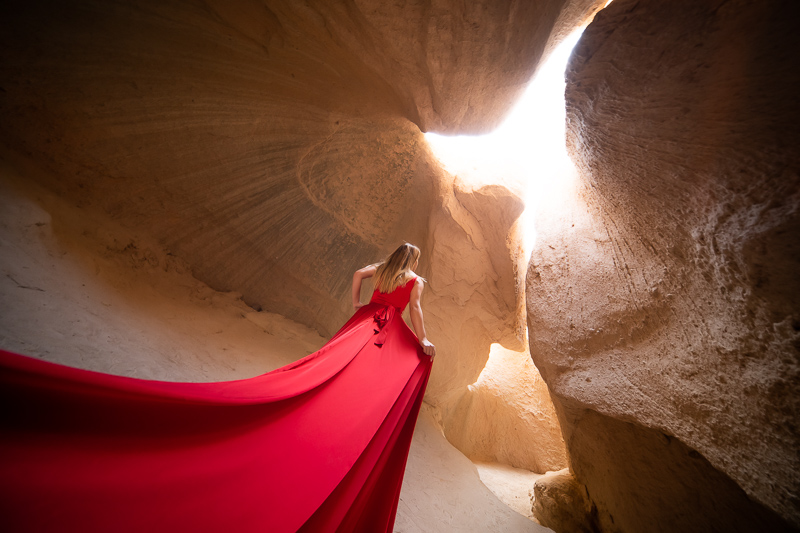
| Strengths | Weaknesses |
|
|
Recommendation: the world’s widest rectilinear lens and a better performer than either Voigtlander 10mm 5.6 E or Laowa 10-18mm 4.5-5.6. The 7Artisans/Brightin Star 9mm 5.6 has less vignetting but despite nominally also being 9mm, that lens is less wide, so I included the Laowa here.
performer than either Voigtlander 10mm 5.6 E or Laowa 10-18mm 4.5-5.6. The 7Artisans/Brightin Star 9mm 5.6 has less vignetting but despite nominally also being 9mm, that lens is less wide, so I included the Laowa here.
Length: 74mm | Diameter: 63mm | Weight: 373g | Filter Thread: – | Released: July 2020 | Price (March 2025): $599
Review | Sample images | manufacturer’s homepage | B&H | ebay.com | ebay.de (affiliate links)
Laowa 10mm 2.8 AF

| Strengths | Weaknesses |
|
|
Recommendation: Benefits over the aforementioned 9mm 5.6 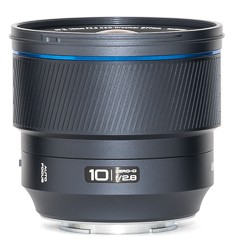 lens are AF, a standard 77mm filter thread and an almost complete absence of color cast in the corners.
lens are AF, a standard 77mm filter thread and an almost complete absence of color cast in the corners.
Length: 82mm | Diameter: 72mm | Weight: 420g | Filter Thread: 77mm | Released: February 2024 | Price (March 2025): $799
Review | Sample images | manufacturer’s homepage | B&H | ebay.com (affiliate links)
Sigma 14mm 1.4 Art DG DN

Sigma specifically markets this as a lens for astrophotography. It is huge and heavy and even two years after its release there is no reliable review available as it is such a specialized tool.
Length: 150mm | Diameter: 101mm | Weight: 1170g | Filter Thread: none | Released: June 2023 | Price (March 2025): $1370
amazon.com | amazon.de | B&H | ebay.com | ebay.de (affiliate links)
Sony FE 14mm 1.8 GM
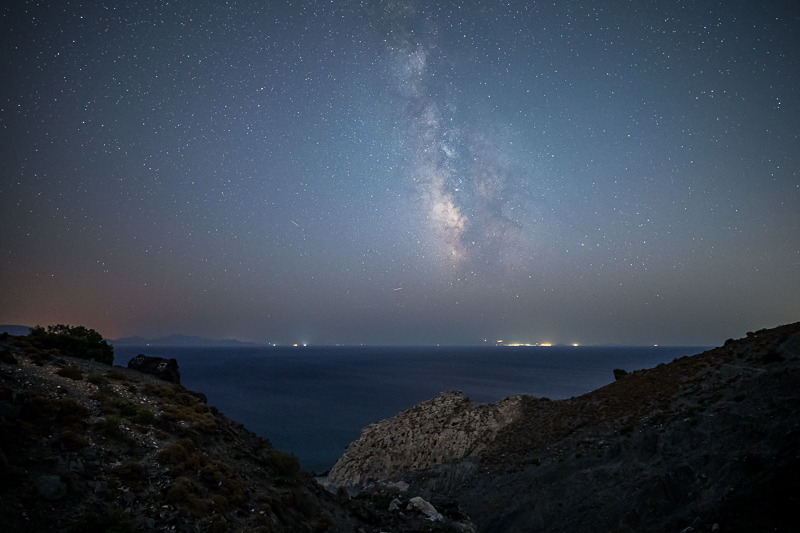
| Strengths | Weaknesses |
|
|
Recommendation: Great lens for single shot landscape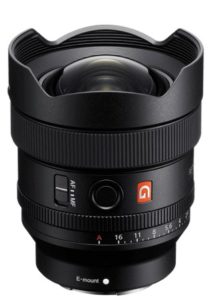 astrophotography and especially for taking pictures of the northern lights where stacking is not an option. Still an expensive niche lens and only worth the asking price if you actually need the f/1.8 maximum aperture.
astrophotography and especially for taking pictures of the northern lights where stacking is not an option. Still an expensive niche lens and only worth the asking price if you actually need the f/1.8 maximum aperture.
Length: 100mm | Diameter: 83mm | Weight: 460g | Filter Thread: – | Released: April 2021 | Price (March 2025): $1498
Review | amazon.com | amazon.de | B&H | ebay (affiliate links)
Laowa 15mm 2.0 FE Zero-D (manual focus, no electronic contacts)
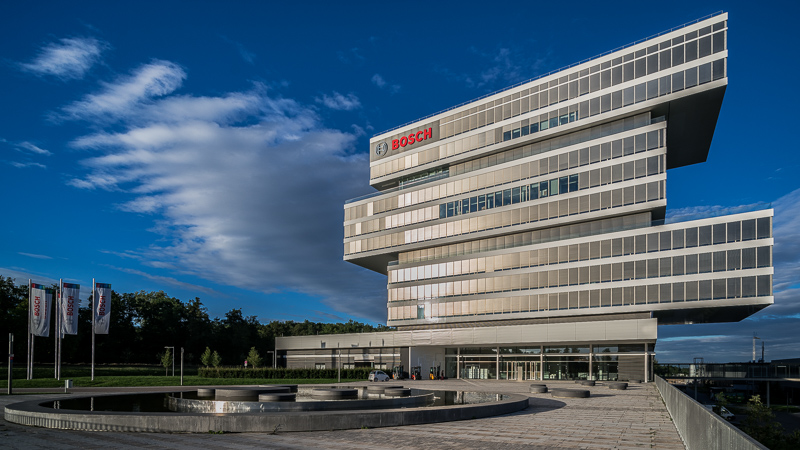
| Strengths | Weaknesses |
|
|
Recommended to: astrophotographers and everyone else looking for a versatile UWA prime.
for a versatile UWA prime.
Later versions feature 5 straight aperture blades for nice sunstars, older ones 7 blades with rather fuzzy ones.
Be sure to also check out the Viltrox 16mm 1.8 AF which shows a better performance in a bigger and slightly cheaper package.
Length: 83.0mm | Diameter: 77mm | Weight: 520g | Filter Thread: 72mm | Released: October 2017 | Price (March 2025): $649
Review | Sample images | manufacturer’s online shop | B&H | amazon.com | amazon.de | ebay.com (affiliate links)
Voigtländer 15mm 4.5 Super Wide Heliar E (manual focus)
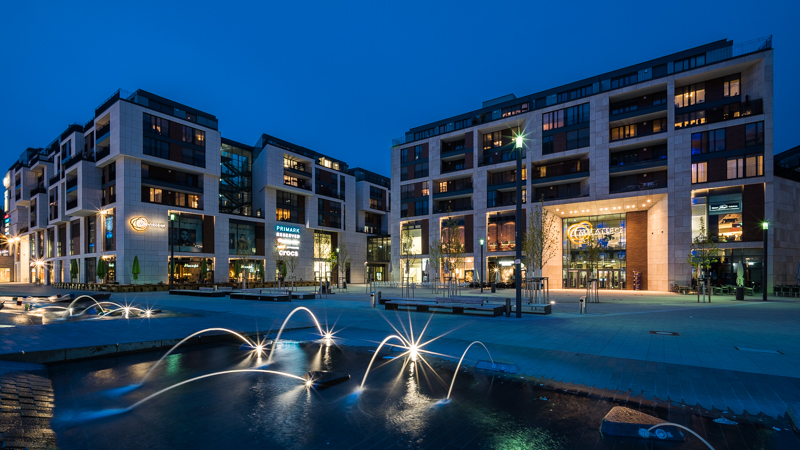
| Strengths | Weaknesses |
|
|
Recommendation: if you are looking for a small but not so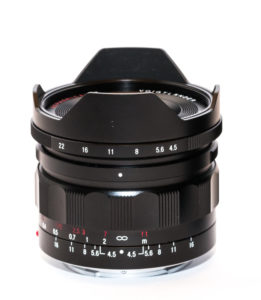 extreme UWA prime with great sunstars this lens might be for you, also check out the next lens
extreme UWA prime with great sunstars this lens might be for you, also check out the next lens
Length: 67mm | Diameter: 66mm | Weight: 294g | Filter Thread: 58mm | Released: March 2016 | Price (March 2025): $549
Review | Full resolution samples | B&H | ebay.com | ebay.de| amazon.com (affiliate links)
Laowa 15mm 5.0 “Cookie” (manual focus)

| Strengths | Weaknesses |
|
|
Recommendation: tiny ultra wide angle lens and a very 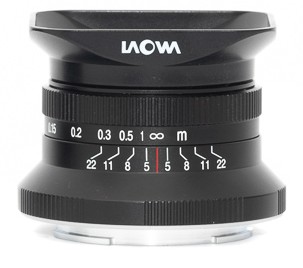 interesting alternative to the aforementioned Voigtländer lens. One of the few Laowa lenses with electronic contacts.
interesting alternative to the aforementioned Voigtländer lens. One of the few Laowa lenses with electronic contacts.
Length: 36mm | Diameter: 60mm | Weight: 135g | Filter Thread: 39mm | Released: April 2024 | Price (March 2025): $399
Review | manufacturer’s shop | B&H | ebay.com | amazon.com (affiliate links)
Viltrox AF 16mm 1.8 FE

| Strengths | Weaknesses |
|
|
Recommendation: Very good performing fast ultra wide angle  lens, good choice for astrophotography, better than the Laowa 15mm 2.0 at the cost of noticeably bigger size. Much better than the price suggests.
lens, good choice for astrophotography, better than the Laowa 15mm 2.0 at the cost of noticeably bigger size. Much better than the price suggests.
Length: 85mm | Diameter: 103mm | Weight: 560g | Filter Thread: 77mm | Released: June 2023 | Price (March 2025): $580
Review | Full resolution samples | manufacturer’s shop | B&H | ebay.com (affiliate links)
17-21mm
Sigma 17mm 4.0 Contemporary DN DN
Recommendation: This is a compact and lightweight lens with 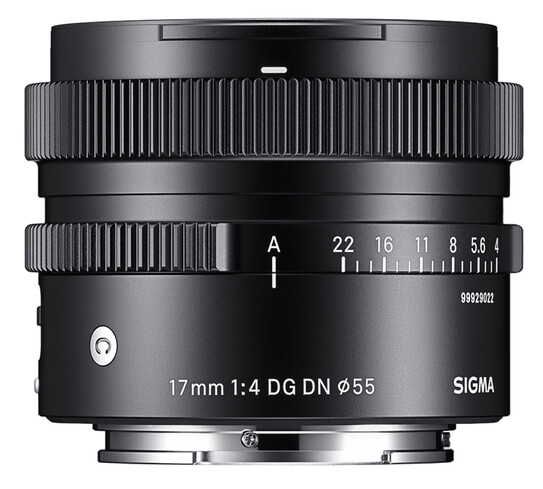 very good sharpness but also very high vignetting. Flare resistance also seems to be good, but its sunstars are nothing to write home about. If you don’t need a faster maximum aperture and you don’t have this focal length covered with a zoom already, this can be an interesting option.
very good sharpness but also very high vignetting. Flare resistance also seems to be good, but its sunstars are nothing to write home about. If you don’t need a faster maximum aperture and you don’t have this focal length covered with a zoom already, this can be an interesting option.
Length: 64mm | Diameter: 51mm | Weight: 220g | Filter Thread: 55mm | Released: April 2023 | Price (March 2025): $549
amazon.de | amazon.com | ebay.com | ebay.de | B&H (affiliate links)
Zeiss 18mm 2.8 Batis
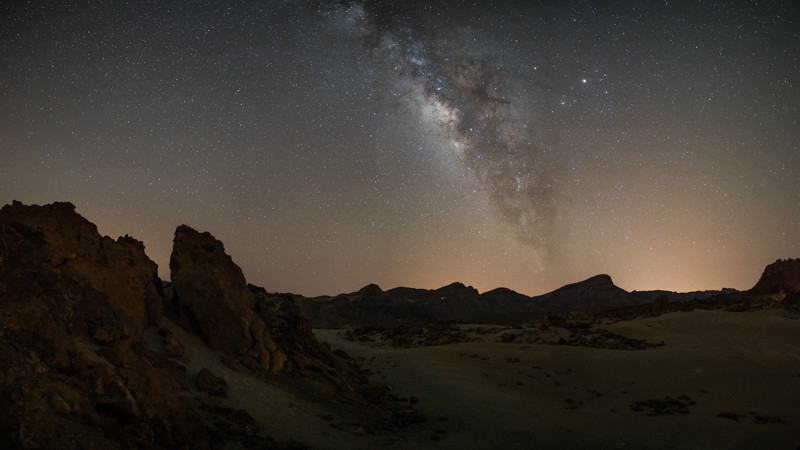
| Strengths | Weaknesses |
|
|
Recommendation: If you are looking for a great performing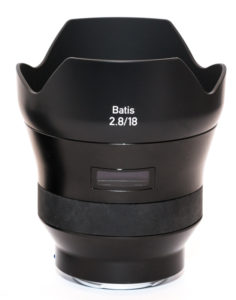 modern UWA with AF and don’t mind the high price. The Tamron 17-28mm 2.8 is a more flexible lens at roughly half the price though.
modern UWA with AF and don’t mind the high price. The Tamron 17-28mm 2.8 is a more flexible lens at roughly half the price though.
Length: 80mm | Diameter: 100mm | Weight: 330g | Filter Thread: 77mm | Released: April 2016 | Price (March 2025): $1400
Review | Full resolution samples | amazon.com | ebay.com | B&H | amazon.de
(affiliate links)
Samyang AF 18mm 2.8 FE
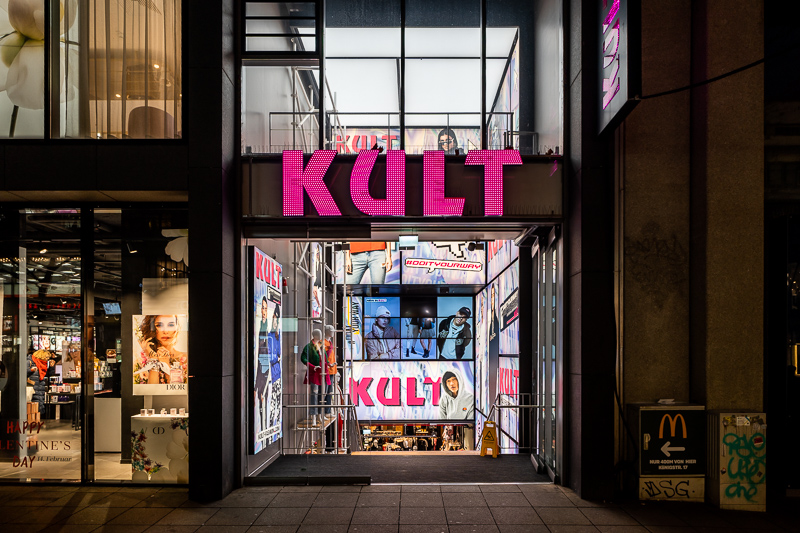
| Strengths | Weaknesses |
|
|
Recommendation: not the highest quality lens in this focal length range, but a very affordable and small one that even comes with AF. Those that don’t want to delve into astrophotography or only rarely need an ultra wide angle lens might end up being very happy with it. Check for decent centering though, our first review sample was decentered and we had to send it back.
range, but a very affordable and small one that even comes with AF. Those that don’t want to delve into astrophotography or only rarely need an ultra wide angle lens might end up being very happy with it. Check for decent centering though, our first review sample was decentered and we had to send it back.
Length: 61mm | Diameter: 64mm | Weight: 145g | Filter Thread: 58mm | Released: August 2019 | Price (March 2025): $320
Review | amazon.com | amazon.de | B&H | ebay.com (affiliate links)
Sigma Art 20mm 1.4 DG DN
| Strengths | Weaknesses |
|
|
Recommendation: a big improvement of the older DSLR version (see next entry) but due to the huge vignetting and much bigger size and weight the Sony FE 20mm 1.8G is the better choice for pretty much anyone
(see next entry) but due to the huge vignetting and much bigger size and weight the Sony FE 20mm 1.8G is the better choice for pretty much anyone
Length: 111mm | Diameter: 88mm | Weight: 635g | Filter Thread: 82mm | Released: August 2022 | Price (March 2025): $899
Lenstip review | amazon.com | amazon.de | B&H | ebay.com (affiliate links)
Sony FE 20mm 1.8 G
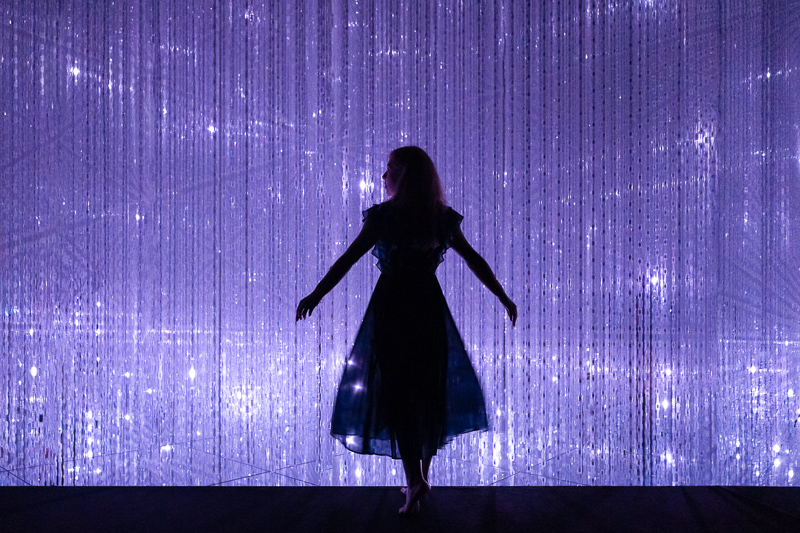
| Strengths | Weaknesses |
|
|
Recommendation: a really great lens which was unfortunately a little late to the party as many of us already bought lenses like the Zeiss Loxia 21mm 2.8 or Sony FE 24mm 1.4 GM before. If you don’t have any of these (or similar) lenses already – but you are looking for one – the 20mm 1.8 G should certainly be on top of your list of lenses to consider.
little late to the party as many of us already bought lenses like the Zeiss Loxia 21mm 2.8 or Sony FE 24mm 1.4 GM before. If you don’t have any of these (or similar) lenses already – but you are looking for one – the 20mm 1.8 G should certainly be on top of your list of lenses to consider.
Length: 85mm | Diameter: 74mm | Weight: 373g | Filter Thread: 67mm | Released: February 2020 | Price (January 2023): $798
Review | amazon.com | amazon.de | B&H | ebay.com (affiliate links)
Sigma 20mm 2.0 Contemporary DG DN
| Strengths | Weaknesses |
|
|
Recommendation: the best cheaper alternative to the Sony FE 20mm 1.8G
20mm 1.8G
Length: 74mm | Diameter: 70mm | Weight: 370g | Filter Thread: 62mm | Released: February 2022 | Price (March 2025): $699
Lenstip review | amazon.com | amazon.de | B&H | ebay.com | ebay.de (affiliate links)
Voigtländer 21mm 1.4 Nokton E (manual focus)
| Strengths | Weaknesses |
|
|
Recommendation: The vignetting figures are record breaking high, so it isn’t a great choice for astrophotography. Only recommended if you really need the f/1.4, otherwise the Sony FE 20mm 1.8 G is a smarter choice.
high, so it isn’t a great choice for astrophotography. Only recommended if you really need the f/1.4, otherwise the Sony FE 20mm 1.8 G is a smarter choice.
Length: 80mm | Diameter: 70mm | Weight: 540g | Filter Thread: 62mm | Released: May 2019 | Price (March 2025): $899
Review | Amazon.com | Amazon.de | B&H | ebay.com (affiliate links)
Zeiss 21mm 2.8 Loxia (manual focus)
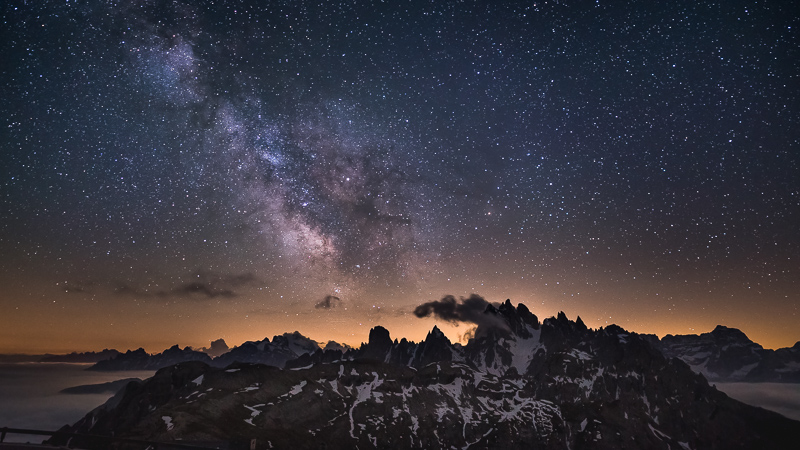
| Strengths | Weaknesses |
|
|
Recommended to: If you like manual focus and distinct sunstars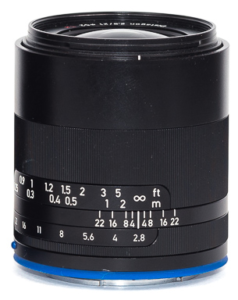 this is still a very good choice. If neither is the case be sure to check out the Sony FE 20mm 1.8 G.
this is still a very good choice. If neither is the case be sure to check out the Sony FE 20mm 1.8 G.
Length: 72mm | Diameter: 62mm | Weight: 394g | Filter Thread: 52mm | Released: October 2015 | Price (March 2025): $1549
Review | Sample Images | Amazon.com | Amazon.de | B&H | ebay.com | ebay.de (affiliate links)
24-28mm
Sony FE 24mm 1.4 GM
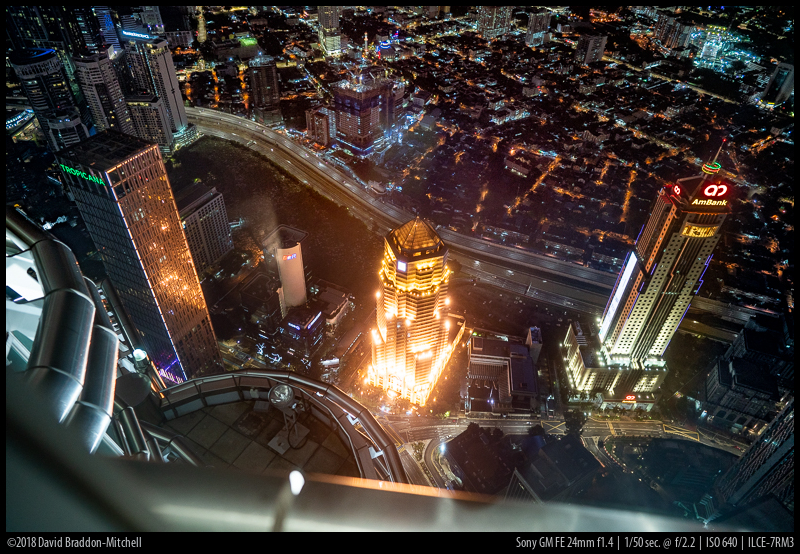
| Strengths | Weaknesses |
|
|
Recommendation: if you need a 24mm 1.4 for environmental portraits or astrophotography this is probably the best money can buy. Surprisingly small and lightweight for what it is.
portraits or astrophotography this is probably the best money can buy. Surprisingly small and lightweight for what it is.
Length: 92mm | Diameter: 75 mm | Weight: 445g | Filter Thread: 67mm | Released: September 2018 | Price (March 2025): $1298
Review | amazon.com | amazon.de | B&H | ebay.com | ebay.de (affiliate links)
Sigma 24mm 1.4 Art DG DN
| Strengths | Weaknesses |
|
|
Recommendation: a cheaper alternative to the Sony FE 24mm 1.4 GM, before spending 800 bucks on a new Sigma may consider getting a used Sony instead though
1.4 GM, before spending 800 bucks on a new Sigma may consider getting a used Sony instead though
Length: 96mm | Diameter: 76mm | Weight: 520g | Filter Thread: 72mm | Released: August 2018 | Price (March 2025): $789
Cameralabs Review | Amazon.com | Amazon.de | B&H | ebay.com | ebay.de (affiliate links)
Samyang AF 24mm 1.8 FE
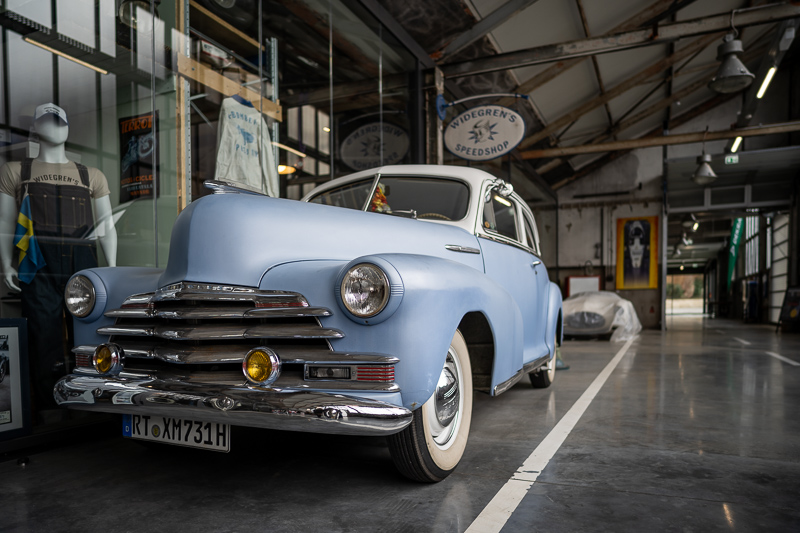
| Strengths | Weaknesses |
|
|
Recommendation: If you don’t care too much about having an aperture ring or nice metal finish but rather want to save some weight and money you may prefer this over the Sigma C 24mm 2.0 DG DN.
aperture ring or nice metal finish but rather want to save some weight and money you may prefer this over the Sigma C 24mm 2.0 DG DN.
Length: 72mm | Diameter: 65mm | Weight: 230g | Filter Thread: 58mm | Released: April 2021 | Price (March 2025): $399
Review | Amazon.com | Amazon.de | B&H | ebay.com (affiliate links)
Sigma 24mm 2.0 Contemporary DG DN
| Strengths | Weaknesses |
|
|
Recommendation: A very well balanced lens and therefore a nice, cheaper alternative to the Sony FE 24mm 1.4 GM. Also for most a better choice than the one stop slower Sony FE 24mm 2.8 G and especially the overpriced Zeiss Batis 25mm 2.0.
nice, cheaper alternative to the Sony FE 24mm 1.4 GM. Also for most a better choice than the one stop slower Sony FE 24mm 2.8 G and especially the overpriced Zeiss Batis 25mm 2.0.
Length: 74mm | Diameter: 70mm | Weight: 360g | Filter Thread: 62mm | Released: September 2021 | Price (March 2025): $639
Lenstip Review | Amazon.com | Amazon.de | B&H | ebay.com (affiliate links)
Sony FE 24mm 2.8 G
| Strengths | Weaknesses |
|
|
Recommendation: A solid small lens with shortcomings that won’t bother most users in everyday shooting but a bit on the expensive side
bother most users in everyday shooting but a bit on the expensive side
Length: 45mm | Diameter: 60mm | Weight: 162g | Filter Thread: 49mm | Released: March 2021 | Price (March 2025): $548
Lenstip Review | Amazon.com | Amazon.de | B&H | ebay.com (affiliate links)
Sigma 24mm 3.5 Contemporary DG DN
| Strengths | Weaknesses |
|
|
Recommendation: A good lens, but then it is slower than many zoom lenses offering a 24mm setting and for $90 more you get the Sigma C 24mm 2.0 DG DN which is 1 1/2 stops faster while only being 130g heavier. If you are on a budget or you are looking for the smallest/lightest 24mm lens with AF there is still the Sony FE 24mm 2.8 G, Samyang 24mm 2.8 AF and the Tamron 24mm 2.8, so in the end this Sigma doesn’t look super appealing to us.
zoom lenses offering a 24mm setting and for $90 more you get the Sigma C 24mm 2.0 DG DN which is 1 1/2 stops faster while only being 130g heavier. If you are on a budget or you are looking for the smallest/lightest 24mm lens with AF there is still the Sony FE 24mm 2.8 G, Samyang 24mm 2.8 AF and the Tamron 24mm 2.8, so in the end this Sigma doesn’t look super appealing to us.
Length: 64mm | Diameter: 51mm | Weight: 230g | Filter Thread: 58mm | Released: December 2020 | Price (March 2025): $499
Lenstip Review | Amazon.com | Amazon.de | B&H | ebay.com (affiliate links)
Laowa 28mm 1.2 Argus (manual focus, no electronic contacts)

| Strengths | Weaknesses |
|
|
Recommendation: very contrasty already at f/1.2 and that in  combination with its wide angle bokeh is really good for creating the illusion of depth in environmental portraits. Surprisingly good correction of most optical aberrations for an f/1.2 lens.
combination with its wide angle bokeh is really good for creating the illusion of depth in environmental portraits. Surprisingly good correction of most optical aberrations for an f/1.2 lens.
Length: 89mm | Diameter: 67mm | Weight: 550g | Filter Thread: 62mm | Released: March 2023 | Price (March 2025): $599
Review | Sample images | manufacturer’s shop | B&H (affiliate links)
Sigma 28mm 1.4 Art DG HSM (former DSLR design)

| Strengths | Weaknesses |
|
|
Recommendation: A lens for those who put performance above weight, size or price. Still no alternative that has actually been designed for mirrorless cameras from scratch is available.
weight, size or price. Still no alternative that has actually been designed for mirrorless cameras from scratch is available.
Length: 134mm | Diameter: 83mm | Weight: 925g | Filter Thread: 77mm | Released: December 2018 | Price (March 2025): $699
Review | Amazon.com | Amazon.de | B&H | ebay.com (affiliate links)
Voigtländer 28mm 1.5 Nokton E (manual focus)

| Strengths | Weaknesses |
|
|
Recommendation: because this lens has originally been 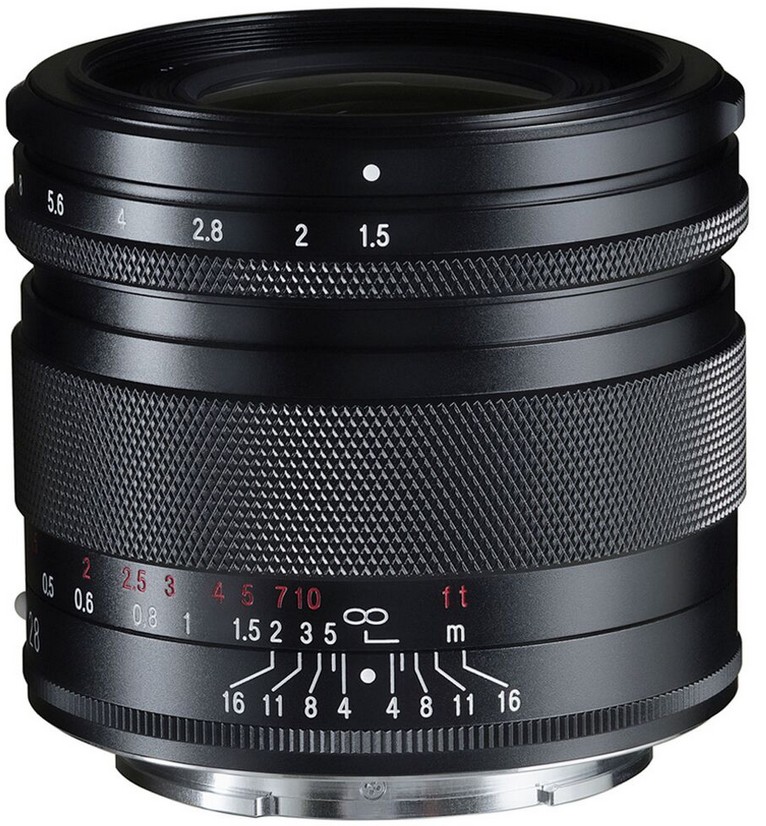 designed for M-mount, it features unnecessarily small elements leading to high vignetting. Apart from that a very appealing, compact yet fast 28mm lens.
designed for M-mount, it features unnecessarily small elements leading to high vignetting. Apart from that a very appealing, compact yet fast 28mm lens.
Length: 55mm | Diameter: 63mm | Weight: 320g | Filter Thread: 49mm | Released: February 2025 | Price (March 2025): $799
Review | B&H | ebay.com | ebay.de (affiliate links)
Viltrox AF 28mm 1.8 FE

| Strengths | Weaknesses |
|
|
Recommendation: an affordable 28mm lens with appealing 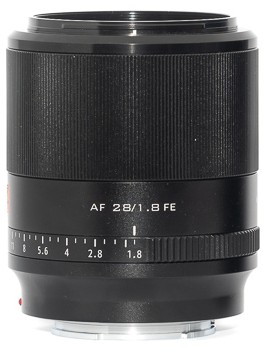 bokeh, sadly it is noticeably bigger, heavier and more expensive than Sony’s 28mm 2.0
bokeh, sadly it is noticeably bigger, heavier and more expensive than Sony’s 28mm 2.0
Length: 84mm | Diameter: 70mm | Weight: 366g | Filter Thread: 55mm | Released: June 2023 | Price (March 2025): $379
Review | manufacturer’s shop (use the code “PRnet” for 8% discount) | B&H | ebay.com (affiliate links)
Sony FE 28mm 2.0

| Strengths | Weaknesses |
|
|
Recommendation: for those looking for a cheap and compact  28mm lens with AF
28mm lens with AF
Length: 60mm | Diameter: 60mm | Weight: 200g | Filter Thread: 49mm | Released: March 2015 | Price (March 2025): $448
Review | Amazon.com | Amazon.de | Ebay | B&H (affiliate links)
35mm
Laowa 35mm 0.95 Argus (manual focus, no electronic contacts)

| Strengths | Weaknesses |
|
|
Recommended to: those looking for the world’s fastest 35mm or the world’s widest f/0.95 fullframe lens. Great choice not only for environmentral portraiture but also very good for stopped down landscape shooting
the world’s widest f/0.95 fullframe lens. Great choice not only for environmentral portraiture but also very good for stopped down landscape shooting
Length: 97mm | Diameter: 79mm | Weight: 795g | Filter Thread: 72mm | Released: September 2021 | Price (March 2025): $649
Review | Sample images | manufacturer’s homepage | ebay.com | B&H (affiliate links)
Sigma 35mm 1.2 Art DG DN

| Strengths | Weaknesses |
|
|
Recommendation: one of the best 35mm AF lens for wedding, portraiture and reportage money can buy if you don’t mind the size and weight.
portraiture and reportage money can buy if you don’t mind the size and weight.
Discontinued in February 2025, successor is being expected
Length: 137mm | Diameter: 88mm | Weight: 1090g | Filter Thread: 82mm | Released: July 2019 | Price (January 2023): $1399
Review | Sample Images | amazon.com | B&H | ebay.com | ebay.de (affiliate links)
Voigtlander 35mm 1.2 Nokton SE (manual focus)
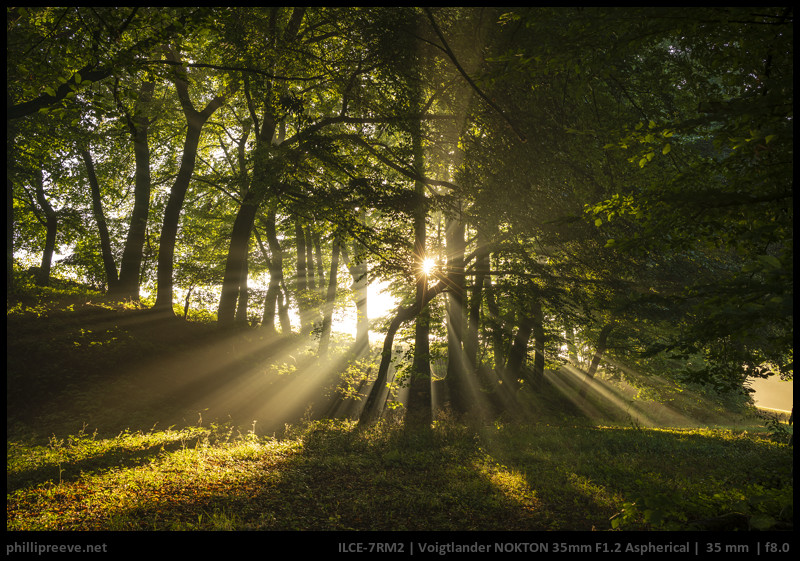
| Strengths | Weaknesses |
|
|
Recommendation: nice bokeh, good contrast, good flare resistance stopped down, good enough sharpness and nice sunstars in a compact package
resistance stopped down, good enough sharpness and nice sunstars in a compact package
Discontinued in January 2023
Length: 59mm | Diameter: 66mm | Weight: 387g | Filter Thread: 58mm | Released: May 2020 | Price (January 2023): $699
Review | amazon.com | amazon.de | B&H | ebay.com (affiliate links)
Sony FE 35mm 1.4 GM
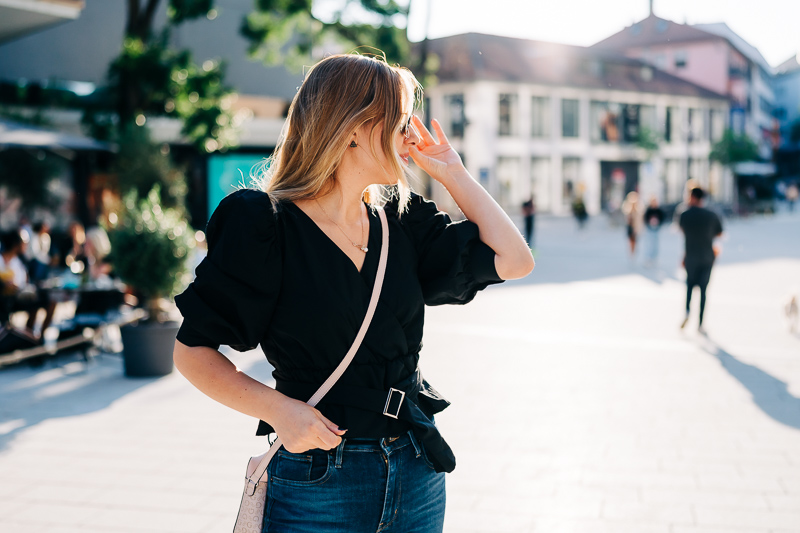
| Strengths | Weaknesses |
|
|
Recommendation:. After the mediocre Sony 35mm 1.4 ZA this is finally the flawless 35mm f/1.4 the E-mount users deserve and that in a very compact package
finally the flawless 35mm f/1.4 the E-mount users deserve and that in a very compact package
Length: 96mm | Diameter: 76mm | Weight: 520g | Filter Thread: 67mm Price | Released: January 2021 | Price (March 2025): $1298
Review | amazon.com | amazon.de | B&H | ebay.com | ebay.de (affiliate links)
Sigma 35mm 1.4 Art DG DN
| Strengths | Weaknesses |
|
|
Recommendation: A very well balanced 35mm 1.4 AF lens. Not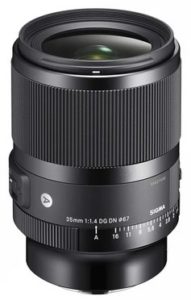 as exciting bokeh as the Sigma 35mm 1.2 Art, not as high resolving as the Sony FE 35mm 1.4 GM, but simply a well priced allrounder.
as exciting bokeh as the Sigma 35mm 1.2 Art, not as high resolving as the Sony FE 35mm 1.4 GM, but simply a well priced allrounder.
Length: 110mm | Diameter: 76mm | Weight: 645g | Filter Thread: 67mm | Released: April 2021 | Price (March 2025): $889
Cameralabs Review | amazon.com | amazon.de | B&H | ebay.com | ebay.de (affiliate links)
Pergear 35mm 1.4 (manual focus, no electronic contacts)
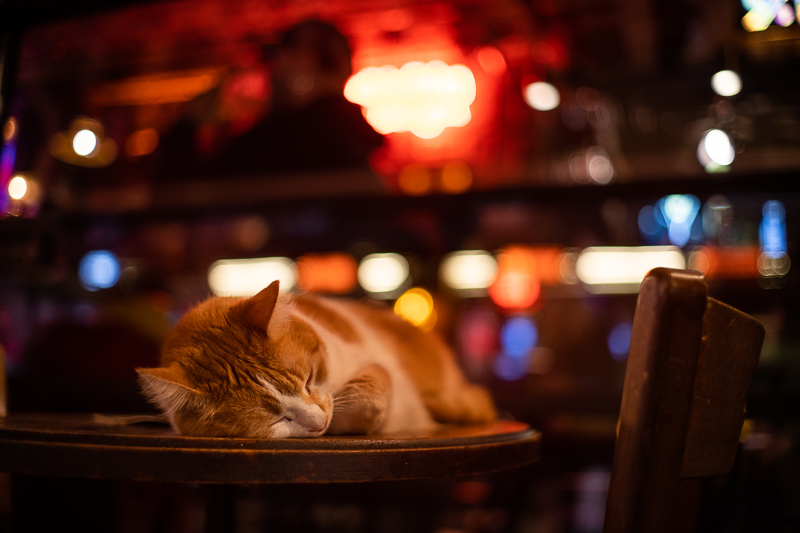
| Strengths | Weaknesses |
|
|
Recommendation: if you want a 35mm lens with a maximum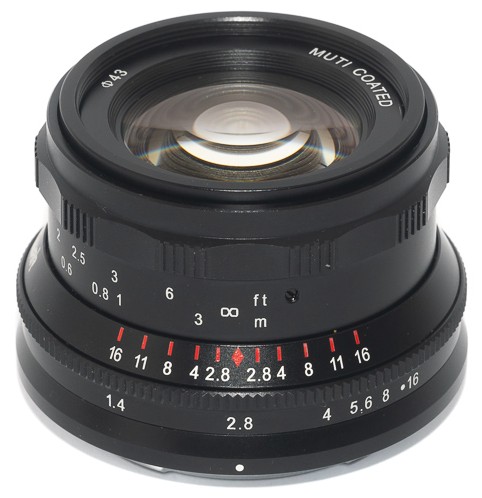 aperture of f/1.4 and you are on a tight budget
aperture of f/1.4 and you are on a tight budget
Length: 40mm | Diameter: 60mm | Weight: 237g | Filter Thread: 43mm | Released: December 2022 | Price (March 2025): $129
Review | amazon.com | amazon.de | ebay.com | ebay.de (affiliate links)
Voigtländer 35mm 2.0 Apo-Lanthar E (manual focus)
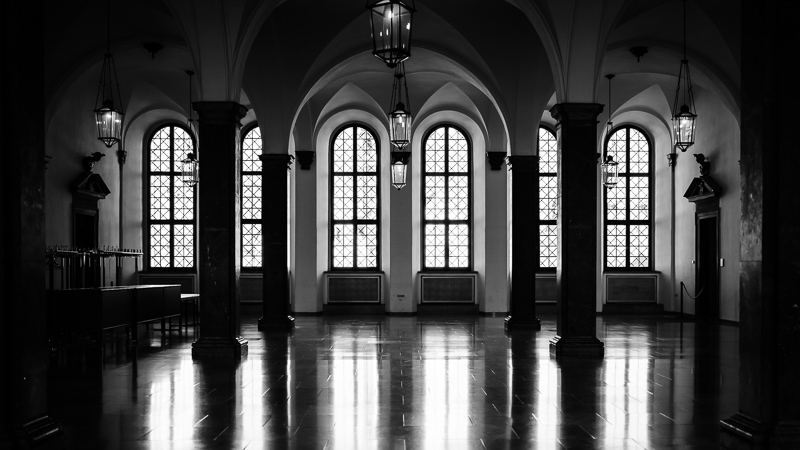
| Strengths | Weaknesses |
|
|
Recommendation: The better Zeiss Loxia 35mm 2.0.
Length: 67mm | Diameter: 63mm | Weight: 353g | Filter Thread: 49/58mm | Released: February 2021 | Price (March 2025): $949
Review | Sample images | Robert White (UK) | Cameraquest (US) | B&H | ebay.com | ebay.de (affiliate links)
Sigma 35mm 2.0 Contemporary DG DN
| Strengths | Weaknesses |
|
|
Recommendation: slightly slower and cheaper, but all in all better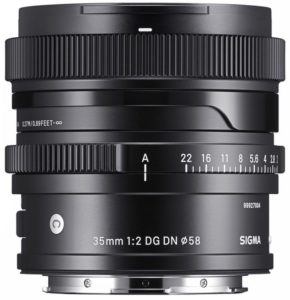 alternative to Sony’s 35mm 1.8 FE
alternative to Sony’s 35mm 1.8 FE
Length: 70mm | Diameter: 68mm | Weight: 325g | Released: December 2020 | Price (March 2025): $639
Lenstip Review | Amazon.com | B&H | ebay.com | Amazon.de (affiliate links)
40-45mm
Voigtlander 40mm 1.2 Nokton E/SE (manual focus)

| Strengths | Weaknesses |
|
|
Recommended to: Anyone looking for a very good all purpose manual wide-normal lens which gives them both a wide aperture look for environmental portraits and other bokeh-centric images, as well as great modern performance stopped down.
manual wide-normal lens which gives them both a wide aperture look for environmental portraits and other bokeh-centric images, as well as great modern performance stopped down.
Also comes in a lighter “SE” edition with the same optics that has been discontinued in January 2023.
Length: 70mm | Diameter: 59mm | Weight: 416g | Filter Thread: 58mm | Released: October 2017 | Price (March 2025): $799
Review | Amazon.com | Amazon.de | B&H | ebay.com (affiliate links)
Sigma 40mm 1.4 Art DH HSM (former DSLR design)
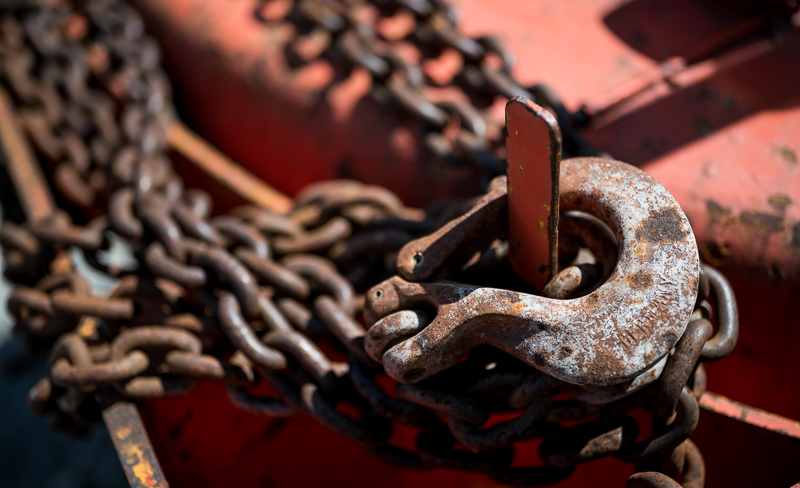
| Strengths | Weaknesses |
|
|
Recommendation: one of the best corrected f/1.4 lenses for  optical aberrations, but this correction came at a price in terms of size and weight. If you are allergic to loCA this is your lens, otherwise we rather recommend the Sigma Art 35mm 1.2 DG DN.
optical aberrations, but this correction came at a price in terms of size and weight. If you are allergic to loCA this is your lens, otherwise we rather recommend the Sigma Art 35mm 1.2 DG DN.
Discontinued.
Length: 157mm | Diameter: 88mm | Weight: 1265g | Filter Thread: 82mm | Released: November 2018 | Price (January 2023): $799
Review | amzon.com | amazon.de | B&H | ebay.com | ebay.de (affiliate links)
Sony FE 40mm 2.5 G

| Strengths | Weaknesses |
|
|
Recommendation: a solid small lens that looks quite expensive next to the Samyang 45mm 1.8 AF or the Sony FE 50mm 1.8 but also offers better resolution, contrast and especially controls.
next to the Samyang 45mm 1.8 AF or the Sony FE 50mm 1.8 but also offers better resolution, contrast and especially controls.
Length: 45mm | Diameter: 60mm | Weight: 173g | Filter Thread: 49mm | Released: March 2021 | Price (March 2025): $548
Review | Amazon.com | Amazon.de | B&H | ebay.com (affiliate links)
Samyang AF 45mm 1.8 FE

| Strengths | Weaknesses |
|
|
Recommended to: those who like the focal length and are willing to take a few compromises for an affordable and small lens.
to take a few compromises for an affordable and small lens.
Length: 56mm | Diameter: 62mm | Weight: 162g | Filter Thread: 49mm | Released: May 2019 | Price (March 2025): $299
Christopher Frost Review | Amazon.de | B&H (affiliate links)
Sigma 45mm 2.8 Contemporary DG DN
| Strengths | Weaknesses |
|
|
Recommendation: every once in a while Sigma releases an unexpected lens and this was clearly the case here. This small and slow 45mm 2.8 is a strong contrast compared to the fast yet huge Sigma Art primes. This 45mm clearly has its fans because of its nice bokeh rendering, but most people will probably want to opt for a faster lens which can be had for less money.
unexpected lens and this was clearly the case here. This small and slow 45mm 2.8 is a strong contrast compared to the fast yet huge Sigma Art primes. This 45mm clearly has its fans because of its nice bokeh rendering, but most people will probably want to opt for a faster lens which can be had for less money.
The new lenses of this series feature the same build quality but usually offer more appealing maximum aperture values.
Length: 46mm | Diameter: 64mm | Weight: 215g | Filter Thread: 55mm | Released: July 2019 | Price (March 2025): $446
Lenstip Review | amazon.com | amazon.de | B&H | ebay.com (affiliate links)
50-55mm
Sigma 50mm 1.2 Art DG DN
Recommendation: Sigma’s 50mm 1.2 lens is about the same size  and weight as the Sony FE 50mm 1.2 GM. The Sigma doesn’t offer the Sony’s amazingly high resolution at f/1.2, but it is noticeably cheaper.
and weight as the Sony FE 50mm 1.2 GM. The Sigma doesn’t offer the Sony’s amazingly high resolution at f/1.2, but it is noticeably cheaper.
Length: 109mm | Diameter: 81mm | Weight: 745g | Filter Thread: 72mm | Released: March 2024 | Price (March 2025): $1399
Lenstip Review | amazon.com | amazon.de | ebay.com | ebay.de | B&H (affiliate link)
Sony FE 50mm 1.2 GM
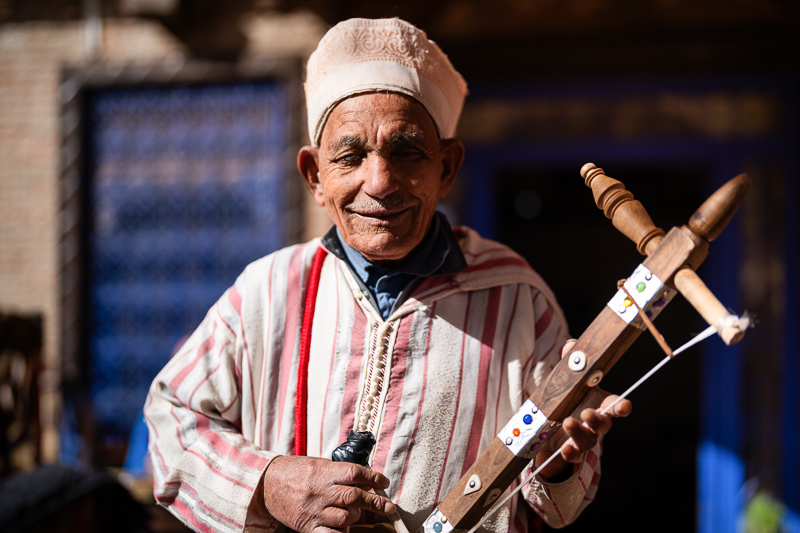
| Strengths | Weaknesses |
|
|
Recommendation: The half-a-stop faster successor to the Sony FE 50mm 1.4 ZA. If you are looking for a lens with these parameters this one won’t disappoint. Just like the Sony FE 35mm 1.4 GM a lens with hardly any flaws that comes at a very substantial price.
FE 50mm 1.4 ZA. If you are looking for a lens with these parameters this one won’t disappoint. Just like the Sony FE 35mm 1.4 GM a lens with hardly any flaws that comes at a very substantial price.
Length: 108mm | Diameter: 87mm | Weight: 778g | Filter Thread: 72mm | Released: March 2021 | Price (March 2025): $1898
Review | Amazon.com | B&H | ebay.com (affiliate links)
Voigtlander 50mm 1.2 Nokton E/SE (manual focus)

| Strengths | Weaknesses |
|
|
Recommendation: one of the best fast allround 50mm lens if you can live with manual focus.
live with manual focus.
Also comes in a lighter and slightly cheaper “SE” edition with the same optics that has been discontinued in January 2023.
Length: 58mm | Diameter: 70mm | Weight: 440g | Filter Thread: 58mm | Released: April 2019 | Price (March 2025): $799
Review | Sample images | B&H | Robert White | amazon.com | ebay.com | ebay.de (affiliate links)
Sony FE 50mm 1.4 GM
Recommendation: This lens has been a bit of a surprise to me, as it had been released not that long after the Sony FE 50mm 1.2 GM. Considering the competitor’s 50mm 1.4 offerings, this one is rather expensive. Optically it is hard to find any flaws with this lens, except for high (optical) vignetting.
Length: 96mm | Diameter: 81mm | Weight: 516g | Filter Thread: 67mm | Released: March 2023 | Price (March 2025): $1198
Lenstip Review | amazon.com | amazon.de | ebay.com | ebay.de | B&H (affiliate link)
Sigma 50mm 1.4 Art DG DN
Recommendation:
 This Sigma 50mm 1.4 Art DG DN is similarly sized as the Sigma 35mm 1.4 Art DG DN so much smaller than the former DSLR version. The DSLR version was famous for its very low vignetting, which is not the case for this improved version anymore. The aforementioned Sony lens beats it in every category (not by a lot though) while also being smaller. The Sigma is about 400 bucks cheaper, so depending on what you are looking for it may offer the better price/performance ratio.
This Sigma 50mm 1.4 Art DG DN is similarly sized as the Sigma 35mm 1.4 Art DG DN so much smaller than the former DSLR version. The DSLR version was famous for its very low vignetting, which is not the case for this improved version anymore. The aforementioned Sony lens beats it in every category (not by a lot though) while also being smaller. The Sigma is about 400 bucks cheaper, so depending on what you are looking for it may offer the better price/performance ratio.
Length: 112mm | Diameter: 78mm | Weight: 660g | Filter Thread: 72mm | Released: February 2023 | Price (March 2025): $799
Lenstip Review | amazon.com | amazon.de | ebay.com | ebay.de | B&H (affiliate link)
Samyang AF 50mm 1.4 FE II

| Strengths | Weaknesses |
|
|
Recommendation: Compared to the predecessor this MK II version is noticeably lighter, a bit smaller and has improved sharpness while maintaining nice bokeh. The cheaper alternative to the Sony FE 50mm 1.2 GM.
version is noticeably lighter, a bit smaller and has improved sharpness while maintaining nice bokeh. The cheaper alternative to the Sony FE 50mm 1.2 GM.
Length: 89mm | Diameter: 80mm | Weight: 420g | Filter Thread: 72mm | Released: November 2021 | Price (March 2025): $549
Bokeh comparison to Sony FE 50mm 1.2 GM by Simeon Kolev
B&H | ebay.com | amazon.com | amazon.de (affiliate links)
Sigma 50mm 2.0 Contemporary DG DN
Recommendation: an almost as well corrected lens as the Voigtländer  50mm 2.0 Apo-Lanthar E (see next entry), but with autofocus. If you don’t need faster than f/2.0, this is an appealing, compact 50mm lens.
50mm 2.0 Apo-Lanthar E (see next entry), but with autofocus. If you don’t need faster than f/2.0, this is an appealing, compact 50mm lens.
Length: 70mm | Diameter: 70mm | Weight: 345g | Filter Thread: 58mm | Released: April 2023 | Price (March 2025): $607
Lenstip Review | Amazon.com | B&H | ebay.com (affiliate links)
Voigtlander 50mm 2.0 Apo-Lanthar E (manual focus)
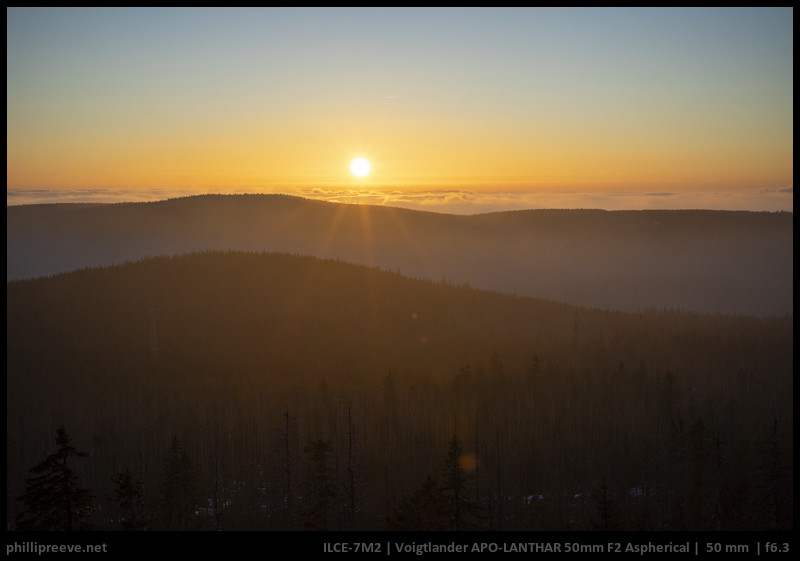
| Strengths | Weaknesses |
|
|
Recommendation: technically one of the best 50mm lenses if you can live with manual focus and a maximum aperture of f/2.0, the aforementioned Sigma lens practically performs on a similar level while being a bit cheaper and offering autofocus though.
with manual focus and a maximum aperture of f/2.0, the aforementioned Sigma lens practically performs on a similar level while being a bit cheaper and offering autofocus though.
Length: 61mm | Diameter: 63mm | Weight: 364g | Filter Thread: 49mm | Released: November 2019 | Price (March 2025): $849
Review | Sample images | Amazon.com | B&H (affiliate links)
TTArtisan 50mm 2.0 (manual focus, no electronic contacts)
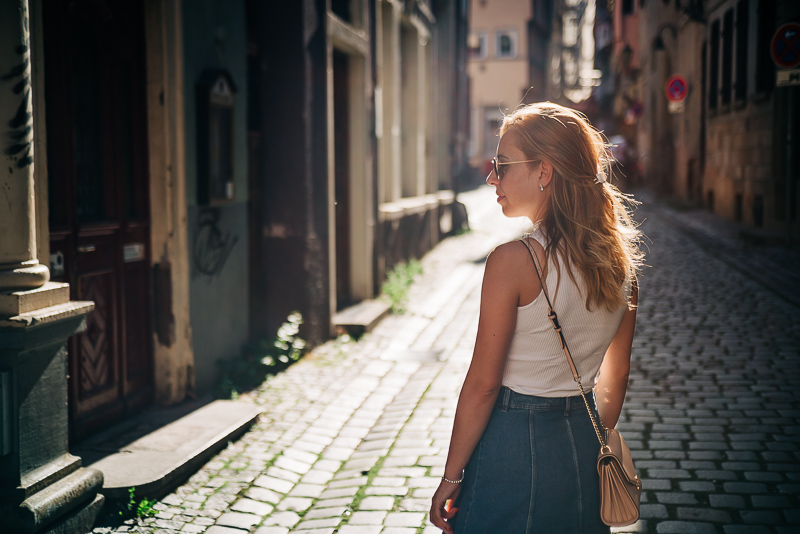
| Strengths | Weaknesses |
|
|
Recommendation: The smallest and cheapest 50mm lens to put on your E-mount camera and way better than the low price suggests
on your E-mount camera and way better than the low price suggests
Length: 35mm | Diameter: 60mm | Weight: 189g | Filter Thread: 43mm | Released: July 2022 | Price (March 2025): $69
Review | Sample images | TTArtisan | Amazon | ebay.com | B&H (affiliate links)
Sony FE 50mm 2.5 G
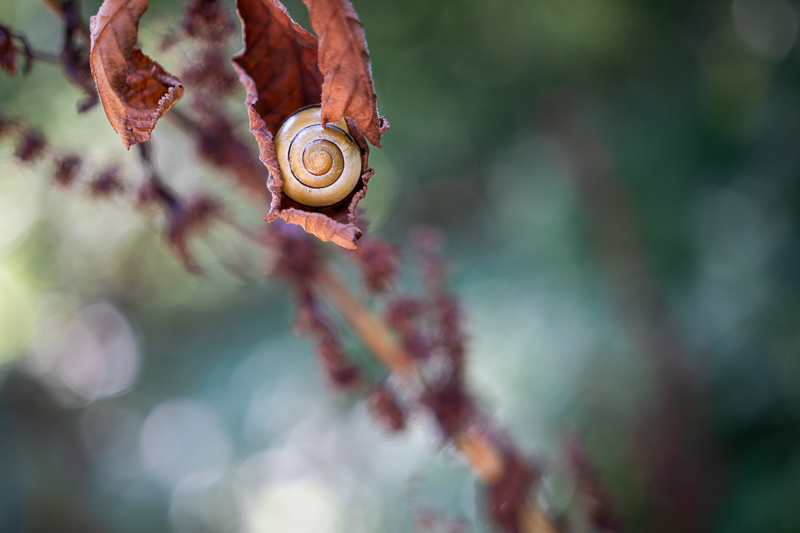
| Strengths | Weaknesses |
|
|
Recommendation: a well balanced compact 50mm lens, but also a bit expensive compared to many of the faster options.
Length: 45mm | Diameter: 60mm | Weight: 174g | Filter Thread: 49mm | Released: March 2021 | Price (March 2025): $548
Review | Amazon.com | Amazon.de | B&H | ebay.com (affiliate links)
Sony FE 50mm 2.8 Macro
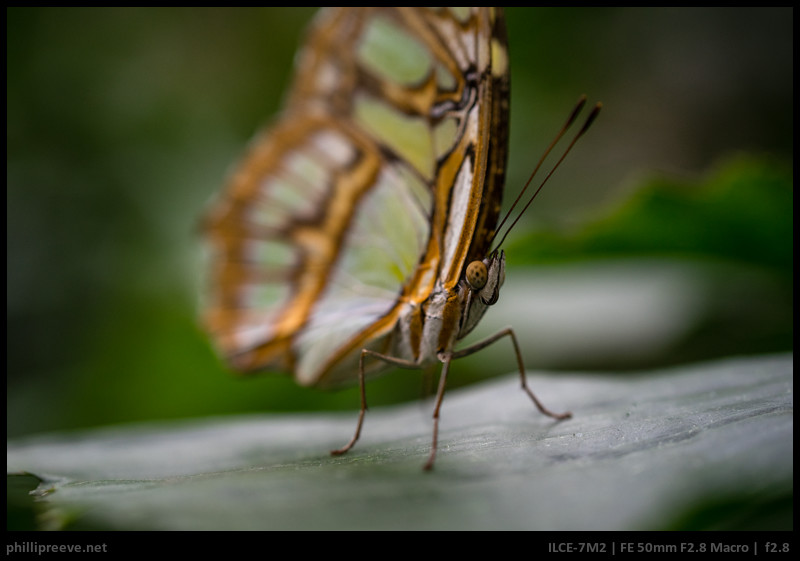
| Strengths | Weaknesses |
|
|
Recommendation: A good choice for your expeditions into nature where optical qualities and low weight as well as close focus abilities count more than slow AF.
where optical qualities and low weight as well as close focus abilities count more than slow AF.
Length: 71mm | Diameter: 72mm | Weight: 236g | Filter Thread: 55mm | Released: September 2016 | Price (March 2025): $548
Review | Amazon.com | Amazon.de | Ebay | B&H (affiliate links)
Sony FE 55mm 1.8 ZA
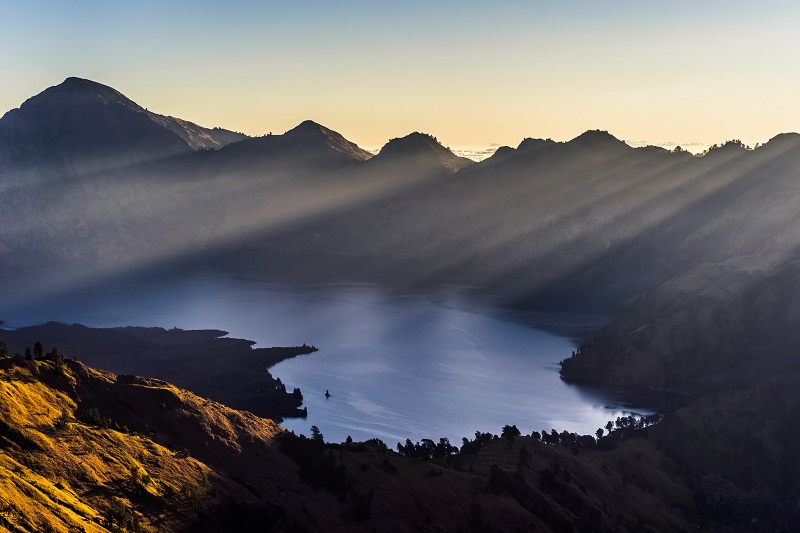
| Strengths | Weaknesses |
|
|

Recommendation: the FE 55mm 1.8 offers a good balance between small size and good performance. New it is very expensive compared to some of the new competitors like the Samyang 50mm 1.4 AF II though.
Length: 70.5mm | Diameter: 64.4mm | Weight: 281g | Filter Thread: 49mm | Released: October 2013 | Price (March 2025): $898
Review | Amazon.com | Amazon.de | ebay.com | ebay.de | B&H (affiliate links)
Laowa 58mm 2.8 FE 2:1 Macro(manual focus, no electronic contacts)
Recommendation: honestly I think most people are better off with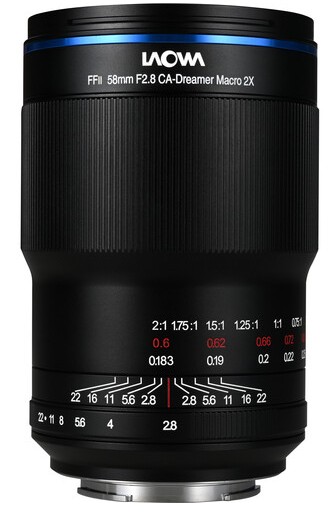 Laowa’s 90mm 2.8 macro lens for the added working distance, but if you are looking for a shorter focal length, this is might be the one for you. Just like the 90mm it also offers an impressive 2:1 magnification.
Laowa’s 90mm 2.8 macro lens for the added working distance, but if you are looking for a shorter focal length, this is might be the one for you. Just like the 90mm it also offers an impressive 2:1 magnification.
Length: 74mm | Diameter: 117mm | Weight: 595g | Filter Thread: 67mm | Released: March 2024 | Price (March 2025): $499
Review | manufacturer’s homepage | amazon.com | amazon.de | ebay.com | ebay.de | B&H (affiliate links)
65-75mm
Sigma 65mm 2.0 Contemporary DG DN
| Strengths | Weaknesses |
|
|
Recommendation: a solid lens without any major shortcomings but a rather odd focal length that doesn’t integrate too well into many kits.
but a rather odd focal length that doesn’t integrate too well into many kits.
Length: 75mm | Diameter: 72mm | Weight: 405g | Filter Thread: 62mm | Released: December 2020 | Price (March 2025): $699
Lenstip Review | Amazon.com | Amazon.de | B&H | ebay.com (affiliate links)
Voigtlander 65mm 2.0 Apo-Lanthar Macro (manual focus)

| Strengths | Weaknesses |
|
|
Recommendation: it isn’t a small lens
 but the optical performance is impeccable. A rather odd focal length though, so make sure it integrates well into your kit(s).
but the optical performance is impeccable. A rather odd focal length though, so make sure it integrates well into your kit(s).
Length: 91mm | Diameter: 78mm | Weight: 635g | Filter Thread: 67mm | Released: July 2017 | Price (March 2025): $849
Review | Amazon.com | ebay.com | ebay.de | B&H (affiliate links)
Voigtländer 75mm 1.5 Nokton E (manual focus)

| Strengths | Weaknesses |
|
|
Recommendation: this lens has long been available as M-mount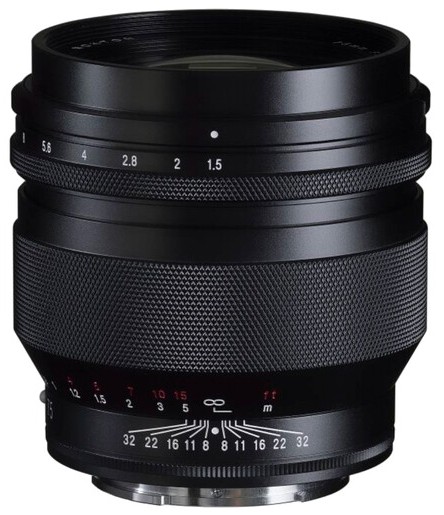 lens since 2019 and in early 2025 Cosina started offering an E-mount version (as well as Z and RF). A very nice compact portrait tele lens, but the recent lightweight 85mm 1.4 lenses like the Sirui Aurora are very strong competitors, that not only feature AF, but may also offer a better price/performance ratio depending on what you are looking for.
lens since 2019 and in early 2025 Cosina started offering an E-mount version (as well as Z and RF). A very nice compact portrait tele lens, but the recent lightweight 85mm 1.4 lenses like the Sirui Aurora are very strong competitors, that not only feature AF, but may also offer a better price/performance ratio depending on what you are looking for.
Length: 74mm | Diameter: 74mm | Weight: 515g | Filter Thread: 62mm | Released: February 2025 | Price (March 2025): $849
Review | amazon.com | amazon.de | B&H | ebay.com | ebay.de (affiliate links)
Samyang AF 75mm 1.8 FE

Recommendation: a light and small short portrait tele lens with decent image quality. Make sure to have a look at the TTArtisan 75mm 2.0 AF as well to see which one fits your needs better.
Make sure to have a look at the TTArtisan 75mm 2.0 AF as well to see which one fits your needs better.
Length: 69mm | Diameter: 65mm | Weight: 230g | Filter Thread: 58mm | Released: April 2020 | Price (March 2025): $314
Lenstip Review | amazon.com | amazon.de | B&H | ebay.com (affiliate links)
TTArtisan 75mm 2.0 AF
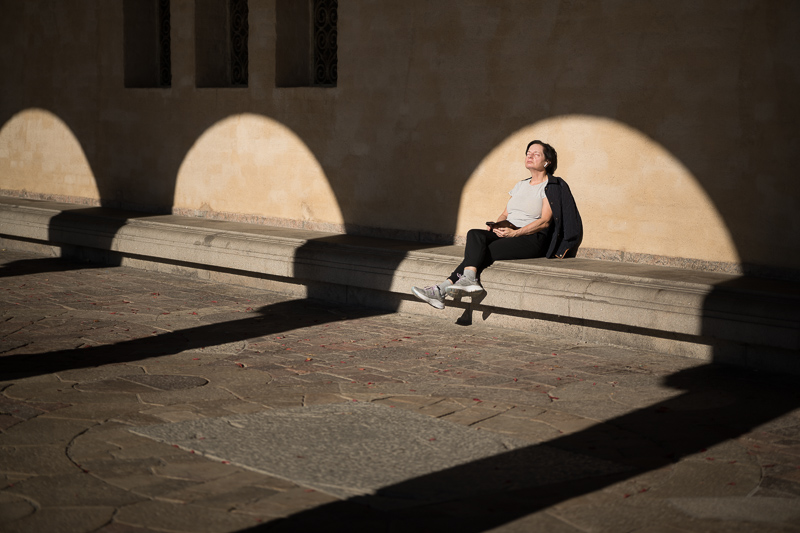
| Strengths | Weaknesses |
|
|
Recommendation: optical performance is similar to the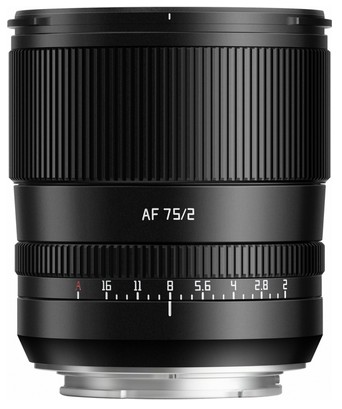 aforementioned Samyang, but this TTArtisan is only around half the price and even offers a dedicated aperture ring.
aforementioned Samyang, but this TTArtisan is only around half the price and even offers a dedicated aperture ring.
Length: 80mm | Diameter: 66mm | Weight: 328g | Filter Thread: 62mm | Released: September 2024 | Price (March 2025): $178
Review | manufacturer’s shop | amazon | B&H (affiliate links)
85-90mm
Sony FE 85mm 1.4 GM II

| Strengths | Weaknesses |
|
|
Recommendation: Sony did here, what they always do with their  MK II GM lenses: they increased resolution and contrast while making the lens lighter and smaller and adding more capable AF. For me the AF is the main selling point, as I personally prefer the MK I’s bokeh and don’t need this high level of resolution and contrast in a portrait lens.
MK II GM lenses: they increased resolution and contrast while making the lens lighter and smaller and adding more capable AF. For me the AF is the main selling point, as I personally prefer the MK I’s bokeh and don’t need this high level of resolution and contrast in a portrait lens.
Length: 107mm | Diameter: 85mm | Weight: 640g | Filter Thread: 77mm | Released: September 2024 | Price (March 2025): $1798
Review | amazon.com | amazon.de | ebay.com | ebay.de | B&H (affiliate links)
Sony FE 85mm 1.4 GM
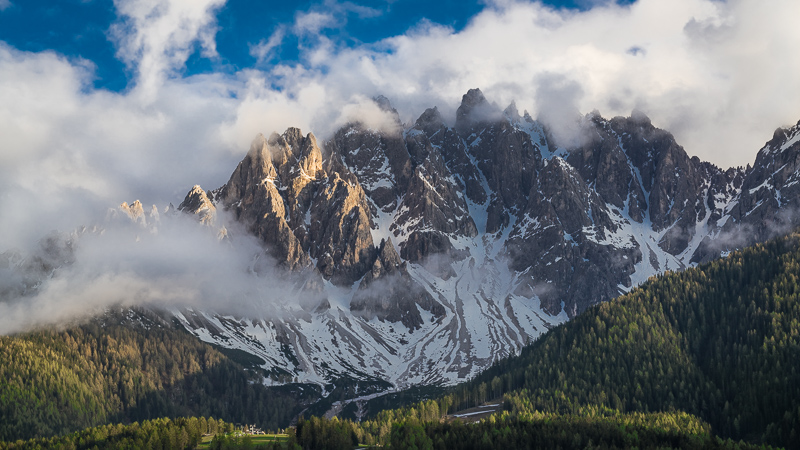
| Strengths | Weaknesses |
|
|
Recommendation: if you care more about a very appealing bokeh rendering with low optical vignetting than the highest resolution and contrast this lens might still be for you.

Length: 108mm | Diameter: 90mm | Weight: 820g | Filter Thread: 77mm | Released: February 2016 | Price (March 2025): $1298
Review | Sample Images | Amazon.com | Amazon.de | B&H | ebay.com | ebay.de (affiliate links)
Sirui 85mm 1.4 Aurora
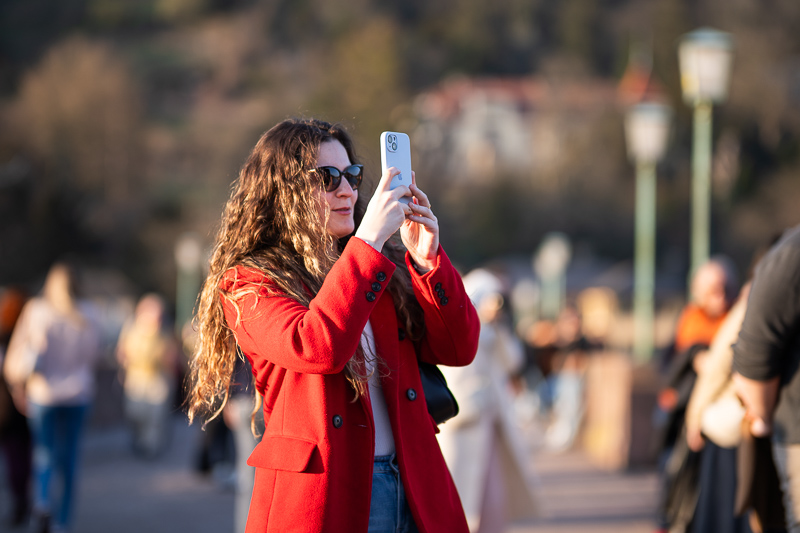
| Strengths | Weaknesses |
|
|
Recommendation: If you don’t need class leading autofocus and 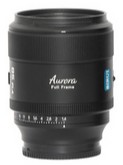 you are not shooting in backlight all the time, I don’t see a reason why you wouldn’t be happy with this lens though. Considering you can get this for 500 bucks new, it is quite the bargain actually.
you are not shooting in backlight all the time, I don’t see a reason why you wouldn’t be happy with this lens though. Considering you can get this for 500 bucks new, it is quite the bargain actually.
Length: 95mm | Diameter: 80mm | Weight: 539g | Filter Thread: 67mm | Released: October 2024 | Price (March 2025): $499
Review coming soon | Sample Images | amazon.com | amazon.de | B&H | ebay.com | ebay.de (affiliate links)
Sigma 85mm 1.4 Art DG DN

| Strengths | Weaknesses |
|
|
Recommendation: for some time this used to the the most compact and lightweight 85mm 1.4 for E-mount, but the competitors have caught up since. Still a very strong performer.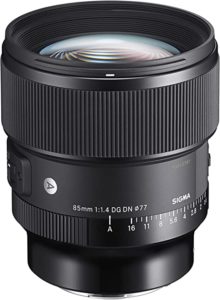
Length: 96mm | Diameter: 84mm | Weight: 625g | Filter Thread: 77mm | Released: August 2020 | Price (March 2025): $1089
Review | Amazon.de | B&H | ebay.com (affiliate links)
Samyang AF 85mm 1.4 FE MKI and MKII
| Strengths | Weaknesses |
|
|
Recommendation: nicer bokeh than the FE 1.8/85 and sharper than the GM 1.4/85 in the center this is a really attractive portrait lens. This lens has been updated to an MK II version with unchanged optics but improved mechanical design and electronics.
than the GM 1.4/85 in the center this is a really attractive portrait lens. This lens has been updated to an MK II version with unchanged optics but improved mechanical design and electronics.
Length: 100mm | Diameter: 88mm (MKI) 83mm (MKII) | Weight: 568g (MKI) 505g (MKII) | Filter Thread: 77mm (MKI) 72mm (MKII) | Released: March 2019 (MKI) July 2022 (MKII) | Price (March 2025): $399 (MKI) $599 (MKII)
Lenstip Review (MKI) | amazon.com | amazon.de | ebay.com | ebay.de | B&H (MKI) | B&H (MKII) (affiliate links)
Sony FE 85mm 1.8

| Strengths | Weaknesses |
|
|
Recommended to: this was once the only cheap 85mm AF option for E-mount, now you might also want to consider some of the newer f/1.8 and f/1.4 lenses mentioned here.
option for E-mount, now you might also want to consider some of the newer f/1.8 and f/1.4 lenses mentioned here.
Length: 82mm | Diameter: 78mm | Weight: 371g | Filter Thread: 67mm | Released: February 2017 | Price (March 2025): $548
Review | B&H | Amazon.com | Amazon.de | ebay.com | ebay.de (affiliate links)
Viltrox AF 85mm 1.8 FE II
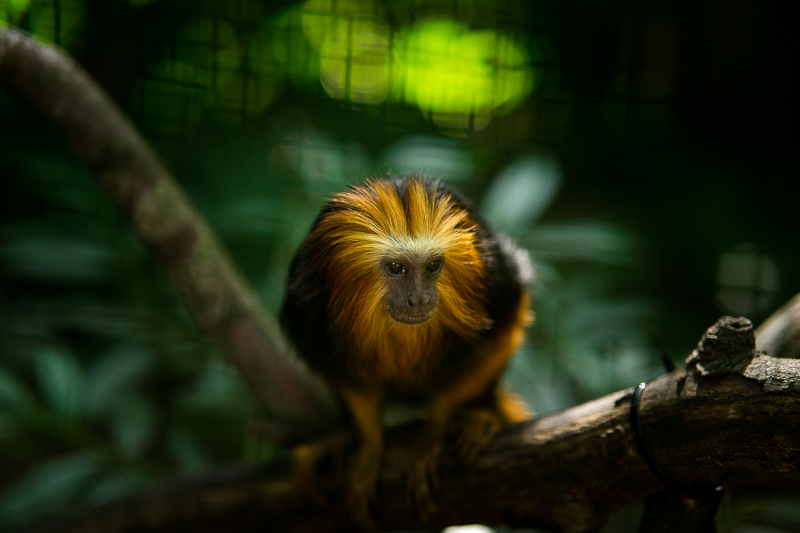
| Strengths | Weaknesses |
|
|
Recommended to: we reviewed the first version here which in general is a very strong performer. Sharpness is very good combined with smooth and appealing bokeh. A good option for who is on a budget and still wants a portrait lens with great bokeh.
general is a very strong performer. Sharpness is very good combined with smooth and appealing bokeh. A good option for who is on a budget and still wants a portrait lens with great bokeh.
MK I/MK II | Length: 92mm/92mm | Diameter: 79mm/80mm | Weight: 636g/483g | Filter Thread: 72mm | Released: June 2019/January 2021 | Price (March 2025): $399
Review | B&H | ebay.com | ebay.de (affiliate links)
Laowa 85mm 5.6 Macro 2:1 (manual focus, no electronic contacts)

| Strengths | Weaknesses |
|
|
Recommended to: those looking for the smallest 2:1 macro and don’t mind a low number of straight aperture blades and mediocre flare resistance
don’t mind a low number of straight aperture blades and mediocre flare resistance
Length: 81mm | Diameter: 59mm | Weight: 258g | Filter Thread: 46mm | Released: December 2021 | Price (March 2025): $499
Review | Sample images | manufacturer’s homepage | B&H | ebay.com | amazon.com (affiliate links)
Laowa 90mm 2.8 FE 2:1 Macro (manual focus, no electronic contacts)
| Strengths | Weaknesses |
|
|
Recommendation: compared to Sony’s, Sigma’s and Tamron’s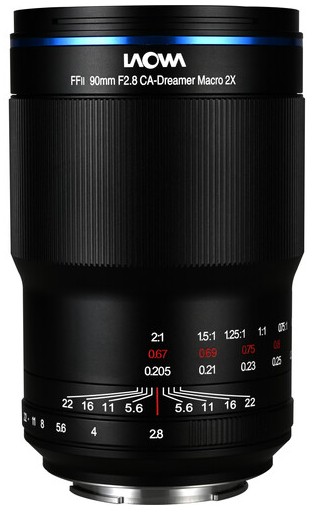 macro offerings in this focal length range you get an impressive 2:1 magnification and the optical performance hardly leaves something to be desired
macro offerings in this focal length range you get an impressive 2:1 magnification and the optical performance hardly leaves something to be desired
Length: 74mm | Diameter: 120mm | Weight: 619g | Filter Thread: 67mm | Released: June 2022 | Price (March 2025): $499
Review | manufacturer’s homepage | amazon.com | amazon.de | ebay.com | ebay.de | B&H (affiliate links)
Sony 90mm 2.8 G OSS Macro
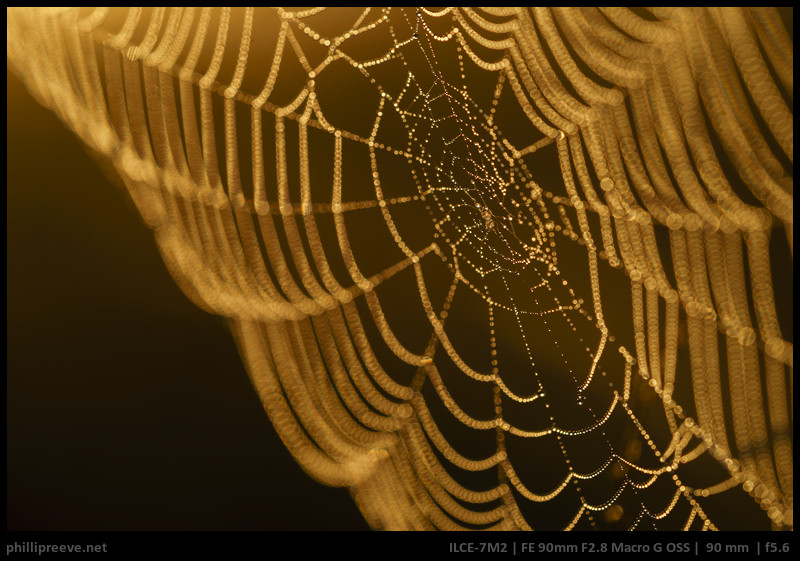
| Strengths | Weaknesses |
|
|
Recommendation: if you are more serious about macro work this is one of the best lenses in the system that also works well for landscape and portrait work. These days there are also many lenses offering a 2:1 magnification though that are also worth a closer look.
is one of the best lenses in the system that also works well for landscape and portrait work. These days there are also many lenses offering a 2:1 magnification though that are also worth a closer look.
Length: 130.5 mm | Diameter: 79mm | Weight: 602g | Filter Thread: 62mm | Released: March 2015 | Price (March 2025): $998
Review | Amazon.com | Amazon.de | Ebay | B&H (affiliate links)
Sigma 90mm 2.8 Contemporary DG DN
| Strengths | Weaknesses |
|
|
Recommendation: there are many faster lenses available for the same price, so this one is less for the portrait aficionados and more for those looking for a very lightweight travel/landscape lens with AF.
same price, so this one is less for the portrait aficionados and more for those looking for a very lightweight travel/landscape lens with AF.
Length: 64mm | Diameter: 62mm | Weight: 295g | Filter Thread: 55mm | Released: September 2021 | Price (March 2025): $639
Lenstip Review | Amazon.de | B&H | ebay.com (affiliate links)
100mm+
Sony 100mm 2.8 GM STF OSS
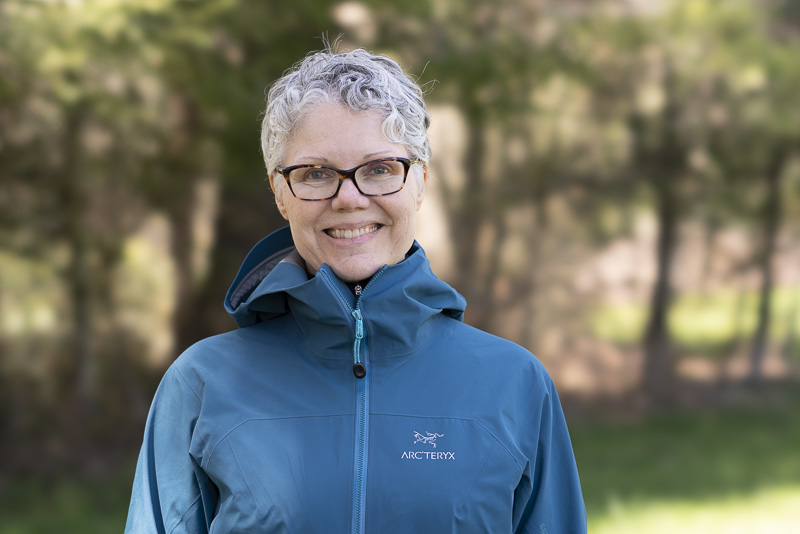
| Strengths | Weaknesses |
|
|
Recommendation: the GM STF 2.8/100 has a very narrow range of applications when you want limited bokeh of excellent quality and here it excels. More often one of the 85mm 1.4 lenses will be the better alternative.
of applications when you want limited bokeh of excellent quality and here it excels. More often one of the 85mm 1.4 lenses will be the better alternative.
Length: 118mm | Diameter: 85mm | Weight: 700g | Filter Thread: 72mm | Released: February 2017 | Price (March 2025): $1498
Review | Amazon.com | B&H | Ebay (affiliate links)
Sigma 105mm 1.4 Art DG HSM (former DSLR design)

| Strengths | Weaknesses |
|
|
Recommendation: it offers outstanding performance and very shallow depth of field but weighs about as much as two bricks.
shallow depth of field but weighs about as much as two bricks.
Length: 157mm | Diameter: 116mm | Weight: 1500g | Filter Thread: 105mm | Released: May 2018 | Price (March 2025): $1599
Review | Amazon.com | Amazon.de | ebay.com (affiliate links)
Sigma 105mm 2.8 Art DG DN Macro
| Strengths | Weaknesses |
|
|
Recommendation: a slightly cheaper but not necessarily worse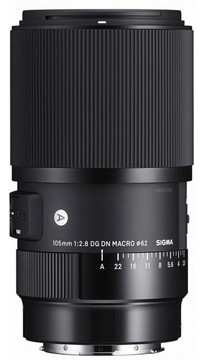 alternative to the Sony FE 90mm 2.8 G Macro.
alternative to the Sony FE 90mm 2.8 G Macro.
Length: 134mm | Diameter: 74mm | Weight: 715g | Filter Thread: 62mm | Released: October 2020 | Price (March 2025): $789
Lenstip Review | Amazon.com | Amazon.de | B&H | ebay.com (affiliate links)
Voigtlander 110mm 2.5 Apo-Lanthar Macro E (manual focus)
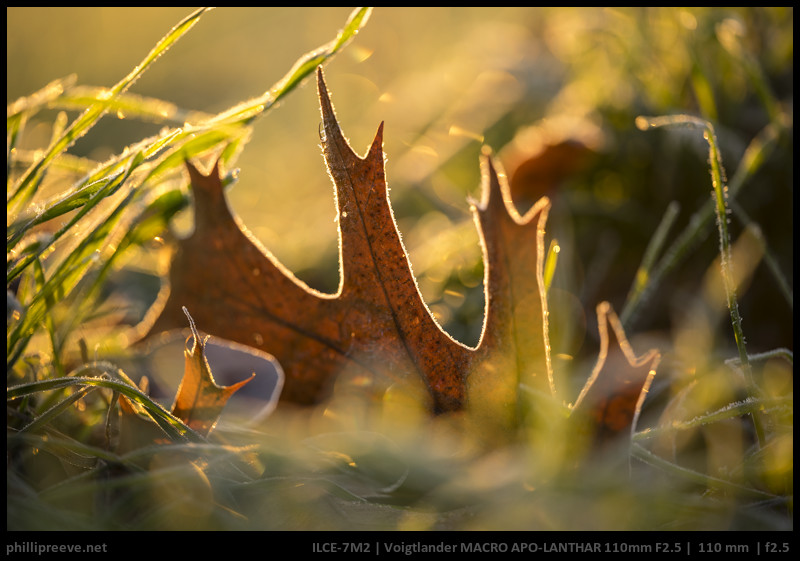
| Strengths | Weaknesses |
|
|
Recommendation: if you enjoy manual focus and need a longer lens this is an outstanding but also large and heavy option
lens this is an outstanding but also large and heavy option
Length: 100mm | Diameter: 78mm | Weight: 771g | Filter Thread: 58mm | Released: June 2018 | Price (January 2023): $849
Review | B&H | amazon.com | amazon.de | ebay.com (affiliate links)
Sony FE 135mm 1.8 GM
| Strengths | Weaknesses |
|
|
Recommended to: anyone who is looking for the 135mm 1.8 lens with the best AF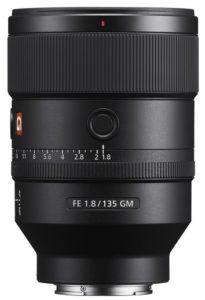
Length: 127mm | Diameter: 90mm | Weight: 950g | Filter Thread: 82mm | Released: February 2019 | Price (March 2025): $2098
Review | B&H | amazon.com | amazon.de | Ebay.com | Ebay.de (affiliate links)
Samyang AF 135mm 1.8 FE
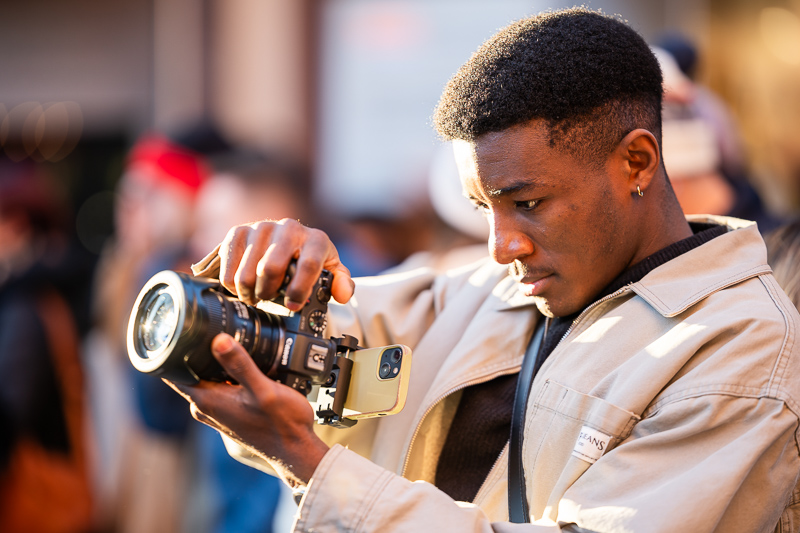
| Strengths | Weaknesses |
|
|
Recommended to: those that cannot or do not want to afford the aforementioned Sony lens or simply don’t need its impeccable AF performance for sports applications
aforementioned Sony lens or simply don’t need its impeccable AF performance for sports applications
Length: 130mm | Diameter: 93mm | Weight: 772g | Filter Thread: 82mm | Released: January 2022 | Price (March 2025): $622
Review | B&H | amazon.com | amazon.de | ebay.com | ebay.de (affiliate links)
Zeiss 135mm 2.8 Batis
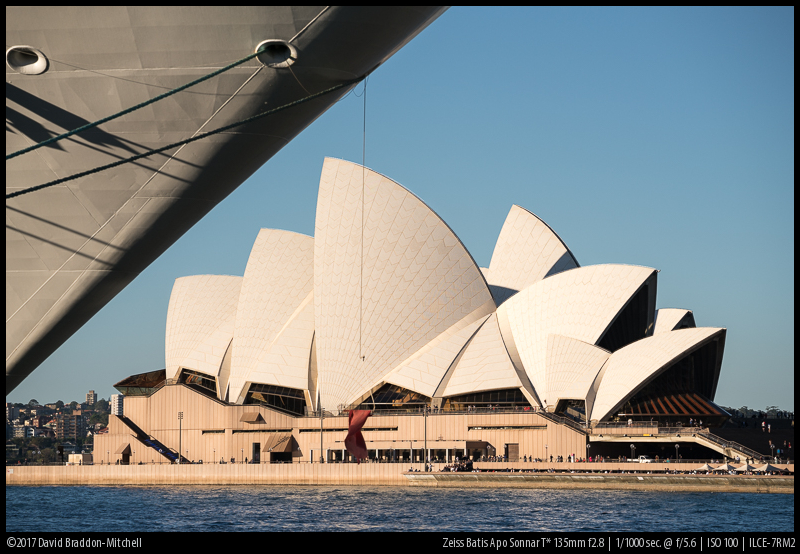
| Strengths | Weaknesses |
|
|
Recommended to: anyone who wants a high performance 2.8/135 and doesn’t mind the staggering price tag. For most people one of the recent 135mm 1.8 lenses probably makes more sense.
2.8/135 and doesn’t mind the staggering price tag. For most people one of the recent 135mm 1.8 lenses probably makes more sense.
Length: 120mm | Diameter: 99mm | Weight: 614g | Filter Thread: 67mm | Released: April 2017 | Price (January 2023): $1749
Review | B&H | Amazon.de | ebay.com (affiliate links)
Zoom lenses
UWA Zooms
Sony FE 12-24mm 2.8 GM

| Strengths | Weaknesses |
|
|
Recommendation: a real achievement in terms of optical engineering. If you need the maximum aperture and at the same time the 12mm focal length (e.g. for astrophotography) and you don’t mind the staggering price tag you will not regret buying this one.
engineering. If you need the maximum aperture and at the same time the 12mm focal length (e.g. for astrophotography) and you don’t mind the staggering price tag you will not regret buying this one.
Length: 137mm | Diameter: 100mm | Weight: 847g | Filter Thread: rear gel | Released: July 2020 | Price (March 2025): $2898
Review | Amazon.com | Amazon.de | B&H | ebay (affiliate links)
Sigma 14-24mm 2.8 Art DG DN
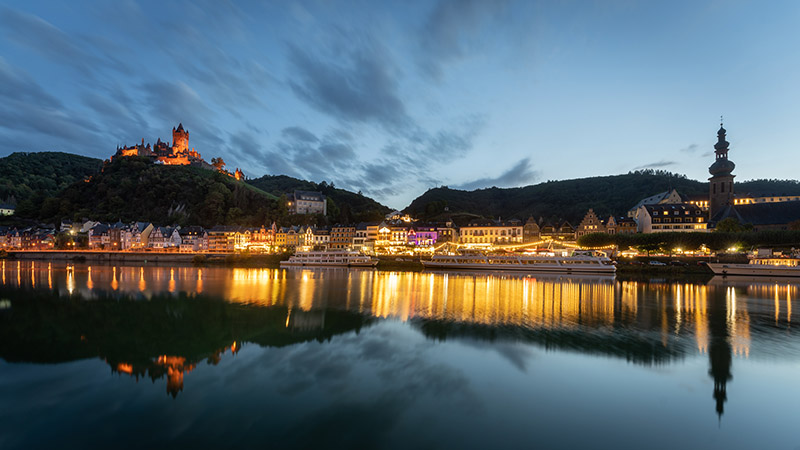
| Strengths | Weaknesses |
|
|
Recommendation: if the GM 12-24mm 2.8 is too expensive or you simply don’t need the 12mm angle of view this is a really great alternative and you won’t feel like giving up anything in terms of optical qualities.
you simply don’t need the 12mm angle of view this is a really great alternative and you won’t feel like giving up anything in terms of optical qualities.
Length: 131mm | Diameter: 85mm | Weight: 795g | Filter Thread: – | Released: July 2019 | Price (January 2023): $1389
Lenstip Review | amazon.com | amazon.de | B&H | ebay.com (affiliate links)
Sony FE 16-25mm 2.8 G
Recommendation: Sony’s compact ultra wide angle zoom. As an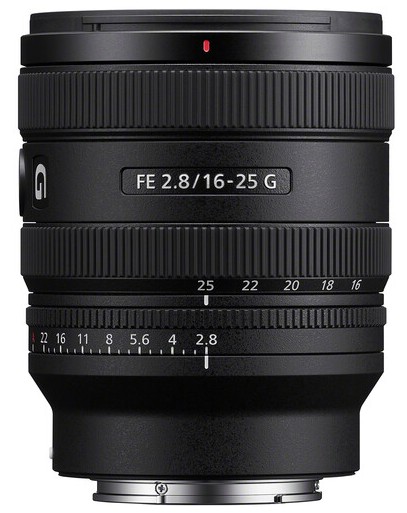 affordable option it is too expensive compared to the Tamron 17-28mm 2.8 and the recently released Sony FE 16mm 1.8 G is 200 bucks cheaper and can be cropped to give the same image as a 25mm 2.8 lens. Maybe this one is more aimed at videographers looking for a more compact lens to use on a gimbal.
affordable option it is too expensive compared to the Tamron 17-28mm 2.8 and the recently released Sony FE 16mm 1.8 G is 200 bucks cheaper and can be cropped to give the same image as a 25mm 2.8 lens. Maybe this one is more aimed at videographers looking for a more compact lens to use on a gimbal.
Length: 91mm | Diameter: 75mm | Weight: 409g | Filter Thread: 67mm | Released: April 2024 | Price (March 2025): $1198
amazon.com | amazon.de | ebay.com | ebay.de | B&H (affiliate links)
Sigma 16-28mm 2.8 Contemporary DG DN
Recommendation: Sigma’s 1mm wider alternative to the Tamron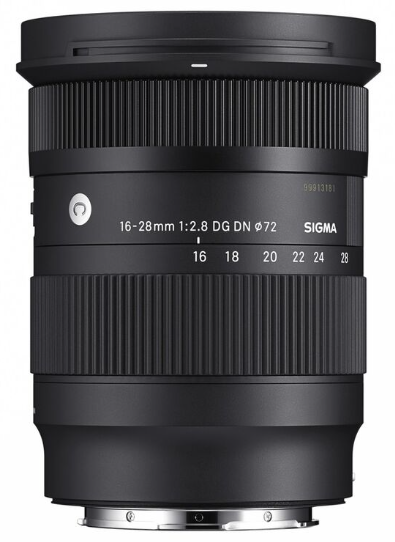 17-28mm 2.8 and 3mm shorter alternative to the aforementioned Sony lens. From existing reviews it looks like the Tamron is the better performer, but I haven’t seen a good direct comparison yet.
17-28mm 2.8 and 3mm shorter alternative to the aforementioned Sony lens. From existing reviews it looks like the Tamron is the better performer, but I haven’t seen a good direct comparison yet.
Length: 103mm | Diameter: 77mm | Weight: 450g | Filter Thread: 72mm | Released: June 2022 | Price (March 2025): $889
amazon.de | amazon.com | ebay.com | ebay.de | B&H (affiliate links)
Sony FE 16-35mm 2.8 GM II
| Strengths | Weaknesses |
|
|
Recommendation: generally a typical Mk II version of a G-Master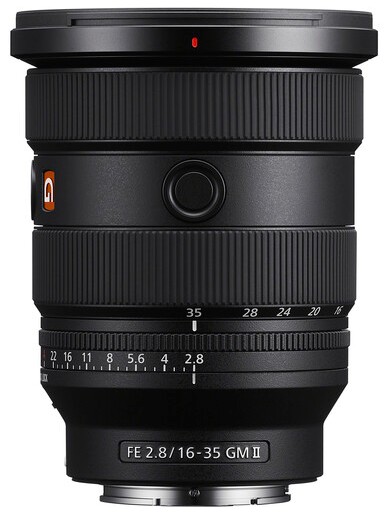 lens: better performance while being lighter and smaller than its predecessor. The small size unsurprisingly came at the cost of high vignetting, interestingly the flare resistance is not as good as what I am used to from Sony’s other recent lenses.
lens: better performance while being lighter and smaller than its predecessor. The small size unsurprisingly came at the cost of high vignetting, interestingly the flare resistance is not as good as what I am used to from Sony’s other recent lenses.
Length: 112mm | Diameter: 88mm | Weight: 547g | Filter Thread: 82mm | Released: September 2023 | Price (January 2023): $2298
Lenstip Review | Amazon.com | Amazon.de | B&H | ebay.com | ebay.de (affiliate links)
Sony FE 16-35mm 4.0 G PZ
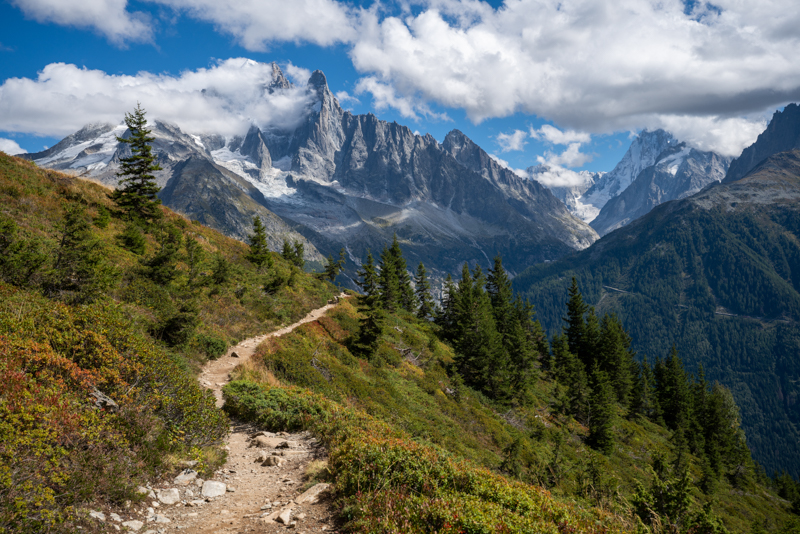
| Strengths | Weaknesses |
|
|

Recommendation: a lens that shows how much Sony’s lens design branch has improved in only a few years: better, smaller and cheaper than the predecessor, what is not to like?
Length: 88mm | Diameter: 80mm | Weight: 353g | Filter Thread: 72mm | Released: March 2022 | Price (March 2025): $1098
Amazon.com | Amazon.de | ebay.com | ebay.de | B&H (affiliate links)
Tamron 17-28mm 2.8 Di III RXD
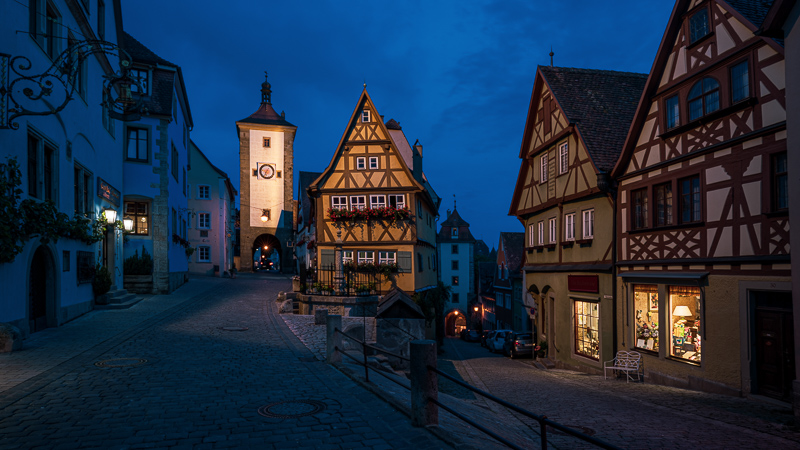
| Strengths | Weaknesses |
|
|
Recommendation: the cheaper alternative to the Sony GM 2.8/16-35 if you are okay with the restricted zoom range. Also a good alternative to most of the smaller f/2.8 primes.
2.8/16-35 if you are okay with the restricted zoom range. Also a good alternative to most of the smaller f/2.8 primes.
Length: 99mm | Diameter: 73mm | Weight: 420g | Filter Thread: 67mm | Released: July 2019 | Price (March 2025): $799
Review | Full resolution samples | amazon.com | amazon.de | B&H | ebay.com (affiliate links)
Standard Zooms
Tamron 20-40mm 2.8 Di III VXD
Recommendation: some may consider the zoom range too
 limiting while others may be happy to have a 20mm 2.8 and a 40mm 2.8 in one lens which cannot be found anywhere else
limiting while others may be happy to have a 20mm 2.8 and a 40mm 2.8 in one lens which cannot be found anywhere else
Length: 87mm | Diameter: 74mm | Weight: 365g | Filter Thread: 67mm | Released: September 2022 | Price (January 2023): $699
B&H | ebay.com | ebay.de | amazon.com | amazon.de (affiliate links)
Sony FE 20-70mm 4.0 G
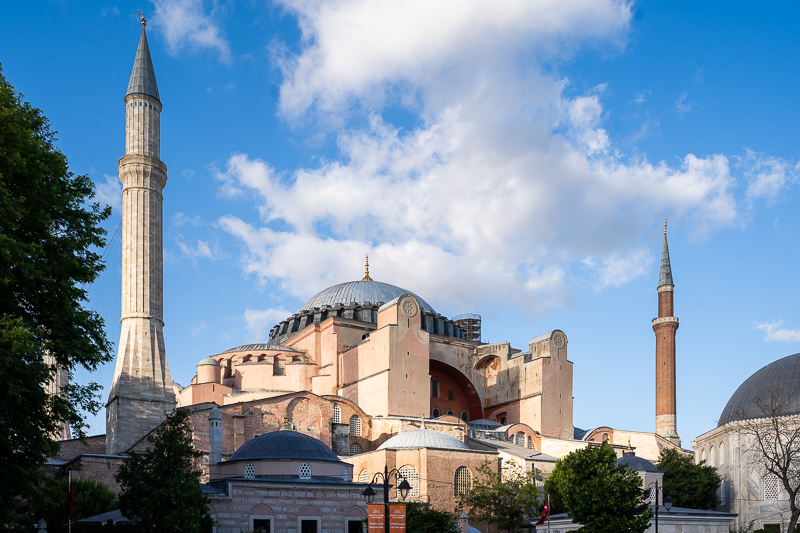
| Strengths | Weaknesses |
|
|
Recommendation: very useful focal length range which makes it a great choice for travel photography. Surprisingly few and acceptable compromises and only slightly bigger than the optically much worse Sony FE 24-70mm 4.0 ZA.
a great choice for travel photography. Surprisingly few and acceptable compromises and only slightly bigger than the optically much worse Sony FE 24-70mm 4.0 ZA.
Length: 100mm | Diameter: 88mm | Weight: 488g | Filter Thread: 72mm | Released: January 2023 | Price (March): $1098
Review | amazon.com | amazon.de | ebay.com | ebay.de | B&H (affiliate link)
Sony FE 24-50mm 2.8 G

| Strengths | Weaknesses |
|
|
Recommendation: if the combination of fast f/2.8 aperture, starting at the wide end at 24mm and compact size are what you are looking for and you can live with the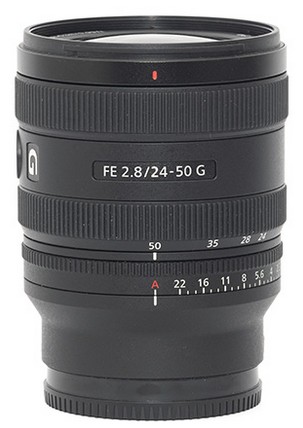 somewhat restricted zoom range, this lens might be for you
somewhat restricted zoom range, this lens might be for you
Length: 92mm | Diameter: 75mm | Weight: 440g | Filter Thread: 67mm | Released: February 2024 | Price (March 2025): $1098
Review | amazon.com | amazon.de | ebay.com | ebay.de | B&H (affiliate links)
Sony FE 24-70mm 2.8 GM II
Recommendation: sharper than its predecessor (especially at the
 long end), faster AF speed, smaller and lighter, better controls and improved mechanical design – the perfect update that unfortunately comes at a high price
long end), faster AF speed, smaller and lighter, better controls and improved mechanical design – the perfect update that unfortunately comes at a high price
Length: 120mm | Diameter: 88mm | Weight: 695g | Filter Thread: 82mm | Released: April 2022 | Price (March 2025): $2298
Cameralabs Review | Amazon.com | Amazon.de | B&H | ebay.com | ebay.de (affiliate links)
Sigma 24-70mm 2.8 Art DG DN
Recommendation: a good alternative to the Sony FE 24-70mm 2.8 GM MK I but no match to the MK II
2.8 GM MK I but no match to the MK II
Length: 123mm | Diameter: 88mm | Weight: 835g | Filter Thread: 82mm | Released: November 2019 | Price (January 2023): $1099
Lenstip Review | amazon.com | amazon.de | B&H | ebay.com (affiliate links)
Sony FE 24-105mm 4.0 G OSS
| Strengths | Weaknesses |
|
|
Recommendation: used to be the best balanced standard zoom lens for the FE system, today I would rather get the Sony FE 20-70mm 4.0 G, as for me the 20-24mm range matters more than the 70-105mm range.
FE system, today I would rather get the Sony FE 20-70mm 4.0 G, as for me the 20-24mm range matters more than the 70-105mm range.
Length: 113.3mm | Diameter: 83.4mm | Weight: 663g | Filter Thread: 77mm | Released: October 2017 | Price (January 2023): $1298
Standard zoom shootout Part 1 | Part 2 | Review at Opticallimits | B&H | Amazon.com | Amazon.de | ebay.com | ebay.de (affiliate links)
Sony FE 28-70mm 2.0 GM
Recommendation: a very interesting lens for reportage and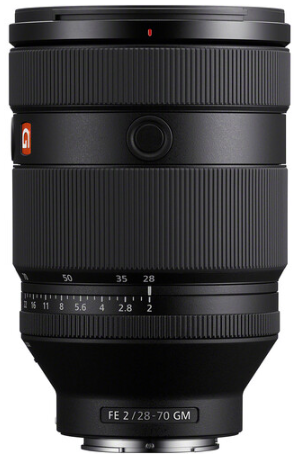 wedding photographers who prefer the flexibility of a zoom lens over using primes and are willing to give up the 24mm wide end for a full stop of more light. Much smaller and lighter than Canon’s RF 28-70mm 2.0L USM.
wedding photographers who prefer the flexibility of a zoom lens over using primes and are willing to give up the 24mm wide end for a full stop of more light. Much smaller and lighter than Canon’s RF 28-70mm 2.0L USM.
Length: 140mm | Diameter: 93mm | Weight: 918g | Filter Thread: 86mm | Released: November 2024 | Price (March 2025): $2898
Lenstip Review | amazon.com | amazon.de | ebay.com | ebay.de | B&H (affiliate links)
Tamron 28-75mm 2.8 Di III VXD G2
Recommendation: the predecessor already was a good lens, our main issues were the lack of controls and the bokeh rendering in some situations. Buttons and switches have been added, image quality has been improved, a worthy upgrade!
main issues were the lack of controls and the bokeh rendering in some situations. Buttons and switches have been added, image quality has been improved, a worthy upgrade!
Length: 118mm | Diameter: 76mm | Weight: 540g | Filter Thread: 67mm Price | Released: September 2021 | (January 2023): $899
Cameralabs Review | amazon.com | amazon.de | B&H | ebay.com (affiliate links)
Sony FE 28-60mm 4.0-5.6
Recommendation: introduced as small kit lens for the Sony A7c. Optical qualities are very solid, more solid than those of the much bigger and heavier Sony FE 3.5-5.6/28-70 OSS. If you are looking for a small lens that covers a useful range in a very light and compact package this is worth a closer look.
Optical qualities are very solid, more solid than those of the much bigger and heavier Sony FE 3.5-5.6/28-70 OSS. If you are looking for a small lens that covers a useful range in a very light and compact package this is worth a closer look.
Many people sell their kit lenses, so you should easily find one on the used market.
Length: 67mm | Diameter: 45mm | Weight: 167g | Filter Thread: 40.5mm | Released: September 2020 | Price (January 2023): $498 (~$250 used)
B&H | Amazon.com | Amazon.de | ebay.com (affiliate links)
Samyang AF 35-150mm 2.0-2.8 FE
Recommendation: Tamron was the first to offer a 35-150mm 2.0-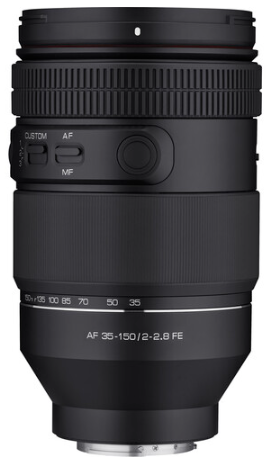 2.8 lens (see next entry). Samyang, one and a half years later, decided to offer a lens with similar optical performance at a cheaper pricepoint. The Samyang is heavier and I have seen some reports of less reliable auto focus. I haven’t tried either of these lenses personally though (yet).
2.8 lens (see next entry). Samyang, one and a half years later, decided to offer a lens with similar optical performance at a cheaper pricepoint. The Samyang is heavier and I have seen some reports of less reliable auto focus. I haven’t tried either of these lenses personally though (yet).
Length: 157mm | Diameter: 93mm | Weight: 1320g | Filter Thread: 82mm | Released: April 2023 | Price (March 2025): $1199
Lenstip Review | B&H | ebay.com | ebay.de | amazon.com | amazon.de (affiliate links)
Tamron 35-150mm 2.0-2.8 Di III VXD
Recommendation: when Tamron introduced this lens, it offered unique parameters. In the meantime, Samyang offered a lens with the same parameters (see previous entry). At the end of the day it looks like the Tamron offers slightly better image quality and more reliable autofocus, albeit at a higher price.
unique parameters. In the meantime, Samyang offered a lens with the same parameters (see previous entry). At the end of the day it looks like the Tamron offers slightly better image quality and more reliable autofocus, albeit at a higher price.
Length: 158mm | Diameter: 89mm | Weight: 1165g | Filter Thread: 82mm | Released: October 2021 | Price (March 2025): $1699
Lenstip Review | B&H | ebay.com | amazon.com | amazon.de (affiliate links)
Tele Zooms up to 200mm
Tamron 70-180mm 2.8 Di III VC VXD G2
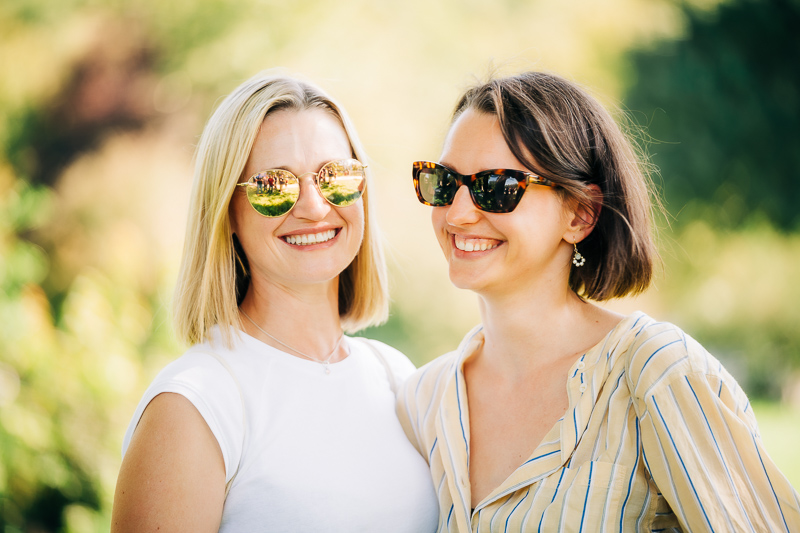
| Strengths | Weaknesses |
|
|
Recommendation: nice bokeh, good sharpness, very good CA correction, a  versatile minimum focus distance in a compact and affordable package. Handling has been greatly improved compared to its predecessor. A worthy update that made an already great lens even better. If you buy new be sure to get this improved version.
versatile minimum focus distance in a compact and affordable package. Handling has been greatly improved compared to its predecessor. A worthy update that made an already great lens even better. If you buy new be sure to get this improved version.
Length: 156mm | Diameter: 83mm | Weight: 853g | Filter Thread: 67mm | Released: September 2023 | Price (March 2025): $1299
Review | amazon.com | amazon.de | B&H | ebay.com | ebay.de (affiliate links)
Tamron 70-180mm 2.8 Di III VXD
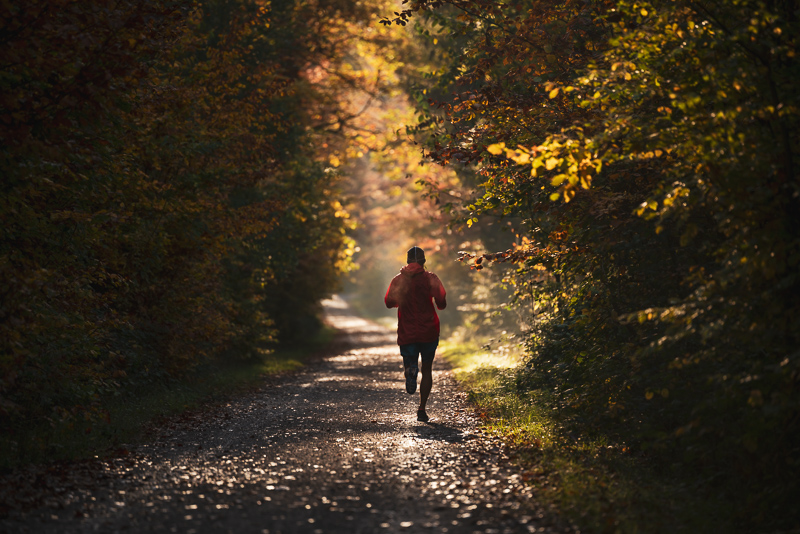
| Strengths | Weaknesses |
|
|
Recommendation: this was the first actually decent fast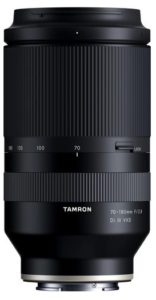 telezoom for E-mount. I personally prefer its MK II version, but if you find a used one in good condition it can still be an appealing yet affordable option.
telezoom for E-mount. I personally prefer its MK II version, but if you find a used one in good condition it can still be an appealing yet affordable option.
Discontinued
Length: 149mm | Diameter: 81mm | Weight: 805g | Filter Thread: 67mm | Released: April 2020 | Price (March 2025): $700 (used)
Review | amazon.com | amazon.de | ebay.com | ebay.de (affiliate links)
Sony FE 70-200mm 2.8 GM OSS II

| Strengths | Weaknesses |
|
|
Recommendation: the update Sony users deserved. Don’t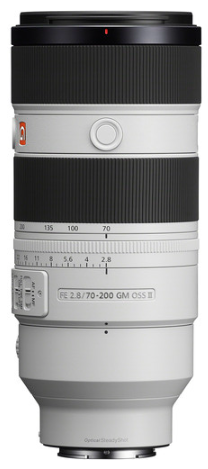 be fooled into buying the old one at full retail anymore! Not only is the performance of this MK II at the level you would expect from a lens like this, Sony once more managed to offer the lightest lens in class – despite still being a constant length internal zoom lens
be fooled into buying the old one at full retail anymore! Not only is the performance of this MK II at the level you would expect from a lens like this, Sony once more managed to offer the lightest lens in class – despite still being a constant length internal zoom lens
Length: 200mm | Diameter: 88mm | Weight: 1045g | Filter Thread: 77mm | Released: October 2021 | Price (March 2025): $2798
Review (coming soon) | amazon.com | amazon.de | B&H | ebay.com | ebay.de (affiliate links)
Sony FE 70-200mm 4.0 G Macro OSS II
Recommendation: Sony’s updated f/4.0 telezoom. Also here the 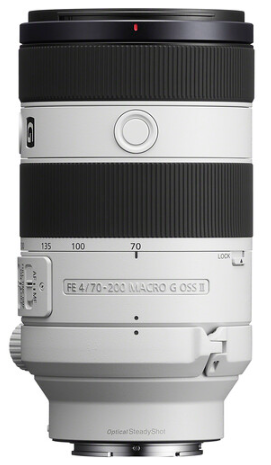 updated lens offers better image quality while being smaller and lighter and as benefit it features a 1:2 magnification macro feature on top. This is by no means a cheap lens though, for the same money you can get the one stop faster Tamron 70-180mm 2.8 and in addition to that a macro lens offering a four times higher magnification.
updated lens offers better image quality while being smaller and lighter and as benefit it features a 1:2 magnification macro feature on top. This is by no means a cheap lens though, for the same money you can get the one stop faster Tamron 70-180mm 2.8 and in addition to that a macro lens offering a four times higher magnification.
Length: 149mm | Diameter: 82mm | Weight: 794g | Filter Thread: 72mm | Released: July 2023 | Price (March 2025): $1698
Lenstip Review | amazon.com | amazon.de | ebay.com | ebay.de | B&H (affiliate links)
Tele Zooms up to 300mm
Tamron 50-300mm 4.5-6.3 Di III VC VXD
Recommendation: if you are willing to give up the 301-400mm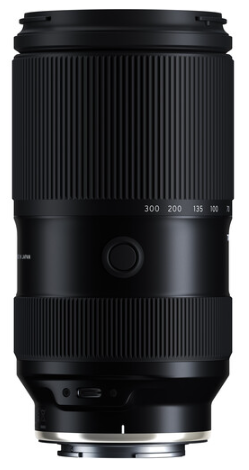 range this is a very compact alternative to the next lens on this list. The low speed can be a limiting factor, depending on what your desired applications are.
range this is a very compact alternative to the next lens on this list. The low speed can be a limiting factor, depending on what your desired applications are.
Length: 150mm | Diameter: 78mm | Weight: 665g | Filter Thread: 67mm | Released: June 2024 | Price (March 2025): $799
amazon.com | amazon.de | B&H | ebay.com | ebay.de (affiliate links)
Tele Zooms up to 400mm
Tamron 50-400mm 4.5-6.3 Di III VC VXD
Recommendation: a very interesting zoom range that can be useful if you often have to go from close up to wide scenarios
useful if you often have to go from close up to wide scenarios
Length: 183mm | Diameter: 99mm | Weight: 1115g | Filter Thread: 67mm | Released: August 2022 | Price (March 2025): $1299
Cameralabs Review | amazon.com | amazon.de | B&H | ebay.com | ebay.de (affiliate links)
Sony FE 100-400mm 4.5-5.6 GM OSS
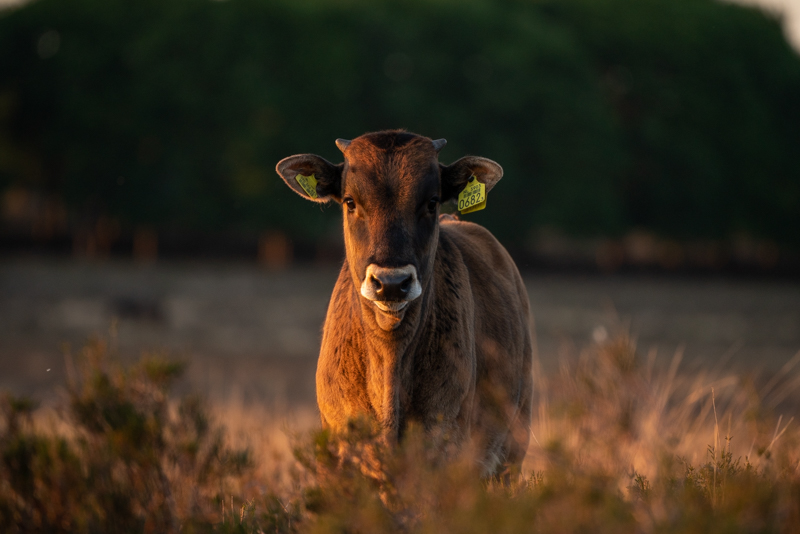
| Strengths | Weaknesses |
|
|
Recommendation: a very capable tele zoom that unfortunately comes at a high price.
comes at a high price.
Length: 205mm | Diameter: 94mm | Weight: 1395g | Filter Thread: 77mm | Released: April 2017 | Price (March 2025): $2398
Review | B&H | Amazon.com | Amazon.de | ebay.com | Ebay.de (affiliate links)
Sigma 100-400mm 5.0-6.3 Contemporary DG DN OS
| Strengths | Weaknesses |
|
|
Recommendation: this lens is optically so good that image quality shouldn’t be a deciding factor between it and the Sony FE 100-400mm 4.5-5.6 GM OSS. The build quality is not up to professional standards, still this is the best long telephoto option for everybody on a budget who can get along with the slower maximum aperture.
quality shouldn’t be a deciding factor between it and the Sony FE 100-400mm 4.5-5.6 GM OSS. The build quality is not up to professional standards, still this is the best long telephoto option for everybody on a budget who can get along with the slower maximum aperture.
Length: 197mm | Diameter: 86mm | Weight: 1135g | Filter Thread: 67mm | Released: June 2020 | Price (March 2025): $849
Cameralabs Review | amazon.com | amazon.de | B&H | ebay.com (affiliate links)
Some tips on how to choose a lens
As a team we have bought and sold hundreds of lenses. Some we used a lot more than we anticipated and others a lot less. Based on that experience here are a few tips on how to choose the right lens fro your needs.
- Buy a lens because you actually need it. Not because some guy on YouTube likes it a lot. To learn what focal lengths and apertures you use most and what characteristics you care about in a lens we can only recommend to get one lens at a time and to really learn to know it. Maybe one of our reviews can help you to identify what exactly you (don’t) like about that lens. .
- Don‘t put too much emphasis on performance over focal length. If you know you need a certain focal length, don’t buy an arguably better lens with a different focal length you are not really looking for.
- Think about your whole kit and not just individual lenses. Some of us were initially deeply impressed by the Voigtlander 65mm 2.0 Apo-Lanthar E’s performance, but ultimately sold it because it didn‘t integrate well into their kits and stayed at home too often.
If any questions remain unanswered don’t hesitate to leave a comment 🙂
Legend
- G – Sony’s equivalent to Canon’s L
- GM – Sony’s other equivalent to Canon’s L
- OSS/OS/VC – “Optical Steady Shot”: Sony’s/Sigma’s/Tamron’s marketing name for lenses that feature an image stabilizer.
- ZA – Lenses which have been developed in cooperation by Sony and Zeiss and are produced by Sony. The outer barrel is made from metal which looks nice but scratches easily.
- (manual focus) – Completely manual lenses. You need to use the focusing ring and the aperture ring on the lens to focus and set the desired aperture value. Exif data is still submitted though.
- (no electronic contacts) – These lenses do not feature electronic contacts so they do not communicate things like focal length or current aperture value to the camera
- (former DSLR design) – When E-mount became popular Sigma took their older DSLR lenses and just added a non removable adapter tube to turn them into E-mount lenses. These lenses are bigger and heavier than they need to be for mirrorless cameras and most of them have already been replaced with improved mirrorless designs and therefore have been discontinued.
Other articles
Support Us
Did you find this article useful or just liked reading it? Treat us to a coffee!
![]()
![]()
![]() via Paypal
via Paypal
This site contains affiliate links. If you make a purchase using any of the links marked as affiliate links, I may receive a small commission at no additional cost to you. This helps support the creation of future content.
The Team
Latest posts by The Team (see all)
- November / Black Friday Deals 2025 - November 19, 2025
- Sony FE Lenses: The honest Guide for the A7/A9/A1 Series - March 18, 2025
- Guide to best Sony E-Mount 35mm Lenses for A7/A9/A1 series - March 8, 2025
Great summary, but need update :). Voigtlander Macro 65mm F2 shouldn’t be mentioned in “Announced lenses not yet on the market”. It’s on market already:
https://www.bhphotovideo.com/c/product/1350400-REG/voigtlander_macro_apo_lanthar_65mm_f2.html
Not yet on the european market but you are of course correct. Give us a week or so until some information is available 🙂
Sony FE 4/70-200 G OSS – need English translation.
Please, delete this comment and the previous one. It’s just – I hope helpful – info for you.
Oops, thanks. That haopens when articles get too long 😉
Thanks!
A very nice summary. I always gets happy when I see that there is an update to this site. You always do such a good job with the reviews and test lenses in a way that I haven’t found elsewhere, like checking flare in depth. And the images that comes with the reviews are always very good as well.
There are some other lenses available in FE-mount that you didn’t mention. Brian Smith has made a very good list of all available FE-lenses, see here: briansmith.com/sony-a7-a7r-a7s-lens-guide/
He also keeps an E-mount adapter list updated which complements your extremely fine articles on that matter: briansmith.com/gear/sony-lens-adapters/
Best regards from Sweden!
/Anders
Hi Anders – we drew a different line than Brian. We only included lenses with electronic coupling except of two lenses (Mitakon 0.95/50 / Laowa 2/15) that we see as so good/special and unique to (F)E-Mount that they are worth mentioning. Furthermore, we don’t have broad enough video competence and therefore don’t comment on the Fuji/Zeiss/Sigma Video lenses. Regards, Jannik
Thank you very much for this nice summary based in your experience . I was thinking to order the loxia 21mm when I saw your comments and other reviews about the sony FE 12-24 . If the size doesn’t matter is the image quality of the FE 12-24 close to the loxia 21mm ? I know philippe has a preference for the FE 16-35 f/4 how you compare it to the FE 12-35mm. Thank you a lot Guys.
Nabil
First of all, the 12-24 focal range is quite different to 16-35. The latter is a versatile lens and suitable for documentary photography as well, the 12-24 is a more specialized lens. Optically, the 12-24 seems to perform a bit better than the 16-35, especially towards the corners.
At least in my case, the 12-24 (despite of all optical excellence and convenience) could never replace the Loxia, because of:
– weak flare performance
– no filter thread
– odd sun stars
Regards, Jannik
As far as sharpness is concerned the Loxia and the 12-24 are very close which is an astonishing feat by the 12-24. The Loxia offers less distortion, better flare resistance and nicer sunstars but not better sharpness.
I find it very hard to compare a 12-24 to a 16-35. The 12-24 seems to be the sharper one though.
Thank you
Best
Mammoth undertaking! Well done guys!
I couldn’t agree more with that statement about ZA lens finish, “The outer barrel is made from metal which looks nice but scratches easily.” (So does the Batis finish BTW)
After 6 months careful use with the ZA 55/1.8 and already that body has picked up more marks than my much used, 45 year old, Minolta MC (scalloped focus ring) 58/1.2. What a backward step. Fashion design over practicality!
Sad but true – you can’t imagine how disappointed I was when I got the 4/16-35 and scratched it already after 2-3 uses. That was by far my most expensive lens at that time. I’ll get the 1.4/50 ZA today and hope that the scratch resistance has improved in the meantime.
I am always astonished that most of my Contax lenses look still almost like new. I have the impression that the glass scratches more easily than the Contax painting 😉
Regards, Jannik
Where does the Rokinon 20mm f1.8 fit into this list? I’m pretty sure it’s full-frame and native E mount.
I doesn’t because it is a big fat SLR lens and does not have electronic contacts. See second paragraph 😉
Oh, ok. I didn’t realize it doesn’t have electrical contacts.
Thanks for the list. Nice work. Loxia 21, Loxia 85, and Batis 18 are my favorite. Please include the Laowa 12mm if you are going to include the Laowa 15mm version.
It is also a DSLR lens with just a built-in adapter.
But we might include it when we got the chance to test the shift converter.
Until then you can check out our review of a prototype of that lens.
Very interesting reviews. Thank you for sharing!
I have a question which no one has answered so far everywhere on the internet: how is the 16-35 GM compared to Batis 18 and 25mm? I have both the Batis-es, but consider to replace them with the GM.
After reading your praise for the 12-24 I am now a little torn… I love its size/weight and that it doesn’t extend like the GM. But it doesn’t take filters.. I don’t use them so often, but especially for landscape and long exposures in daylight – it is an important aspect.
Hi Stefan, I didn’t use the 16-35 GM and the Batis 25 so far, so I can’t give you a detailed answer. Nevertheless, I think that the GM could be a smart choice over the Batis primes. Sharpness seems to be on a very high level and the GM 16-35 is smaller than the GM 24-70. I’d expect the highest drawbacks in the flare performance. I think you should know if you need a 12-24 or a 16-35 lens, they are quite different tools.
I know a pro who sold off his 18mm and 35mm batis for the 16-36GM and he does not regret his decision.
I meant to type 25mm batis, not 35
Sony FE 16-35mm F2.8 GM versus F4 ZA OSS.
Having the F4 version and mostly in landscape photography would it be worth to go for the f2.8.
Must say that I’m mostly using this lens at f8.0 or f11 on my A7R2.
Will there be any noticeably difference ?
One advantage could be to have the f2.8 at 16mm in order to leave my Samyang 14mm home for astrophotography to reduce the carry-on weight when traveling with an airplane.
Just had a 2nd go at comparing the “new” FE 85/1.8 with my Batis 85, (on A7), and I’m ready to sell…..not the FE, but the Batis!
I didn’t expect that! (My 1st copy of FE was soft/glowy at F/1.8, but I knew from reviews, that the FE was better than that, so I found another. That is a problem with FE lenses, in my experience, much more copy variation.)
In nearly every comparison the FE equaled the Batis, and in several I preferred the FE…even for flare control, (I really didn’t expect that either!) More veiling flare from the Batis, which is very hard to deal with in Lr etc.
Not a lot of difference in “sharpness”, but the Batis has a rather warm, “muddy” look in comparison, whilst the FE is cooler and IMO “cleaner”, with an altogether “lighter” touch. e.g., Shadows block up with the Batis, whereas there’s much more shadow detail with the FE.
Really the only ways I found the Batis better, was in build quality, and a slightly faster AF response.
Of course, my Batis may not be the very best copy, but it is well centred and as sharp as the FE, so it can’t be a very bad one either…and perhaps I’ve managed to find a very good copy of the FE!
Copy-to-copy variation is something which is not limited to FE lenses, at least in my experience. I tried four Batis 85/1.8 lenses until finding one that was well centered. I actually had better luck with FE lenses (second 24/1.4 GM and third ZA 55/1.8).
What do you do with the sub-par lenses? Return to the manufacturer or sell on the used market.?
Great info, gentlemen. Thank you for putting this together. I hate to lug the Sony f4 70-200mm G around when I travel. A light wight lens between 70-200 would be an ideal replacement but the Batis 135 is US$2000. I tried the Leica Elmar 135 f/4 with an adapter. Not sure if I want to fuss around with setting the IBIS every time I put it on the A7RII.
Cheers,
Douglas
Dear Douglas,
we already proposed to Techart to create adapters with programmable Exif.
Thank you Bastian. I decided to get the Contax 135mm f2.8 Sonna and the Techart. Hope it’s good for landscape. The lens is so cheap that If it doesn’t work out, I won’t lose much.
Cheers.
Douglas
Hmm…. I miss the Sony pancake 20mm/2.8. I have it and want to here your opinion as an expert.
here/hear f**** autocorrection
It is an APS-C lens and this list only covers fullframe lenses that is why it isn’t listed. We plan to do a similar list for APS-C lenses but that will take time since it requires quite a lot of research.
Thx!
Hello Philipp,
first of all thank you for your effort and time you spend for this blog. I like your tests an this side very much!
But this time I have also some small critisism:
1) Please do not write second-hand-experiences in your blog, test it yourself! (example: Sony FE 70-200 f2.8 GM: with most tests it is on the same level as the Nikon and Canon counterparts, not worse)
2) Do not miscredit new lenses without testing (example: Samyang AF 50 f1.4 and Samyang AF 14 f2.8. I think dpreview opened a AF50 and they were positivly surprised about the build-quality. Who knows, maybe Samyang learned by their mistakes and build the new AF-series with longer lasting quality?
Even the AF 14 2.8 should be tested properly. The link you included shows no well done sharpness-test. Please test yourself, before making a claim of less sharp corner compared to the MF-Version!
I hope this article stays a negative exception and you follow your testing otherwise well done tests.
Please take my critisism in a positive attitude to help make your side consistent on a high quality-level an thank you for the experiences you offer in this blog!
Greetings from the baltic sea, Reinhard
Hi Reinhard,
I can’t test every lens so for this guide I had to rely on other pepople’s tests. But I had very high standards none the less. There are many reviews out there which aren’t well done and I can’t follow their assessment.
I spend several hours to find solid evidence which contradicted lensrentals’ findings on the 70-200 but I didn’t. If you know a well done comparision which supports your assesment please link to it and I will have a look at it.
For the Samyang 2.8/14 I couldn’t find a well done review so I mostly relied on sample images.
Some time ago we prepared a guest review on the Samyang 1.4/50 AF under my supervision. In the end we didn’t publish it but from it I am pretty confident in my judgement.
As I said: if you have evidence that my assesment is too harsh please send me some evidence and I will have a look at it and maybe change my assement. It certainly could happen but not because I didn’t do my research.
I can only second this. If you did not test the lens yourself don’t rate it – else you are just repeating hearsay and Internet myths based on one bad rating (LensRentals). Sony did issue a firmware update for this lens, which also improves AF at infinity. So, LensRentals’ test revealed a firmware flaw which got fixed by Sony but this never got reported in the Net hence everybody thinks this lens is a poor price/value performer. My copy of the Sony FE 70-200 f2.8 GM is the best zoom in this range ever experienced (compared to the Minolta and Sony A-mount versions). It’s basically a range of top primes at 70mm, 100mm, 135mm and most importantly at 200mm – like the 24-70/2.8 GM I have. Tack-sharp at F2.8 in the center and mid-regions with very good corner sharpness, which peaks at F5.6. Lovely color reproduction and Bokeh rendering. It’s only disadvantage is weight – it’s heavy. And AF performance could be better – faster and in some cases more precise.
Actually, I concur with this website’s 70200GM1 assessment (and lensrental’s) – average & very over-priced. I compared 100-200mm ranged with my 100400GM. I compared ~85mm vs. Batis 85mm. Yup, did all the lens updates (I think one only because I bought a couple of years before Mk2 came out.) Tested on A7Riii, then Riv. Sold it for 2/3 the going price then. But Mk2 is awesome.
Hi thank you for this wonderful write up. I am planning to purchase an a7rii or possibly wait for the a7iii, not totally decided yet but I have the a6000 to keep me content right now.
Anyway, I have been doing tons of research into lenses for when I make the jump and had a few questions on your opinion. I shoot mostly landscapes and enjoy astrophotography, with occasional portraits for friends.
On the wide end I plan to get the Laowa 15mm, but can’t decide whether I should stick to primes or go with one of the 16-35mm zooms after that. I’m very excited to see what Sigma comes up with for a 35mm, but purchasing it down the road and the Batis 25mm would probably cost nearly the same as the 16-35GM. Do you think that the Batis has enough of an advantage over the 16-35mm lenses to be worth sticking to primes? I would also be open to other lenses in that range, the Batis’ image quality seems great though which is why I refer to it.
I also enjoy tele-landscapes. Originally I thought the 10-200mm f4 would be a good fit, but based on what I’ve read here and elsewhere I feel like it might not be worth the price tag for either of the 70-200 lenses. I’ve considered the FE85mm, but that leaves a lot of distance not reachable. Do you have a recommendation for which lens in the telephoto range would suit me best for landscapes?
As a sidenote I plan to fill those gaps with the ZA55mm. Thank you for any advice you can give me! I understand everyone has different preferences and mine may be different than yours, but your experience is much greater than mine!
Batis 25: I think the GM might actually a bit sharper than it but I am not sure about the flare resistance, here the Batis will probably outperform it.
Landscape tele: Maybe start with the 85 and see how well that works for you? Apart from the expensive Batis 135 there are not many alternatives though.
Hi this review has helped me a lot with deciding on lenses as I move to full-frame for my landscape photography hobby. My remaining dilemma is trying to decide between the 16-35ZA or a couple of prime lenses. (ie. Laowa 15mm, batis 25mm, and a 35mm)
I like the convenience and versatility of the zoom and if I wasn’t into astrophotography I would probably choose it in a heartbeat. However, do to that I would probably end up with a prime lens like the Laowa 15mm anyway. I also love the 35mm focal length and I’m not sure I would like the softness of the zoom at 35mm.
Do you have any advice to help me with this decision? Thank you!
I don’t know how much of a pixel hunter you are but I wouldn’t call the ZA 16-35 soft at 35mm. Sure on a a7rii others will be a bit sharper but I think that unless you print really big the difference won’t really matter.
Personally I don’t like using the ZA 16-35 too much because it is a bit large and the manual focus is kinda meh. BUT I usually enjoy the results I get with it a lot so it is one of two FE lenses I have owned for more than a year.
The Laowa on the other hand is a very nice lens and for astro there isn’t really a competition between the two. But you would end up with three lenses, not just one.
Thanks Phillip! In the end I think the Laowa will be the lens that convinces me to stick with primes. It might take a bit longer to build my kit due to cost, but the extra speed is pretty important and there are some great wide angle lenses in the Sony lineup to decide between. I could always purchase a vintage lens or two to fill the gaps for the time being 🙂
Sounds lkke a good way
Please enlighten me.
Can I use 85GM instead of my beloved Nikon 85AiS for video work?
Has it real helicoid in MF?
Has it long travel from 1m to infinity?
Has it engraved meters on it? DoF markings?
Has it de-clicked aperture?
I want ONE lens for both Photography and video.
Now I use Batis for photo and Nikon AiS for video.
No real helicoid but focus by wire, I think the travel distance depends on the speed with which you turn the ring, no DOF markings or distance scale but declickable aperture. So probably not ideal for your needs.
No, that is wrong. The focus by wire of the Sony 1.4/85 GM features direct transmission of the focus ring movement to the focus distance. That means that the same movement of the focus ring will always cause the same movement of the focus plane, no matter how fast it is turned.
No graved meters
Has de clicked aperture
Makes Noise when focusing
No DoF Markings
Not the best lens for video probably, but maybe better than the Batis. I’d prefer the Loxia 2.4/85 or the Sony FE 1.8/85 for that purpose if I were you.
Jannik
Thanks for clarification regarding the travel distance. So what is the focus throw?
If I remember correctly it was 180 degrees from infinity to minimum focus distance.
Very nice summary. You guys are doing an amazing work. Altough I don’t own (yet) any Sony A7/9, I never miss your reviews which are among the most valuable on the web. You, lensrental and FM forum are my holy trinity to have an idea about a lens. Keep going the good work!
Thanks for you words 🙂
Man you guys are the best. THANK YOU SO MUCH for the updates on your blog.
I torn between 60 2.0 voightlander, 85mm 1.4 GM, 135 Batis, 18 batis and the loxia 21mm 2.8.
I already own 35mm 1.4 Zeiss.
Love wide angles for nice background portraits and tele portrait lens.
I meant 65mm 2 voightlander.
I am also considering the 85 1.4 GM
Pretty! This has been a really wonderful article. Many thanks for providing this info.
You are very welcome 🙂
If you get the chance please share it with others.
Dear Phillip, You and your team is doing really awesome work. I would personally love the “Voigtländer 4.5/15”, Although it is of manual focus but it is pocket friendly. The pic you shared for this model is a great one. Thanks.
I am very happy with it, although the first pictures were not good, because 15mm is really wide and something in the corner/foreground is destorted therefore, which is typical for such wide angle. F4,5 is enough, F11 is the sweet spot. Poor vignetting does not disturb me. I use it with A7R2 and also with my older NEX 6 with APSC, which makes about 21mm and an overall handy package.
I also have the Batis 135/2.8, so I can value the quality of the results.
Considering that there are now plenty of options in the 50-65mm range, and adding the huge difference in prices for the different lenses at stake, my thoughts are leaning to the classic 55mm f1.8 or the newer but MF Voigtlander 65mm f2. I know you love both, but would like a hint here because I’m building my pro system now and will always need a fixed combo lens (35mm, and here I will wait for Sigma, and something in the middle range). What do you guys think? And of course many thanks for your help.
BTW, congratulations for the web. By far the best I visit on a daily basis, kind of a sony & MF lovers bible.
New to Sony A7rii, but have used my 5dmkiv since it came out with some great lenses like sigma art 35/85 1.4, nifty fifty, canon 70-200 2.8 us ii. I do event photography in addition to street, portraits and such. I feel that the 50 1.4 is the way to go considering the focusing speed. The other 50/55 are in a better price range, OBVIOUSLy, but I was curious if the autofocus is just THAT much better on the 50 1.4 than the 50 1.8 / 55 .
FYI – I’ve been exploring manual focus with my canon lenses and the fotodiox adapter. I really enjoy it, but don’t trust myself at events with so many people moving and manual focus. But I’m getting there!!!
Thanks for article! Has been the most helpful yet!!
Zeiss FE Vario-Sonnar T* 3.3/25-50
The one lens I really wish Sony (or any other manufacturer) will make is a medium speed 25-50. To be honest I don’t think the A7 needs five 50mms to choose from. What it does need is a SMALL walkabout zoom which is optically superlative and compact. 25mm is wide enough for most landscapes without massive distortions to correct. 50 is perfect for street photography. Keep it a 2x Zoom allows optical excellence to be achieved much more easily. Keep the aperture modest keeps the lens small. Such a lens will be about the size of the 1.8/55 (maybe a smidgen fatter) and it perfectly complements the A7-series’ compact bodies. Keep it simple, keep it this side of $1500. No need for Optical IS, Macro or any non-essentials. Such as lens will be particularly welcome given the lack luster performance of the Sony-Zeiss 4/24-70. As a bonus, this becomes a 38-75 on the APS-C A6000-series. Again, a very useful range.
We now have it! Sony 24-50/2.8 😉
Hi Philip & collegues.
I don’t see the new Loxia 25mm included in the guide. Is that because the review is not wrapped-up? This lens will make us to be all on the fence in the search of the ideal landscape light line up.
Cheers.
Fede.
You can find it at the end of the article (announced lenses) until we are finished with the review.
Looking forward, Bastian.
Hahaha, why did you link Uncle Ken’s review (16-35)? Your reviews are objective and Ken is exactly opposite 🙂
Let me confess, i like his reviews. Even though he has a standard line for every new lens “Sony 1234 is the greatest lens…”, what i like is some minute data points that he always gives.
Funniest thing about his reviews is that he will proclaim one camera the best, and in some other review, he will rubbish it in the same breath.
Review equals entertainment @ken 🙂
Hi. Some comment on the Samyang 35/1.4: I think the sharpness is actually better than Sony Zeiss for portrait distance and infinity. The DIYphotography review was done in macro distance, where the Samyang’s corner deteriorates, like the Laowa 15/2.
It replaced my Sigma 35 Art for astrophotography because of even better coma correction. The AF also works flowlessly with mark 3 cameras. Of course there are some downsides as mentioned: flare, bokeh, and a slightly warmer tone. An interesting lens nonetheless and I like it more than I expected 😀
Hi, thank you for your reviews and summaries- great job.
There are some gaps though. I’m using wit my Sa7 also Voigtlander CS 21mm f/4 (great lens, super sharp on both FF and APSC, and very compact) and Samyang FE 35mm f/2.8 (similar to Zeiss pancake for FE, Samyang is cheap, amazing and flawless lens). Any particular reason why those two are not included in this list? They are great and more affordable options among the listed extreme expensive lenses…
The Samyang is included and the Voigtlander is not a native lens. If we had come to the same conclusion as you, you would find it in this list but we didn’t.
Just a thought. There is a lot of Minolta and Sony A-mount glass that actually communicate electronically via the LA-EA3 and LA-EA4 adapter (As this was your stated criteria).
I know the adapters has somewhat questionable performance in some circumstances, but some combinations are usable. For example, the Minolta 20/2.8 is almost on par with the Loxia 21 at f8 (I’ve compared them on the A7RIII) and a viable landscape option at almost a tenth of the price.
The 70-400G is also working well on the A7 bodies with the EA3 adapter.
On the other hand the 135/1.8 is performing so-so with the the EA4 adapter if you want to use AF-C. Hard to get a single frame in absolute focus. Better in AF-S and still a stellar lens in MF.
As do allmost all Canon EF and many Nikon lenses. For this already very expansive list we had to define a cutoff point and we decided on the criterium, that it must have an E-mount, communicate with the camera and cover FF. We have other guides where other lenses are considered but I don‘t think that it would make sense to include even more lenses in this list.
Fair enough 🙂
Think i have to write a few posts myself
Hey Bastian,
i would like to hear your opinion to the Laowa 15 2.0 compared to the zeiss 16-35 f4. Is it on the same (or better) level in the optical quality?
This depends on what you want to shoot, the lenses neither share a focal length nor the maximum aperture.
If you need the f/2 the 15mm will be the obvious choice, if you want the convenience of a zoom lens I wouldn’t bother with the 15mm.
Theses lenses are so different, the differences in “optical quality” are meaningless for the decision.
Hey Bastian, thanks for your reply. You are right, it is difficult to compare because of the 1mm less and the 2.0. But if i use the Laowa at f8 and the 16-35 on 16mm and f8 too… which one would you prefer ?
Laowa because of better corner sharpness and less distortion.
Really appreciate such honest reviews. You and your team are a great help to fellow photographers ard the globe.
With the A7 cameras, I was wondering if there is there a reason non have tried or considered testing the 28-85 Zeiss zoom on the Sony?From the film days, it was said that this zoom is like having a series of primes all in one zoom.
Happy to help 🙂
I think you refer to the Zeiss C/Y 28-85? To be honest that thing is rather big and Zeiss’ MTF data suggests that it isn’t as good as a prime so none in the team found it interesting. Both Jannik and David own and like the 3.4/35-70 which is reasonable in size and very good in performance.
Apologies for not being clear. Yup, I was referring to the the C/Y 28-85. I tot it was due to some techincal problems that made you guys omit this lens. Thanks, I will take a look at the C/Y 35-70.
Again, kudos to you and your team. You guys are great!!! 😉
Appreciate your honest reviews. I would like to see some Sigma art lens comparison as well. Especially the Sigma 35mm art, because that lens with mc11 is lighter and cheaper than Za 35 1.4. and, I heard that it focus as fast as native lens on A7Riii with mc11.
Thanks:)
I’m looking for a new UWA lens, and am comparing the Sony 16-35mm F4 with the 16-35mm F/2.8. So I ended up on your splendid site! Thanks for all the effort you put in it.
Now my question: the f/2.8 version is more expensive than the f/4, and it is heavier and bigger (so not a real travel lens).
Now I wondered, what are the negative consequences of having a f/4 instead of a f/2.8? I could come up with the following: 1) it is, obviously, one stop slower, so for the same exposure a lower shutter time or a higher ISO value is required; 2) an f/4 cannot produce a depth of field that is as shallow as an f/2.8; 3) auto-focus is probably slower in dark situations; 4) the f/2.8 bokeh cannot be achieved.
What would be other consequences (that I overlook)?
Thanks for the answer!
The same question also applies for the 24-70 F/2.8 GM versus the 24-105 G OSS. Here I can get a larger range, but at the cost of a stop (but improved IBIS). But what more is (negatively) influenced by choosing for a F/4 instead of an F/2.8?
Did you pay attention to the pro/con lists that we provided for every lens?
By comparing those you will get a pretty good impression of the differences.
Hi … what about the Laowa 12mm f/2.8 ? Please.
The “Our review” link for the Sony FE GM 1.4/85 goes to – Ken Rockwell, of all places!
Our own review will soon be published and the link corrected.
Really glad I came across your website. Great articles and perspective. I no longer need to wait for Dxomark lens reviews which are just not up to par with yours.
What happened to the FE 24-240mm? It’s not on your list. I find that it’s the best full-service travel zoom. It might not equal a G or ART Lens, but no one has produced a competitive lens that lets me shoot a wide shot and then zoom in for a close-up. If Tamron would come out with an FE version of their Canon full-frame 28-300mm, I might consider it. I simply can’t take the time to switch lenses while I’m on the road, so a long zoom is a definite requirement for me.
I can see the temptation; but the peripheral resolution is better on most rx10 series cameras, and the bokeh not hugely different. Of course there are advantages to using a full frame body with a superzoom, especially on a tripod at base ISO, but then that is not the usual use case for superzooms. On balance I think if most of us here were looking to make compromises for an all in one wide range kit that’s what we would do. But as with any set of trade-offs we will all balance them differently…
Hi,
in the last 4 months I spent quite some time on choosing a 50mm 1.4 for my A7rii as a companion for my Loxia50.
I hear a lot that the Sony Zeiss 50 is the new king of the hill in terms of 50mm focal lengths. So I testet it in a Shop against the Otus out of curiosity! I can say it is equally as sharp BUT in terms of look and clarity the Otus played a whole different game!
So much actually that despite the much cheaper price, the great build quality, the great AF AND MF performance, the weather sealing I still purchased the Otus (used).
Somehow images from the Otus are looking different! I’m not sure other people are seeing this but at least if you guys write the Planar50 is sharper, than you should at least test it for yourself! You never know what is special about the Otus until you own one:-)
Best
Christian
Jannik has owned it for several months now.
Hi Philip I have around $1000 budget for lens.
I will soon receive Sony A7III body.
I read your guide like everyday but still getting confused which lens to buy.
I want all purpose lens. I am not a professional just love to capture landscapes, streets, some friends family pictures.
Can you please suggest some good lens I should go for?
–
Thanks
I thinke theTamron 2.8/28-75 could be your lens.
Thank you so much Philip.
I will get this lens.
Hey Phillip.
That lens seems not available. Are there any other lens that can be on my list?
Thanks again.
FE 4/24-105 if you can find that one. A little over $1000 though. I think waiting for the Tamron might be worth it though.
Thanks. Ok.
I need your help. Long story super condensed. I’m an amateur that enjoys sharp photos. I come from a Nikon D7000 with 50 1.8, 35 1.8, Tokina 11-15, and my latest and biggest investment Sigma Art 20 1.4
My needs: Tired of lugging around anything bulky and heavy. I love to shoot at wide angles and after the sigma I am drawn into super sharp looking photos.
I’m leaning on buying the Sony A7iii. I seek recommendations on a wide angle sharp lens. Budget is around $1000-1300 at the most. I’m intrigued by the $400 Sony 28mm, $1300 Batise 25mm, and anything else you recommend? Thanks!
Giving recommendations is always difficult. I think studying our wideangle guide and deciding on what is important to you would be the best way.
Hi Phillip,
Firstly thanks for your reviews, I find them very useful.
I’m curious as to why you say the 70-200 gm is unreliable. I’m on my second one and both have let me down with focus issues, I’m not a tech but it appears something inside has misaligned. Neither lens has been dropped, although I fly a couple of times a month, all my gear is well packed in pelican cases.
Have you heard of other people having problems or am i just unlucky,
Cheers Stu
Stuart Bryce
stubryce@me.com
I talked with Roger Cicala about it who has the repair data for lensrentals.com and this data makes the Sony look really bad. So you are not alone.
Hi Phillip,
Thanks for replying, it’s sort of what I expected. A shame really, because when they work the lenses are great, an unreliable lens is worse than useless is actually detrimental.
Sony, take note, any system is only as good as its weakest link.
Cheers Stu
Ps if you know of anyone who has had luck repairing these lenses I’d love to know, I’m having trouble here in Australia
HI Stuart. I’m the Australian on the team…
Complicated AF lenses can’t be serviced by any of the excellent places that can do manual glass here, and basically have to be done by Sony. But Sony Australia has a bad habit of sending it back claiming it’s “in spec”. There is Sony pro service here now: I’m almost tempted to buy a second body just to be eligible to join. I guess but do not know that the pro service stuff is flow back to Japan.
None of this helps you I’m afraid. The 2.8/70-200 has a bad service record, according to Roger C. Luckily not all Sony lenses do, and the recent ones are getting much better.
If it’s not too old, I’d be tempted to cite the Trade Practices Act and demand an refund.Then get a new one in the hope it’ll be fine. That usually works if you sound like you might lawyer up.
Hi David,
I have the Australian Sony Pro Support since a year ago and used it to have my cameras cleaned. The repair is done by Digicam in SA who is the workshop appointed by Sony. They did a fantastic and quick job.
Thats interesting and good news!
Do you need to have two Sony bodies to qualify? I have an embarrassing riches of lenses, but usually only have one body…
I believe there is no requisites or at least I didn’t see that anywhere. When I joined, besides the A7II, I had an A6000 that I bought under $500. Obviously you have to include what Sony gear you have, website, social media and they come back to you in a couple of days.
Hi David, J.a,
Thanks again for taking the time to reply.
My experience with sony and digicam is a little different, it took 3 1/2 months and several attempts at repair for sony to replace my lens.
The replacement lens developed the same problem so it’s gone to an outside repairer, although as David said and I also argued with sony, it probably needs to go back to the factory. I personally think the lens has a design fault, 70-200 gm. I’ve accepted that I’ve blown my money and the cost of repairs now pushing $5000 Australian.
Sony got some things spot on, eye af just changed the way I work, shooting at 1.4 and knowing it’s in focus is a game changeR.
As a comparison if a piece of nikon gear goes down its fixed In acouple of days with loaner.
Nikon recently replaced a shutter in my d5 even though it was 2 months out of warranty, also nps is free.
For the record I own a couple of a9s, a7r2 and a handful of sony lenses.
On the plus side, absolutely love the 85 gm,
Sorry guys, had my rant, hopefully someone at sony reads this
Cheers Stu
Stuart Bryce
Stubryce@me.com
+61 417 010 506
I feel your frustration.
Hi Stuart,
I met a friend today that told me that his experience was not that positive, he got a camera strap lost and a few scratches on the screen. Hopefully this and your experience won’t happen to anyone else.
Great review, thank you! It will settle in my Favorites folder forever.
How about the new 40 mm Batis CF?
Will be added when we know more about it.
The Batis 40mm is a huge disappointment. I had preordered it and returned it after about 2 weeks. I would recommend staying away from that lens until Zeiss addresses some pretty serious issues.
I can confirm the issues with Eye-AF. The lens consistently front-focus when using Eye-AF in AF-C. The camera (A7iii) shows the eye as correctly detected (green bounding box) but the tip of the nose of the subject is in focus, with the eyes out-focus (at f/2). 100% reproducible for me with mostly static subject. My other fast primes (FE 24mm GM and FE 85mm) always nail the focus on the eye in Eye-AF.
Finally, the lens does not shot at f/2 when focusing closer than a couple of meters or so. The lens automatically stops down. The closer the focusing the more stopping down. It seems to be by 1/3 of a stop at 1m, f/2.8 at 0.4m and f/4 at the minimum focusing distance. This is a mostly hidden behavior since the camera UI always displays and stores in the exif the selected aperture (f/2) not the aperture actually used to take the shot. Zeiss only acknowledged that behavior (but not the specifics) recently (weeks after launch) and announced a firmware update that will increase the focusing range at which the f/2 aperture is available.
Optically, the lens appears quite good. In focus shots at f/2 can be beautiful. Unfortunately, there are no guarantees that your shot will be in focus or shot at f/2.
Dear Sir,
Trust his note finds you well!
To begin, thank you for sharing your knowledge and experience with us readers. Much appreciated!
I am wondering if you can possibly give us a review or usable inputs on a subject I feel will be consuming a lot of Canon/Sony users –
Which combination gives a better image quality: A Canon EF 100-400mm f5.6 ver II on a Sony A7 Mk II with adapter against a Sony FE 100-400mm f5.6 on the same A7II body. (In terms of image quality, AF speed & accuracy and IS efficacy.)
I am not sure how and where I will be able to read your reply. Appreciate it if you can let me know this. Send me a link or a direct reply please, as I am not very computer or internet savvy hence this request.
Thanks so much! And do excuse me if I intrude in any way.
Sincerely,
Bharat
Take the Sony.
Hi, have you done a review of Sony FE 4/24-105 G OSS as I cannot find it on the blog?
Thank you!
So far unfortunately not.
Excellent recommendation. One time I went with a Tokina firin 20mm but decided to try the 24mm focal length and took a canon nfd 24mm f2. 8. I am very happy with the result and decided to take Loxia 25mm/2.4. I wonder what we have in the secondary market is not actually sold Loxia 25/2.4 but Batis 25/2 on the contrary keeps appearing in the ads. I am impressed with the series Location although it is not so popular.
The link beneath the 2.8/400 points to a Laowa lens.
Fixed, thanks!
thank you so much for this article ! definitely will purchase
WE hear and read a lot about consistency, reliability, decentering, poor manufacturing, good and bad lenses ,… which gets me worried as I don’t have the opportunity to test and send back lenses, take the aggravation of challenging the supplier…
Granted, new recent lenses are much better than vintage lenses. This surely applies to the “good” lenses if you are lucky. But does it also applies to the bad numbers decentered, unreliable, … because let’s face it: paying 3 times the price to get something which is not good either from the start or after a few month does not seem like a good deal.
How bad is the problem? Can you quantify? Are some bad modern lenses worse than vintage ones?.. or are we talking about bad modern being marginally worse than good modern?
There is a very big difference between modern lenses and I have had more issues with them in general than with legacy lenses. For some Samyang lenses we have had more decentered than ok lenses.
Great summary and a very good reference list.
Great job!
Length and diameter of the voigtländer 21 3.5 are wrong. Just deleat this comment after correting this issue^^ thx for these great Reviews 🙂
Extremely comprehensive and very thorough lense guide that you offer here.
Just a little note which is not meant to be overly critical –
As much as I would love to have the Loxia 21mm, and as good as it is indeed, you should add to the cons the rather steep price, as you did with the Loxia 25mm to be fair.
It is even at least 200 € pricier and also in relation to other lenses you mentioned here ( see the GM 16-35mm 2.8, where you marked the high price as the only disadvantage, which is absolutely true, but regarding the fact that it is so much more versatile covering this big range of focal length, it is rather worth the price for many I guess…)
Thank you for this comprehensive list. I’ve read so many of your reviews. You all have really helped me leap into the Sony system in a way that works for me. Though you haven’t reviewed it yet, I did pick up the 24-105 f4 G OSS. When I’m doing travel photography, this is perhaps my most versatile lens and can stay on my camera for days. Distortion/vignetting can be a bit much at the wide end, but for the price and more importantly (for me) the weight, it’s a compromise well worth making. The next time you’re in Morocco, let me buy you a coffee or something. Cheers!
When we will see the review of Voigtlander 12mmf5.6 e mount by Jannik? I’m looking forward to it.
Thank you for the excellent overview. I am currently searching for a lens set up for landscape as well as documentary photography. I am somewhat torn back and forth between the Sony 24-105 F4 G OSS and combining the Sony 16-35 F4 and a fast aperture prime lens (50 or 85 mm focal length). With regard to the one lens solution, are the 24mm at the wide end too limiting for landscape photography and the aperture of 4 sufficient to achieve a nice bokeh? Or could it even make sense to wait for the newly announced Tamron 17-28 F2.8 and combined it with the Tamron 28-75 (which combination should in total only have a slightly higher price tag)? Thanks in advance, regards Mathias.
Mathias, we cannot tell you which lenses would work better for you and what focal lengths you need for your type of shooting (which we know nothing about).
Combining different types of shooting in one lens never really worked for me, the demands are too different.
In most cases I would prefer f/4.0 with stabilizer instead of f/2.8 without, but your mileage may vary here.
Thanks for your prompt reply. Of course there is no one size fits all solution. But as your review said, the 24-105 F4 is the best balanced standard zoom lens. So I was just curious if you find it also suitable for landscape and portrait photography, especially if you have budget constraints (and prefer zoom over prime lenses), or if you would recommend a combination of other lenses (in the same price range in total). Thank you anyway for your valuable hint regarding image stabilization.
It should work well for landscape.
For portrait f/4 @ 105mm and f/2.8 @ 70mm does not make a big difference.
Using an 85m 1.8 instead of either does make a big difference.
Thanks a lot!
I have been a Zeiss user for decades coming from the Contax system and then adapted to the Canon 5D – all manual. Of recent I purchased a Sony A7iii and came across a pair of Contax N series – 24-85 and 70-300 and have been giving them the workout.
I am stunned at the quality of the pictures – gorgeous colors, decent to beauitiful boketh on the tele and a bit busy on occaision with the “normal” lens, but manageable. The sharpness is unbelievable! Crystal clear hair, fine lines in plant leaves, the colors are rich, creamy, pure, outstanding. I compared these to my Canon 70-200 f4L and to be honest, the Zeiss is simply the better performer. It creates art. The pictures are simply the best I have seen in decades. Zeiss does something magical about the picture. I am not a pixel peeper, but if i were, i doubt any other lens could do better. No matter, it is the impact on the viewer that leaves them saying ‘oh, wow’. And i get that a lot. Even over the C/Y Zeiss lenses now. Don’t know what it is, but the impact is undeniable.
The lenses are huge, monsters in comparison for only f4.5 – f5.6 and heavy. The electronics work reasonably well although I cannot get the peaking to work on them – the other C/Y no problem. Why? have no idea.
The metabones v does a commendable job, autofocus is pretty good, but then again, I am a manual focus nut and when focus magnifier is on, the sharpness really, really jumps out in clarity that not even the Canon can match..
Well worth the money big time. And strong arms and hands!
Dave
Great work as always guys, but this time You have forgotten to mention one lens. The new Sigma 70mm f 2,8 macro. If You like 70 mm it is a fantastic lens optically, almost without any flaws and to a very decent price. As sharp as my Batis 135mm and works well for all kinds of motifs. Suits the A7r3 perfect.
Thanks! Will be fixed later.
Good morning, I have a camera sony alpha 7 first version, unfortunately, as you have already mentioned many times, it has a mount that is made of metal and plastic, so I have a question: what maximum weight and length can be attached to this camera so as not to damage the mount camera: maximum 300 grams, 600 grams, 900 grams – 10 centimeters long, 15 cimeters, 20 centimeters. Currently, I have a Sony fe lens 28-70 mm f / 3.5-5.6 oss (it weighs approximately 300 grams length of 8 centimeters) and I would like to buy a better lens, the best macro, macro lenses that interest me weigh from 602-625 grams (Sony fe 90 mm f / 2.8 and Voigtlanger 6 5mm f / 2.0) – the question is whether these lenses will not be too heavy for sony alpha 7 I. There is still Sony fe 50 mm f / 2.8 (236 grams and 7 centimeters in length) but to take a 1: 1 macro picture you have to be very close to -3.5 centimeters from the objects, usually I take pictures from the hand, without a tripod, I have a tripod but mostly I do not find in my closet
Can’t give you a number for that. Would probably buy the lens that is the best fit and in case of mount issues replace it.
Hi to the team,
Thanky you for the update.
I have read the update and see that you mention Sigma 35f1.4 is weight 775g but infact the weight for this len is 660g, also filter thread is 67mm not 77mm.
Thank you
Filter thread is corrected.
What is your source on the weight? Mine is Sigma‘s German page which lists 665g for Canon EF-mount but 755g for E-mount.
My source is my own len, Sigma 35f1.4 for e mount. I can’t show pictures to you because this Web can’t add pictures in comment but I think my info is correct. The box show that filter size is 67mm and the weight is 665g. And I also feel that my lens not heavy than 700g for sure.
Any chance to put it on a scale?
May I know your mail? so I can send the pics to you.
I browse the Sigma website and see that it show 755g also but when you click inside to e mount version, it’s will show the number that I told you.
As far as I understand you have a box which says 655g which I don‘t consider any more reliable than Sigma‘s website. If you tell me that you put it on a scale and it measures 655g I am happy to change it. It is not that I doubt that you have the box, just think it is weak evidence. Or we wait till next week when Bastian gets his and puts it on a scale.
My Sigma Art 35mm 1.4 E-mount arrived today so I put it on a scale:

Maybe next time you are so persistent about being right, make sure you actually are.
I already put it on scale and the weight is 665g
Changed, thanks.
I’m so sorry about the weight but I’m right about the filter size. I’m not lie to you because from the instruction paper on the box it’s also show that the weight is 665g. I don’t know why too. and all the website that sell this Sigma 35f1.4 e mount in Thailand is also show this info to everyone. I mean the popular one here.
Example website
http://www.avcamera.com/index.php/sigma-lenses
https://www.youtube.com/watch?v=wPGHGps1SOg
l
https://www.sigma-global.com/en/lenses/cas/product/art/a_35_14/specifications/
Sorry again
The issue is that the E-mount lenses need to be significantly longer to accomodate for E-mount’s much shorter focal distance and are hence all 90-100g heavier than the EF/F-mount versions.
I am grateful for any tip. Guides like this are a pain in the ass to write and with so much data of course mistakes happen and I am very happy for any tips about possible mistakes. But please don‘t say you measured it if you didn‘t ;).
This is a great contribution to the SONY community. THANK you for myself and everybody who doesn’t acknowledge your great efforts. I also wanted to point out if you were not yet aware that SONY just announced a new 35mm F1.8 lens that will be “about” the same size as the SONY/Zeiss 55mm plus or minus, but is supposed to be a very good lens also, no OSS, like the 55mm, and cost about $7XX.xx. Plenty more info on you tube if you want, and perhaps there is the SONY news release (?). regards,Dan
Thanks Dan.
Could you please add the link to review of Sigma Art 1.4/35? (And probably other recent reviews.)
First off, thank you for your work!
Regarding the Sigma 105/1.4…
I myself was hugely disappointed by the auto-focus performance. Only about 10-20% worked with eye-focus to begin with, and about half of the remaining ones were even completely out of focus! We are talking about nice daylight, Sony A7R3. Totally unacceptable for this price and the other shortcomes (size, WEIGHT) one has to cope with already, if you ask me, and it is well within the range of complaints you mentioned yourself.
Maybe it would be worth putting the unreliable auto-focus into the cons box. It is an important issue, specifically with such a lens.
I don’t get why you skipped the samyang 135mm f2!
Because it has no electronic contacts. It might deserve a spot in the bonus section but then I hesitate to recommend a long MF lens to the mostly beginner level readership of this article.
Excellent review!!
I was looking for an Article like this for a long time.
Great contribution! Keep this hard work.
You are welcome, hope it helps you to make a good decision.
Sigma Art 1.4/20
I love this lens :
Ideal for landscape, panoramic assemblage or close portrait.
Sharpness and bokeh excellent.
Very good to excellent from F2.8 to F11
Excellent color rendition
Hi!
I’ve found a little typo in the header:
„Sigma Art 1.1/35 DG DN“
Cheers!
You guys are doing a great job reviewing lens that helps me alot in making decision. Im currently looking at sigma 14-24mm f/2.8 hoping you guys have a try on it. Deciding between this and variety of ultra wide zooms.
Unfortunately the german Sigma distributor is not very supportive, therefore it might take some time before we review this one.
Hi,
I think you should consider removing or rewriting this part about the Samyang AF 14mm:
“Recommendation: We find it hard to recommend because f/2.8 is of limited use and Samyang has a reputation for unreliable lenses.”
That statement without any proof sounds very unprofessional, like you may be just spreading baseless rumors around. Or that you have some bias against Samyang.
And about the f2.8 aperture, well actually it’s pretty good for a 14mm and not limiting at all, IMO.
And it’s also funny that you don’t mention that when writing about the Loxia 21 – the team’s favourite WA 😉
I don’t even own any Samyang at the moment, I had the 35mm f/2.8 and sold it because the AF wasn’t good enough for me.
It seems you did not get the message and rather read what you wanted to read.
Problem here is, that the performance at f/2.8 is not exactly great, not that an UWA with a maximum aperture of f/2.8 is bad.
There are numerous reviews online to back this (e.g. the lenstip review).
And as you have experienced yourself: there is always something wrong with those Samyang lenses.
For most they are just a compromise or a step stone until they can afford something better.
Maybe this is not the case for the new 85mm 1.4 anymore (or the lenses from the XP series), where it seems many people are happy with.
Hi,
Is the sharpness of the Sony 28mm f2 similar with the Sigma Art 35mm f1.4 or is there a very big difference ?
Thank you
Always depends on application but the Sigma is quite a bit sharper.
Thank you for your reply
I looked at your article about astrophotography and i hesitate between those two lenses. I mainly want to shoot portrait and stars with one of these two lenses.
I wonder if the photo quality is significantly better in the Sigma f1.4 for these two uses. I think there’s no big difference for portraits but astrophotography is really specific. What do you think about that?
(I have a Sony A7 III)
Update the list to add the Voigtlander 50mm F2 APO-Lanthar!
Done!
Hi,
what happens to the review of the Sony Fe 28mm f2? The link goes blank.
Many Greetings
Heiko
Great and very useful review, thanks !
Can we expect to read some specialized lenses addition, like the Laowa 25mm f/2.8 2,5-5x Ultra-Macro, which exists in FE mount ?
Not planned at the moment but never say never 😉
Jared Polin on YouTube said the Sony FE 2.8/70-200 GM OSS AF was unreliable with back focus issues.
Interesting. Do you have any other sources for this?
Sony 70-200mm F2.8 back focus,
YouTube Jared Polin
Tamron 70-180 2.8 vs Sony 70-200 2.8 | Don’t waste your money on …
At 2:56 to 3:20 and 13:40 to 14:03
I meant besides him. He is better known for clickbaiting than for careful testing.
Yes he uses sensational headlines but that review seems credible. Causes enough doubt not to buy the lens.
Well we come to a slightly different assessment here, it could also be that he used an issue with his personal copy for his clickbait headline and other copies don’t have the issue. If you find other sources reporting the same issue then I am happy to include the issue in this guide.
Phillip obviously you should test the lens.
This must be your most read article, and rightly so, if that is true. A great compilation indeed, with objective point of views.
Some of it maybe dated? I saw Samyang 35:1.4 entry. You have reviewed it since then. You want to rewrite it or some other entries?
We have already updated it several times but it is always a big undertaking since quite a few lenses were released since the last update so we don‘t often find the time.
I wish I had put more trust in your review of the 4/70-200mm, over what I had read elsewhere! I bought one last year, and while it is a decent lens, it never really delivered the sharpness I wanted. The MFD is about a metre, too which is somewhat limiting. “Jack of all trades, excels at none” is the perfect description.
I have sold it and bought a Sony 100-400mm, which is very, very sharp, and pretty good even at 400mm. It’s very good for shooting stuff that borders on macro, espcially with an extension tube (butterflies, that sort of thing). It weighs nearly twice as much, but feels well built.
I have a suggestion 🙂
You describe the lens sharpness/resolution as “good” “very good” “Superb” “excellent” and so on…
If you can standardise these adjective where they can be cross compared? (To a certain extent)?
Like Batis 135 has superb resolution but Sony 135 has excellent sharpness…so I don’t know which one is sharper 🙂
Just a humble suggestion..
Nice job, you should probably include the updated sigma art f1.4 which I believe is now smaller than the GM and performs as well as their older laviathan version
A few lenses are still missing and will be added soon.
The websites opinion on the Tamron 2.8-5.6/28-200 are completely off. My tamron is sharper than my 75-150 Minolta MD 4.0. Its probably one of the best lenses I’ve bought and consistently is sharp enough for landscape photography. Get off your prestigious soap box of it being a super zoom.
Their should also be mention that the Voigtlander 21mm is rather poor wide open for astro.
I doubt you even read what we wrote about the 28-200.
A lens is also defined by more than just sharpness.
Considering there’s only a paragraph on the Tamron 28-200, there’s not much to read!
I love this website and own 2 Voigtlanders, thanks to it. However there’s certainly some bias on some of the lens reviews
or whether they get reviewed. The Tamron is probably the best travel zoom and one of the best lenses for serious backpacking where weight and focal range are ways competing.
Adam, do you understand that this is not a professional review site, but a enthusiast/hobbyist blog? The team tests the lenses they find the most interesting and want to use for themselves.
I think it’s clear that all the Tamrons but the 70-180 disqualify if bokeh rendering is a major criteria. Listing concrete weaknesses for the 28-200 could take a while, because you would have to specify them for a all the different focal lenghts, at least for 28/35/50/85/105/135/200mm. Maybe optical performance is weaker at some of them? But if you prefer convenience over anything else you will know.
Still i think it would be quite interesting to see how the Sony 24-105 performs compared to the Tamron 28-200 since the Tamron is more versatile cheaper and lighter.
I’m not sure what was the benchmark when testing 28-200. If it was tested against a bunch of high-quality primes, then of course it’s highly compromised. If it’s tested agaist Sony 24-240 then it’s miles better. But what I’ve noticed is the fact that methodology is not the same for 28-200 and 28-75. Let’s take a look at Pro’s of 28-75 and see how those apply to 28-200
Sharpness – they are very similar sharpness wise, and it seems that 28-200 has a slight edge in corners 28mm wide open
Wide Range of Applications – being 28-200, it has an even wider range of applications
Size – they are the same size
Price – 28-200 is slightly cheaper
Macro Feature – they have the same maximum magnification on the wide end, and 28-200 has superior magnification on the long end.
Cons are also very similar, but in addition, 28-200 has even worse bokeh and one-stop slower aperture at longer focal lengths.
And in the end, 28-75 is highly recommended (and rightly so) while 28-200 is marked as a lens with too many compromises. What are those significant compromises? Is worse bokeh and F/2.8-4 (on 28-75 range) enough to make it that much worse than 28-75 despite all the pros?
Again I am not sure you actually read what was written here.
1) I wrote that it offers better optical quality than the Sony 24-240mm, and everything else would be a great surprise, one is a 10x zoom starting at 24mm the other one a much easier to design 7.1x zoom starting at 28mm.
2) Of course it is also compared to primes. Some zooms do not have to fear that comparison while some clearly do.
3) And this is the most important one – I wrote “none of us is personally using a superzoom” Why? Because for what we use full frame cameras for we already see the idea of a superzoom as too much of a compromise, because what this lens can do you do not need a full frame camera for, you can just as well use an A6000 series camera with an 18-135mm lens or even an RX10 series camera.
4) maximum magnification: the 70-180mm also has great maximum magnification values on paper, unfortunately the field curvature is so abyssmal that it is hardly usable here.
5) The 28-75 has a “Budget recommendation” note, that means good price/performance ratio, because it is the cheapest f/2.8 standard zoom that many may find useful for reportage/wedding work.
As I said before, sharpness of the 28-200mm look sufficient for many tasks, but sharpness is not everything, even though some review sites may tell you otherwise.
Nevertheless I changed the wording in the article a bit, to make this more clear.
This is my favorite website as far as Sony camera gear goes, and I tend to read every article very carefully, often multiple times 🙂 Maybe I get a bit spoiled with other reviews of yours, hence I think you didn’t give a proper evaluation to 28-200 compared to other lenses.
You’ve mentioned that it has a better IQ than Sony 24-240 as well as a brighter aperture, but the same can be said for 28-70 kit lens as well as 24-70 F4. And if you compare it to similar lenses for other systems, also compares really favorably. I would be really curious to see a comparison with Sony 24-105 F4, since 28-200 is brighter in 28-54 range, equal in 54-75, and a third stop less bright in 75-115 range. I doubt it would be superior, but simply playing on same level would be a great result, especially for such a light and relatively cheap lens.
Comparison with APS-C (or bridge) cameras is not valid IMHO. Firstly because there is not APS-C 18-135 F/2.0-4.0 camera that would match both FoV and DoF. And secondly, because those APS-C 18-135 lenses are vastly inferior in image quality. I did a comparison with the Fuji 18-135 lens, which is maybe the best APS-C lens with that focal range, and the difference is significant in any image quality segment.
Since I really want to have a small and light package, while packing formidable image quality, my kit consists of 28-200 along with 18mm, 45mm, and 75mm Samyangs and Sony 28mm F2. Besides inferior sun stars, I did not notice any significant drawbacks in using 28-200 for landscape scenarios. Granted, those are not the best primes available being rather tiny and cheap, but 28-200 is also tiny and cheap for such focal range/aperture, so I think comparison makes sense.
Based on my research, there is no system, regardless of sensor size, where you can cover such a zoom range, with solid aperture, solid image quality, and in such a compact, light, and relatively affordable package.
Bastian, I love your photos and the work you do for the website. However, your comment below reeks of pretentiousness and ignorance:
“…we already see the idea of a superzoom as too much of a compromise, because what this lens can do you do not need a full frame camera for, you can just as well use an A6000 series camera with an 18-135mm lens”
It’s completely obvious that you guys haven’t used the lens and have a biased opinion because it happens to be a super-zoom by classification. I swear if Tamron had the identical lens and it was simply 28-105 then all of a sudden praise would be made about it! I had an A6000 with the 18-135 lens and it’s nowhere near the image quality I get with either the A7iii or A7RIV with the Tamron 28-200.
While a superzoom may not fit with your type of photography style, they are indispensable when it comes to landscape photography in harsh conditions where switching lenses can be difficult or ill-advised (blowing sand in deserts or snow in the mountains).
Toma Paunovic makes salient points about the highly praised 28-75 but somehow the 28-2000 is marked as a lens with too many compromises??
Take a look at the photos from my album if you want to see what the lens can really do before making blind comments about its compromises.
https://flic.kr/s/aHsmPFuxsQ
I don’t see why there would ever be sudden praise for a 28-105mm lens.
Below you say you want a light kit with high image quality, and you pack an 18, 28, 45, 75, and the 28-200. That is a lot of overlap!
If there aren’t any significant compromises, why are you willing to duplicate most of the short end of the Tamron superzoom with primes?
From the images I’ve seen, the 28-200 is a lot better than I’d expect, and would make a great one-lens kit for backpacking. But in saying that, it is entirely consistent with there being compromises I wouldn’t want to make in normal shooting situations.
I almost never use all of them 🙂 It’s either 18 + 28-200 (when I’m shooting just landscape) or 28-200 + 45 or 75 (for travel, kids etc), or sometimes just primes when I don’t need a telephoto range.
Compromises with 28-200 compared to my primes are pretty straightforward. I get way less background blur and the quality of background blur is also compromised. I’ve also noticed that it’s harder to get sun stars, and that quality of sun stars is worse than 28mm f/2, but I still need to test this more. But in general, depending on my needs for shallow DoF and wider than 28mm, I need to compliment 28-200 with some primes.
It would be even better if there was a compact 70-200 for FE mount, but every one of them is significantly bigger/heavier than 28-200. I hope that Sony will release something akin to 28-60, that will cover the telephoto range. But so far, even if you only need 70-200 range, this is the most compact solution.
If You need a small but excellent lens for landscape photography in between Your wide angel zoom and tele zoom I can recommend the not mentioned Sigma 45 mm f2,8. It gives very very good detail on higher resolutions like 42- 60mp up to f14, with is quite unusual these days… and it is actually a joy to use, even with manual focus. I use it often in my professional work as forest and forestry photographer up in the nordic countries. The nordic taiga forest with pine and fur trees and all small needles disclose most lenses…
99% of new lenses will perform pretty good when stopped down. So are those differences really worth those thousands of euros?
I believe the most important factors are ease of use, especially for manual lenses, durability, number of aperture blades, minimal focusing distance.
There is no Sigma C 100-400 / 5-6.3 DG DN OS SONY-E lens available yet, but probably because you haven’t tested it yet
There are several lenses that are missing, a few sigmas and a few samyangs mainly.
Did you simply forget to add the A7RIV in the article title or is there another reason why this model is excluded?
Didn’t exist at the time of release.
Hey guys!
I have a question regarding the telezooms for the system. If I don‘t need 2.8 would you go for the Sony 70-200 F4 or the new Tamron (70-180)? Regards Mathias
Minha a6000 sofreu um acidente, migrei para a7II, tenho a lente do kit antigo, uma16-50 que quase não uso e uma 55-210 que também rstou do sistema antigo, recentemente adquiri uma Voigtländer 40mm.
Fotografo na maioria das vezes paisagens, sinto falta de uma grande angular mas também gosto de fundo desfocado e comprimentos focais maiores para a vida silvestre. A moeda brasileira anda muito desvalorizada: R$ 6 para U$ 1. O que você me indicaria, por gentileza?
I have the Samyang 35mm 1.8. Early days with it, and still need to put it through its paces in some respects, but it seems to be what I was hoping for (basically, the same set of compromises as the Sony 1.8, which I’ve hired & like in terms of everything except price). Sharp, good contrast, small, well balanced… For my uses, which are reportage/documentary/Street in the main, it’s in most respects the same lens as the Sony. A welcome alternative if nothing else.
When it comes to macro lenses, there is also a lens Sigma SIGMA A 105 mm F2.8 DG DN MACRO Sony E
@Team: Thanks for the constant stream of updates.
@David: Are you planning on writing a full review of the Sigma Art 85/1.4 DG DN? 🙂 Really curious about your detailed impressions.
Christopher Frost had a look at the Samyang 35/1.8.
It might though have been a pre production sample, judging from his Introducing words.
(seems I can’t insert the link. Video is from 21.09.2020)
Thank you for all this work! I am new to Sony and after reading your review of the 21mm 3.5 color-skopar voigtlander I grabbed a copy. Love the lens! I am curious about my next purchase. I am thinking between the voigtlander 40mm, 50mm 1.2 or 50mm 2 APO. I mostly shoot landscape while I hike and want something with more zoom. I like the focal length of the 40mm, but the APO seems to provide a very clean image. I would love your opinion(s). Thank you all again for all your work.
Thanks for updating the list. Appreciate the hard work.
I agree with your general assessment of Samyang lenses but 2 of them shine. 85/1.4 AF and 35/1.4 AF. I do not own 35/1.4 but i shot with it and its great.
Maybe the Sigma (meant for DSLR) lenses don’t belong here. They were stop gap.
Stay safe,
Nde
Thanks for updating the list. You should consider modify comment abbout Sigma C 45. It was obvious that once the L bayonet was created and the 45 sigma appeared, Sigma would release more in that line. The only question was when would we see them. And now we have 4 and more to come.
No, new ones are at least one stop faster, most likely because the 45 sold all but well.
Sigma C 24/3.5 is one stop faster?
Pretty sure you know which ones I was talking about.
You guys are over infatuated with well centered lenses. I’ve never tested any lens for decentering and never ever had any problems! I’ve purchased old new, used off ebay, never had any problems..
I thought the issue was overblown, too, but just recently I got rid of a Samyang 35mm 1,8 that had a really soft right side (even when stopped down and not just the extreme corners either). It was noticeable even at normal viewing (not just 100% peeping) and made the lens unusuable for anything other than wide open close ups.
Personally I don’t “test” lenses for it and when I notice problems only in 100% crops I don’t care either, but the issue really exists.
Hi there.
I am new to sony alpha 7III. I have the 28-200 Tamron as my first ( and only lens thus far). I am looking for something sharper, faster and smaller for portraits and landscape.
Trying to choose between Sony 85mm/1.8 versus Zeiss 55mm 1.8 versus 35mm/1.8 Sony or just get another zoom like 24-105/F4 or Sigma 24-70/2.8 ?
Also looking at it as I am building my lens kit slowly.
Any suggestions ?
Hi Rufus,
you have a very versatile zoom already so I wouldn’t go for another zoom.
As a first prime I would lean towards the ZA 1.8/55: it has the nicest bokeh of the bunch and also best balance of size and performance in my eyes. While it isn’t a specialist landscape or portrait lens you can do both and a lot more with it. Make sure to not overpay on it though, used it can be had for around $600.
Thank you very much Phillip. You and your team do an amazing job!
One last Q. Any thoughts on ZA 55/1.8 over Sigma 35mm/1.4 ?
Two very different lenses. Unless you are sure you want a 35mm go for the smaller ZA55.
Very disappointed in the dismissal of the 28-200mm, which is a great travel and all-around zoom for hobbyists.
If you recommend the 24-105mm, then there is zero reason not to recommend the 28-200mm, which is of comparable sharpness and brighter through 56mm.
To the authors
Thank you very much for this excellent and very comprehensive article. I recently purchased an A7R IV, coming from the Canon EF ecosystem lens mount-wise (mostly; got some EF-M lenses also). This article is extremely helpful.
Regards.
Mike H
I greatly appreciate this comprehensive view of E-mount lenses, thank you!
Can you please bring us all up to speed on the new Sony G-lenses (24mm, 40mm, 50mm).
Hello. Thank you for a great site. It is informative and fun to browse.
Regarding 85 mm lenses – would you recommend the Sigma Art 1.4/85 DG DN or the Sony 85mm GM?
I have the 24mm GM and love it. Never have my bad photos looked so good! Seriously though it is fun to use and I like the way it balances and handles. I bought it based mostly on your review so I would be very interested in your opinion on the Sigma Art 1.4/85 DG DN vs the Sony 85mm GM.
Many thanks.
We will have a review of the 1.4/85 DG DN soon.
Both are great lenses, the GM seems to still have a little nicer bokeh, the Sigma is a bit sharper and smaller (and cheaper).
I look forward to reading the review. Thank you for the summary.
I think you can remove Sigma DSLR designs from this list. Thanks.
Phillip and team .
Thanks a lot for this very informative site.
Trying to choose between Batis 25mm (refurbished $780 versus the Sony 24mm.1.4 (very difficult to get used ones in market-so will have to be new.)
Any thoughts?
I cannot recommend the Batis 25.
If the 24mm 1.4 is too expensive maybe have a look at the 20mm 1.8 G.
Many thanks.
Danke für die tolle Übersicht! Habe momentan als Ultraweitwinkel nur das Samyang 18mm. Leicht und klein, ausreichende Qualität an meiner A7iii. Ist mir aber nicht ganz weit genug :).
Angesichts der Größe, des Gewichts und gewölbter Frontlinse fallen für mich die Zooms weg, auch wenn mir die Flexibilität gefallen würde. Ein modernes gutes F4 gibt es leider ja immer noch nicht.
Auch für Astro fehlt mir noch etwas.. Bislang liest sich immer noch das Laowa 15mm F2 am besten, obwohl es auch ein paar Jahre auf dem Buckel hat. Könnte dann das Samyang ersetzen. Was meint ihr?
Ja, ist deine beste Option in dem Bereich.
1. The Sony 28-60 lens has no OSS.
2. Wide-angle large aperture lenses are useful for close-up dance photography.
3. The Tamron 28-200 lens actually holds up a big aperture quite well.
4. I used to buy a lot of lenses listed on this website, but after getting the Tamron 28-200, I’ve sold 10+ vintage lenses within the 28-200 range, this lens cures GAS.
Thank you for this unique overview and honest opinions.
I would like to comment on the FE 24-200mm OSS:
In reviews, 3 focal lengths are usually tested for zoom lenses.
Therefore the FE 24-240mm rightly loses any comparison due to the very poor performance at the edge of the frame at 24 and 240mm.
However, the optical performance is very good between (28)35 and 160(200)mm from f/8 (11 is even better) even on the 42MP of the A7RII/III in the entire image field and clearly superior to the RX10/FZ1000.
In addition, the lens offers durable processing and a mechanical zoom, and the significantly better dynamic range of Sony’s small-format sensors are a boon, especially for landscape photography.
Stunning work ! Thanks a lot for this very complete lenses summary 🙂
i think you meant Panasonic FZ1000, not TZ1000
A great update. You and your site are the best source of information on lenses for the Sony system….plus you guys actually are photographers that take real world photos. Pixel peeping can be fun but you offer practical advice on the meaningful differences in various lenses. Kudos!
The correct preposition used with compatible is “with” and not “to”
For example. The SEL200600g is compatible with teleconverters
How about the tamron 100-400?
Would be news to me that this is available for E-mount.
I can see you’ve ruined the seals on your zeiss lenses. Just a tip for anyone, do NOT mount the lens by holding the back of it and turning, this will for sure ruin the silicone. Instead, turn the focus ring fully and then mount the lens using it.
Camralab has reviewed the Tamron 28-75mm F2.8 G2 (https://www.cameralabs.com/tamron-28-75mm-f2-8-di-iii-g2-review/). It earned a Highly Recommended.
Hallo an das Team,
danke für die tolle Arbeit, die extrem hilfreich ist als Sony-User 🙂
Gibt es zeitnah eine Aktualisierung dieses Guides? Das allermeiste ist ja schon drin, aber teilweise ist es hilfreich z.B. eure eigenen Reviews zu sehen, die Dezember 2021 noch nicht vorhanden waren (z.B. Sigma 85 DG DN).
Grüße!
Normally I seek guidance from and completely defer to the team. However I must say, the copy of the Tamron 24mm F2.8 Di III I received from amazon for USD $140 new, is excellent for a budget lens, light and a bit plasticky it’s true. The AF is not slow, it’s not Sony FE 55mm F1.8 fast, true, but on the A7R3 its quick enough, doesn’t hunt in low light, very reliable, dead quiet, and the macro feature in use is seamless. For sharpness I would say it’s remarkably good and very even to the corners even at F2.8, and certainly not just good at infinity! It’s not got the punch of the Loxia 50mm F2, but it’s very even, and how they made such a good lens that is this decent for such small money, is beyond me. Amongst several premium lenses it is not all disgraced, I would put it broadly in the league of the Sony FE 85mm F1.8.
Just because a lens isn’t praised to the highest or among the best ones one can buy doesn’t mean that this lens in particular is bad.
I was looking for a fast 50mm for some time, but there were several problems. First, I like that focal length not that much and prefer a little shorter or longer focal lengths in that range. Second, I use different systems. Hence, the comparably new GM 50/1.2 is nothing for me despite being basically flawless if you don’t mind the 2k+ price tag.
One day I had the chance to get the FE 50/1.8 new for about 130€. The review here suggested the lens being “not bad” — to put it simply.
At first, I was not so excited as this lens truly seems to be nothing special. The not that fast and a bit noisy AF as well as the only 7-bladed aperture diaphragm seemed to be clear downsides of this lens, too. So this lens sat on the shelf for some time and got not very much attention.
Until I packed it for a shooting as a backup — just in case that this focal length would be needed. And indeed there came up some situations where 50mm were the right choice. I have to admit that fast AF wasn’t needed, but it didn’t feel very slow either. At the end of the day this little lens turned out to be an excellent performer for the job and the urge to get a “better” 50mm vanished in that very moment.
Eventually I still got the Sigma 40/1.4 for EF-Mount (for a very reasonable price — and in EF-Mount to adapt it on different cameras) which is optically truly exceptional and adapts well on Sony, but that lens is simply very, very heavy.
Thus, for hiking trips I would still pack the FE 50/1.8. Not only because the financial loss would be quite limited if something happened to it, but also because it simply works very well for me.
Interesting to hear of good experiences with the Tamron. They make some really good lenses, I just don’t like their rather cheap haptics and general design.
Any chance to add Voigtlander Nokton 50mm 1.0 to the list? Seems to perform better in nearly every aspect than the 7Artisans in all reviews I saw.
Very unlikely.
It is not an E-mount lens and it already has severe field curvature issues on a Leica camera that will only be amplified when used on a Sony camera.
The Voigtländer 50mm 1.2 E is a very good lens and a better choice for E-mount users than the VM 50mm 1.0.
Hello,
Does anyone use the Sony FE 2.8/24-70 GM MK II?
Would you recommend it for an everyday walk around lens?
I am wondering whether to get this for an upcoming vaction or the 35mm GM.
My current kit is the 24mm GM, 85mm Sigma DG DN Art and my rarely used Tamron 2.8/28-75 Di III RXD.
All advice and comments welcome.
Thanks.
What makes you think you will be using it more than the Tamron you already have?
Thank you for the reply Bastian.
Good question.
The 24mm and 85mm are more fun to use. The bokeh is better. The color rendition and contrast are better. I enjoy using them more. I like the look of the photos I get from them.
The 85 sees more use at home and the 24 is my usual walk-about lens (with the 85mm in my bag).
These are the main reasons I don’t use the Tamron. The GM Mk2 will hopefully address some of those points.
I have taken several photos with the Tamron that I am very happy with though and I liked having the zoom range.
However for the vast majority of the photos from the Tamron I kept thinking ” I could have taken this with a prime.”. So it usually sits ignored.
The thought process is that the 24-70GM2 will provide a similar zoom range and improve the quality of image captured. Sharper, more microcontrast. Not a better photo, just a better quality one. It should also focus faster and more consistently. With all this I am hoping I will enjoy it more and use it more.
I would like something between 24 and 85 with better image quality and I am wondering if this will do the job. Or I can just get the 35mm GM and use my feet to zoom. I am pretty sure I would enjoy that lens too.
Not sure at what apertures you usually use the 35mm, if it is at f/1.4 often I think it won’t really make a difference if you compare it to the Tamron 28-75 or any Sony 24-70mm, you will still think the pictures would look better with the 35mm.
I think you might be best of with mainly using the 35 and carrying the 24 in case you need sth wider.
Hi Bastian,
I went with the 35mm GM.
It is now my most used lens. I am very happy with it.
Thank you for the advice.
Glad you like it!
That’s a good point. Thanks 🙂
I don’t have a 35mm GM yet. If I get it I won’t get the 24-70 GM mk2, and vice-versa.
I use my primes (24mm, 85mm) at f/1.4 most of the time.
For portraits I often use f/2.0.
For group photos I usually try f/4 – f/6 on my 85mm so that everyones’ eyes are in focus, particularly if everyone is in two rows.
For landscape photos it depends on how much light there is and if I can use a tripod.
The addition of the release dates is a very nice addition to an already excellent guide, thanks!
Small correction: the length and diameter of the Voigtlander 3.5/21 Color-Skopar E seem to be switched.
Corrected, thanks for spotting!
Heading up lenses with the aperture before the focal length is intensely irritating and is not the ‘correct’ way to do it. Ultimately it erodes (my) trust . . . There are pretty good conventions in lens descriptions so we don’t need or want this idiosyncrasy bordering on idiocy.
We are so sorry to have insulted the god of lens description conventions!
A little plea: For the Sony GM 2.8/100 STF OSS, it would be better to link the excellent review by Stephen Ozcomert hosted on your own website (https://phillipreeve.net/blog/review-sony-fe-100-f-2-8-stf-gm-oss-lens/). It explains the pros and cons of this special lens and its proper use in all detail and with excellent sample photos.
The currently linked review by Chris Gampat is IMHO not helpful. Gampat is a very good photographer, but it seems he understood neither the function nor the proper use of a STF lens – that’s evident even from his sample photos, almost all of them use a setup in which the STF effect just does not work. Therefore it’s no wonder that he doesn’t like the lens. Stephen Ozcomert’s review is far superior.
Didn’t know there was still an old link.
Thank you very much for updating the link, Bastian! (Not to worry, this kind of little errors is alway the most difficult to find.)
I still don’t understand the criticism on the Loxia 50. Yes, it’s technically inferior to the Voigtländer 50. But the guide says it’s also more expensive, which is not the case.
The Loxia costs 700 Euro new. the Voigtländer more than 1100.
At least in the EU, the Loxia is very competitive for it’s price.
And there is another thing: I own this lens for 4 years now and switched to an A7r III. Even hat 42 MP and F2, this lens doesn’t disappoint. The only really drwaback, which remains, is the “soecial” bokeh.
Most of our readers are not from Germany or the EU, so it might be worthwile to have a look at the prices in other countries.
Concerning the
Sony FE 85mm 1.4 GM
Personally, I can’t agree and find awkward o read this statement :
“…don’t look any further if you need a high end 85mm portrait lens”
I guess, from what I read later, that You specifically refer to bokeh.
I had this lens and went over to the DG DN Art f1.4 because I found it heaps better in every aspect. It is true that I did not directly compare the bokeh (which I immensely care about).
But at f1.4 the micro-contrast and sharpness of the GM was very disappointing. And it’s true ‘noisy’, slower AF, bigger, more expensive, “look no further” is just the least comment I would write as a recommendation.
Maybe having compared the bokeh would have been very helpful before making such statement 🙄
Concerning the DG DN 85mm indeed I’d like to confirm what is brilliantly said here : Distortion is (astoundingly) not only present but very high – BUT indeed also, that after automatic correction in-camera for best preview in finder (and video, and jpeg) and correction in the raw processing : indeed the quality remains outstandingly high, higher than the GM, especially at f1.4. For me better size and handling and AF as wel.
Funny to see these two observations here that I totally share.
The batis lenses are MUCH cheaper now second hands than when they came out. The 40mm f2 is incredibly versatile and usefull, color bokeh, close focus ability… all is there.
A great resource – thanks! A page this long needs many “back to top” links though
You might mention this?
https://www.cameralabs.com/sony-fe-20-70mm-f4-g-review/
My review of that lens will be published soon.
Thanks for keeping this going! It’s a rather useful overview.
Btw perhaps there’s a place for Viltrox 20mm F2.8 on the list? You convinced me to buy it with your review, it’s quite a nice budget option.
You are right, it does and I agree.
I just overlooked it.
Yes, thanks for renewing this article, it can be useful.
For A7C-style bodies I like the Sigma 28-70 DN. It balances better than the Tamron 28-75 and has to me a better range than the Sony 24-50 or Tamron 20-40 and it has miles better bokeh than the Sony 20-70/4.
It doesn’t render precisely like the Sigma 45/2,8 DN but I can’t say I prefer one lens’ bokeh to the other.
(And it doesn’t have the AF-C issues that the Sigma 45 has near mfd)
I can understand that covering the entire gamut of lenses for a system as broad as the E mount currently is, well, is a daunting task but may I point out a few notable omissions?
– Sony 12-24mm f/4 – looks like a great wideangle entry still. I had to check twice to see it removed for some reason???
– Sony 16mm f/1.8 – a more compact (but more expensive) alternative to the well established Viltrox. Admittedly just released, of course.
– Tamron 90mm f/2.8 macro – looks like a good alternative to the more expensive (and older) Sony.
– Viltrox 135mm f/1.8 – as the tests (inc. by OpticalLimits) show, is the current top dog in the 135mm field by the sum of its qualities (including the very affordable price given the stats and the amazing performance).
The Sony 12-24mm 4.0 has so bad flare resistance and doesn’t take filters, no need to be on the list.
The 16mm 1.8 is not available yet. Only lenses actually available make it.
Tamron might be worthwhile, overlooked that one.
Viltrox 135mm 1.8 is no top dog at anything – except for weight, as my own tests have shown.
I see absolutely no reason to get it over the Samyang.
The Viltrox is more expensive while being double the weight and not offering better performance than the Samyang. A lens which was dead on arrival.
Is the 16G something you’ll be interested in reviewing eventually or is there a lot more on the plate already?
I sure think it would be worth to review.
That Viltrox 135mm is so overrated. Some reviewers made it look like the sharpest lens in the world (it is not). I don’t like the rendering compared to i.e. Samyang alternative, which is the lens I’d recommend instead too.
It’s one of my least favourite recent Viltrox lenses. It’s good, but not the best in any category.
Of course, you may like it better, but I offer my own opinion. What actually triggered me are those simplified reviews that create a false picture.
I actually see very little (if any) difference between the Viltrox and the Samyang in Bastian’s review, which makes it pretty great optically but makes the extra weight hard to justify, as he said. It’s not a small difference either, the Viltrox is literally a pound heavier and I doubt either can compete with the GM on AF (and that one is still lighter).
I know some reviews saw some sharpness differences here and there between those 135s and I’ve even seen some users claim they saw big differences in side by side tests (tho no samples to vet), maybe it’s Samyang’s sample variance at play or other biases, who knows… The hype sure feels a little sus, and they just released it on Z so get ready for more of it heh.
Tamron 28-200 is missing!
A lens that is loved by many photographers because it’s just so practical and astonishingly capable!
Though Sigma 50/2 is outstanding at portrait distance and further, is it really as good as Voigt 50 APO?
Hope here will be a comparison 🙂
Yes it is. Lenstip compared their resolution.
Fabulous guide and gargantuan job,guys – kudos!
Just a quick question: I couldn’t help but notice the sleek white – – or grey – lens rear caps in the leading image for the post.
What are those?
You get those from the german Nikon service point when you bring in an F-mount lens for repair and they fit E-mount lenses just as well.
The normal screw on rear caps I consider being a huge waste of time when changing lenses, that is why I am using these.
Sadly, they cannot really be bought.
Are they just push on caps that happen to fit the mount diameter of both? There’s a ton of clear Nikon rear caps floating around on eBay but I’m probably missing something obvious here… e.g.:
https://www.ebay.com/itm/381203630128
I’m genuinely curious, I never bother matching the mount mark on Sony caps to put them on so they haven’t been too much of a bother… But the Sony ones don’t seem to fit my new TTArtisan lenses (75/2 & 50/1.4) which is rather annoying.
They look like the ones I am using and should fit just fine.
Thanks for the kind reply, Bastian, and many thanks to Frank Vigil for the great find.
I ordered a dozen or so of them from the sellers that had them for $1-3 (one lot of 7, another lot of 6), some sellers had them for upwards of $5 which seems a little steep… I can comment again on how I get along with them. I might cut down two of them to glue ’em together and make a double cap, for when I stack lenses in a bag…
I’ve done that in the past with conventional caps and even bought a premade version of it from OpTech but the concept might work even better with these push on caps than with the bayonet style. Honestly, any little thing that makes juggling lenses easier is a big deal to me, been rethinking my smallest bag for the same reason and trying alternatives (that’ll solely fit 2 small lenses).
I also ordered a pair of Kaiser 47mm push on caps that someone on the PhillipReeve Discord (DarK IIRC) recommended, I think they were the last two at B&H (sorry!)… Pricey but they look pretty slick.
i am a bit surprised that Tamron 28-200/2.8-5.6 is ommited. Being at least f4 up to 80 and 4.5 at 105 it is competitive to the 24-105. Having excellent image quality and weight like the 28-75 it is the favorite for many landscape photographers as part of a 2 lens solution, together with ultrawide zoom. Since i got it, the 28-75 and 70-180 rarely go on trips abroad.
Great web
site, thank you for your effort!
I have one correction though, that is very important:
No 3rd party lenses works with Sony Teleconverters!
Please delete it for the Sigma 100-400mm, as some might think to buy the lens for this case instead of the Sony and will be in for a bad surprise…
Also, I would love if you would list those 0.95 lenses from china but they probably will all come down to: soft wide open, with lots of CA and Coma, and need to be stopped down …
The useful f/0.95 lenses are listed. For those that are not there, there are good reasons why.
You say the Sigma 100-400mm works with Sony teleconverters. I don’t think it does.
Yeah me neither